You will receive an email containing a link allowing you to reset your password to a new preferred one.
Verification mail has been sent.
Please check your mail to verify your account.
Click Here to Login
- How To Reach
- Dates & Price

27°36'29.6"N 88°11'13.2"E
- Goechala Trek

April-May, Sept-Oct
Yuksom, Sikkim

Pickup Point
Bagdogra Airport, Siliguri
Minimum Age
- In Geochala Trek, the maximum altitude you will be reaching is 15,100 ft.
- Breathtaking sunrise from Dzongri la.
- Awe-inspiring views of the Kanchendzonga Massif.
Goechala Trek Guide & Itinerary
The Goechala Trek's height towers at an altitude of 15,100 ft are situated in Sikkim, one of the most beautiful states of India, it is also the smallest state in India and the cleanest. The aura of this land is something you wouldn't have felt before; the people, the food, the clothes, and the culture all are extremely unique and whether you come from north India or south, it will be a cultural shock for you. The people are very friendly and will make you feel at home. Once you get used to the beauty of the city be prepared for a long trek as Goechala Trek's Distance is about 90 km which is complete in the span of 11 days.
Another great fact about the Goechala Trek is that it is very close to Nepal and all the gigantic peaks of the world it holds; hence, you get a panoramic view of these peaks once you ascend a certain height, and the shimmering snow-capped peaks of these massifs make the scene wallpaper worthy for your laptops! The trek starts from Yuksom which is the basecamp from where you start this trek on foot, once you are onto the trail, your next stop is Sachen, you will pass many bridges on your way to Sachen, animals like mule and yak can be spotted. Your next destination is Tshoka and Bakhim, and this trail has a little bit of difficult climbing and there will be dense forests full of rhododendrons and alpine berries that brighten up the path and make your trek more vibrant. The next stop is Dzongri which is an important milestone in this trek, some people turn back from here only after halting for a day or two. You can also explore the local village and get to learn about the culture.You pass through Lamuney, Samiti Lake and then finally to Goecha La, which is your summit. This trek is popular for its sunrise views, especially the sunrise experienced on the Kanchenjunga range, although no one is allowed to actually visit the Goecha Pass, the Viewpoint number 1 and Dzongri viewpoint provide an equally great view of the majestic sun rising over the Kanchenjunga Peak .
Dzongri GoechaLa Trekking
You also come across Dzongri which is a beautiful base camp and is a good place to explore, you can interact with the locals and also visit a monastery which will soothe your mind and you will feel at peace with your chaotic soul. Trekking in Sikkim is always a blessing for anyone looking for peace and serenity in their trek along with thrill and adventure. Since this trek is a difficult grade trek, you cannot simply get up from your office chairs and traverse this trek. A lot of stamina and endurance is required to complete this trail, so make sure you have a rigorous fitness routine and have done simpler treks before this one, a beginner cannot choose this trek as a first trek. Prior experience is mandatory for this trek.
GoechaLa Trekking Weather
The best time to do Goechala Trek is in the months of September and October. However, you can also attempt this trek in the months of April and May. You should definitely avoid the tracks from June to September as the monsoons create problems like landslides, muddy and slippery paths which makes trekking extremely dangerous. You can try alternate treks from June to September .
The Temperatures at Goechala Trek are 15 degrees Celsius to 22 degrees Celsius in summers during the day and 7 degrees Celsius to -1 degrees Celsius during the night.
GoechaLa Trekking Package by Trekmunk
The Goechala Trek 2020 is being organized by Trekmunk and the package starts from 19500 INR and organizes trips all year round. Book for Goechala trek today. You can also customize trips according to your convenience.
Brief Itinerary
Detailed itinerary, day 1 : drive from new jalpaiguri to yuksom.
The trek starts at Yuksom, which is a comparatively larger settlement area in the western part of Sikkim. A 6-7-hour drive from New Jalpaiguri to Yuksom is where the journey starts for all trekkers. Yuksom is also the entry gateway to the Kanchenjunga National Park. Enroute Yuksum, you will come across a police booth where you will be asked to show your identity proof. Next, you will have to get the required permit and pay the permit fee at the forest checkpoint in Yuksom, this is done by your trek leader in the morning before starting the trek. The fee includes services like tent, porter, yak and other services, and if you are carrying a camera then additional charges are made. It is estimated that the approximate charges count up to 700 to 800 INR for each trekker. For foreigners’ different charges apply.
Day 2 : Trek from Yuksom to Sachen/Bakhim
The trek from Yuksom to Sachen/Bakhim takes about 5 to 6 hours (Sachen) and 8 to 9 hours (Bakhim). There are a lot of steep slopes that you will have to climb on this trek, especially if you are planning to ascend Bakhim. You should be carrying about 2 liters of water, you will come across streams where you can later fill your bottles from. The trail involves dense dark forest for about half an hour from where you can see a shelter on the way, this is the exact spot where you will find a bridge standing over Pha Khola. Pha Khola is a thick forest that will engulf you with its variety of flora and fauna, the forest has cool vibes and you see the temperature difference once you step out of the sheltered branches. The trail gradually ascends.
While walking for another hour and a half you will begin to see beautiful waterfalls called the Tshushay Khola Falls. About 50 to 60 meters ahead you will see a sturdy iron bridge which will take you further into the trek. After walking for one more hour, you will see a small cement bridge that is at the height of about 7,100 ft and is about half an hour away from your destination Sachen. Once you reach Sachen, you will find a log hut, which houses several rooms for the travelers (approximately 6-7 people), and a small pantry to cook. For groups comprising a larger number of people, there is a campsite opposite the shelter when you can rest in the open.
Day 3 : Trek from Sachen/Bakhim to Tshoka
It will take 5 to 6 hours to reach Tshoka if you start from Sachen. The climb is through dense Oak forests which are a blessing to trek in, overshadowing trees and pleasant air will surround you at all times. Half an hour into the forest you will start seeing rhododendrons flooding the forest with their charm and color. With the increase in altitude, you will experience the air get cooler and thinner. The trail will climb up to a ridge which will then continue till to reach Bhakim.
At Bhakim you will find a forest rest house as some travelers prefer to stay at Bhakim for a while before continuing their journey ahead, the reason being the famous and beautiful Yuksom valley and its amazing view you get from the Bhakim range. You will, however, have difficulty in finding a caretaker, so you can opt to trek till Tshoka which is only at an hour’s distance from here. At Bhakim you will find a tea stall, which will provide you with some snacks as well, after this rest, you begin your great climb to Tshoka, the trail will now have multiple climbs and which will overlook Bhakim. At about 9,000 ft and rhododendrons all around the forest, the trail will get dark as the forests will get denser, the canopy of trees creating a dark atmosphere and blocking the sunlight. After walking for a while, you will come out of the shade of the forest into a plateau and the campsite of Tshoka, there’s a hut as well as a camping site to satisfy all kinds of travelers. The hut is a building fully made of wood that can house up to 20 trekkers. Other than that, a forest rest house is at a little distance uphill from the hut where you can reside for the night as well.
Tshoka is a great place to explore, you will find local cafes that cater to a malt beer known as Tumba, you can also visit the monastery which is nearby, to get the spiritual touch of the place. A monastery is a place where you can find peace, away from the hustle and bustle of the city life, and only calm spread all around you. A very limited number of people reside in Tshoka, therefore, there is usually peace and quiet here at all times.
The Kanchenjunga peaks blossom more from Tshoka, you can see them at a nearer distance and the snow covering the peaks creates a magical view of the scenery and it is a breath-taking experience. There is also Mt. Pandim which covers a major part of the skyline. To get the best photo results you can climb a little higher and get great panoramic shots of the various peaks surrounding the area.
Day 4 : Trek from Tshoka to Dzongri
For your next destination, move towards the dame monastery and keep following the trail. There are steep climbs on the way and within minutes you will find Tshoka disappearing from the view. You will enter a forest full of rhododendrons and adding their bright colors to the trail. During the months of May, the whole slope is covered with bright rhododendrons which gives a fiery effect. The is a difficult climb which lasts for half an hour which soon eases into a comfortable climb.
This path changes to a woody one and you see wooden benches lined up on either side of the trail, it starts to look like a park and you feel like taking at the moment, the peace and scenery all in. There is also this beautiful scent of the forest and flowers and trees which spreads all across the way. The stony trail along with the long path is easy to climb as the slope is quite gentle and you reach Phedang in 20 minutes. From Phedang you experience a spectacular panoramic view of the snow-capped mountains, you will find huts and wooden benches here as well. After having lunch, you start your journey towards Kockchurang. Spring will show up after 15 minutes from where you can refill your bottles and then resume your trek to Dzongri.
The trail will start to brush off with small rhododendrons covering the way. The next challenging climb is through a ridge where the trail will fluctuate between either side of the slope. After about an hour you will begin to see the prayer flags lighting up your way all the way to the top. Here you can visit and gather your blessings from a local shrine which many travelers visit, and then you start to descend towards Dzongri. The hut situated in Dzongri appears at a bend, you will find a stream of water running beside the hut which can house 30 trekkers at a time. Dzongri is a vast meadow with peaks surrounding you from all sides, you can spot the Kanchenjunga peak and other peaks which are covered with shimmering snow, in fact, the view here is so attractive and breath-taking that people often stay here and head back from here only.
Day 5 : Dzongri Rest Day, Trek to Dzongri Top at sunrise
You start this day with a small trek to Dzongri Top located at the height of 13,778 ft, it is the maximum altitude you can reach to get the best panoramic views of the surrounding mountain ranges and the tows you’ve traversed so far, only they will look like miniature houses and forests from up here. The majestic peaks of Singalila and Kanchenjunga ranges are clearly visible from here and the best photographic experience for shutterbugs.
The Dzongri climb is a 2 hill climb from the residing hut/campsite at Dzongri and tasks at most one hour to reach. For people who love a beautiful sunrise, 5 am is the best time to reach Dzongri Top and feel the fresh rays of the sun hitting your soul and enlightening your body, the sun rays also light up the Kanchenjunga peaks and give you a view of a lifetime. If you start your trek from 4 am with headlights and torches you will reach at the right time of hitting dawn.
Now as you climb up the Singalila range begins to expand at the bend and Kanchenjunga and other respective peaks beside emerge from there. The color of the sky and the mountains changes with the rays and direction of the sun. The best way to enjoy the Dzongri is by taking long soothing strolls in the region and taking in the nature and beauty of Dzongri. It is also a paradise for shutterbugs as you get great views of the Himalayan peaks. If you are planning to spend the day in your tents, then think again and choose to explore and roam around.
Day 6 : Trek from Dzongri to Thansing via Dzongri Top
This path is again like most of Sikkim trails covered in beautiful rhododendrons which blossom along the way with their vibrant colors and alluring design. You need to descend for about 2 hours, it is a very gentle descend. The rhododendrons which were earlier scattered in the form of shrubs now take the shape of full-grown forests and make way for your eyes. It is in the forest that you will find the descent getting steeper and more difficult, therefore be very careful.
You can spot many birds in this forest and also capture their photos if you have the time and patience, the birds are totally camouflaged with the trees and rocks and it will take a lot of time to separate the bird from its natural surroundings. You will find a beautiful spring called Kockchurang spring, from here a route leading to the forest where you have to head next, it will lead you to Phedang. You can’t place your campsite at Kockchurang but there is a river 100m away, where the campsite is usually set up for trekkers to halt for the night, the river and the weather together make a great camping experience for the trekkers.
From Kockchurang you will have to take a bridge across Prekchu, where you can explore and take a breath of fresh natural air. You can see the river which is running at freezing temperatures and you can see the clear way flowing below the bridge. Thansing is 2 km away from the bridge and the terrain in between changes from dense forests to its extreme opposite which is rocky and barren. When you finally reach Thansing you will see a wide clear meadow and a trekkers hut situated in the meadow is also visible. However, you cannot reside in the hut, so tents have to be put up anyway.
Day 7 : Trek from Thansing to Lamuney
The trek to Lamuney is comparatively very gentle and calm and you will come across pasturelands and wide meadows which will soothe the mind and soul with their space and beauty. Once you reach Lamuney you will have a delicious lunch and then you can think about exploring the area further.
From here you can further go up to visit the popular lake Samiti and spent a few hours taking in the beauty and serenity of the lake, the trek will ascend from Lamuney it should take about 1 hour to reach lake Samiti, once you’ve successfully scaled the climb, it will open on to a wide flat area followed by the lake with is glistening pure water and mesmerizing beauty. The waves of the lake change according to the wind direction and you can see the harmony of nature with itself.
It is advisable to spend considerable time here taking in the beauty and shutterbugs capturing it as well. The lake’s purity is unchanged as it hasn’t been exploited by the man at all. the lake has the most beautiful shades of blue and you can also spot bluebirds matching the lakes color and domestic animals can be found here too. However, you cannot camp near Lake Samiti so you will have to return back and spend the night at the Lamuney campsite, which is equally petty with wide pastureland and cool breeze which will calm your nerves from the city life.
You will be briefed about the big day which will ascend you to your final destination Goecha La and you should also at this point think about resting and recharging yourself for the following day.
Day 8 : Trek from Lamuney to View Point 1 and back to Thansing
This is the oomph day of your trek, you will finally be reaching the destination you have been working so hard to get to, this trek will be the longest and toughest trek of all the days you’ve trekked up till now. The trek from Lamuney to Viewpoint 1 and back is long and it can take about 12 – 13 hours to complete. You start off this trek at the earlier hour of 1 am in the morning, the trek starts at this hour so that you have more time in hand to reach viewpoint 1 on time. Starting at this time also gives you a chance to witness the sunrise in full bloom.
Your first destination is the well-traversed Samiti Lake which some if you have already visited the day before, for those who will come here for the first time it will be an amazing experience as the fresh crystal clear lake is shining bright and creates a picture-perfect view to mesmerize your eyes for a while, you just don’t want to look away from the view, you also see the reflection of the beautiful massive mountings surrounding the area falling on the laze, people with DSLRs can capture this moment forever. The trek from Lamuney to Samiti Lake is a one-hour trek. From here you will ascend on a very steep slope which leads towards Goecha La viewpoint 1 at a towering altitude of 15,100 ft and about 5 km from Lamuney. On your way, you will experience the spectacular sunrise and the fresh sun rays hitting the mountain tops which are fully covered in shining snow. The bright sin light to the contrasting dark Rocky Mountains and soft snow will combine and make a view that is breathtaking. You will be able to locate many peaks from this point like Kabru South, Kabru North, Kabru Dome, Gocha Jupano, Kanchenjunga, Pandim, Tenzingkhang and Sinvo, shutterbugs should make use of the opportunity and capture the beauty of nature in their cameras, the rest of us, we can simply enjoy the view from Goechala viewpoint.
After spending some time at Goecha La viewpoint and taking in the beauty of the place, you start to descend to Lamuney. You will then have a delicious warm lunch at the campsite and start packing for your next descend to Thansing. Once you reach Thansing, you halt for the night to prepare your descent journey the next day.
Day 9 : Trek from Thansing to Tshokha
On this trail, you will again enter the rhododendron covered forests and it will create its magical effect to beautify the forests and their vibrant colors will light up any trek. The total distance to reach Tshoka from Thansing is 16 km. Mountain peaks of Mt. Pandim and Kanchenjunga are visible all throughout this trail. You will come across the trail of Phe Dang and it will take about 4 to 5 hours to reach depending on your group’s speed.
After reaching Phedang you will finally begin your descent to Thansing retracting your steps back to where you came from. The path is pretty simple with gentle descents, the rich and lustrous forests which are untouched by human beings give you a sense of spiritual healing, you will come across plant species which you have never seen and the overall beauty of these enchanting trails will engulf you whole. Mt. Pandim is a view to behold, the snow-covered peaks peeping out of places and the glorifying height of the mountain top are something you will call tall buildings in cities. You will set up a temporary campsite for a little halt and have your packed lunch, you can have a power nap, explore around, click the pictures or simply sit down and feel the serene nature and let the cool breeze hit your face. After everyone is well-rested and refreshed with their energy levels full again, you start your remaining journey to Tshoka.
From Phedang it will take about 6 km to reach Tshoka, the trail still remains surrounded with dense rhododendron sprawling forests, it’s like walking on another planet similar to earth which is untouched by humans. There will be some difficult descents so it is advised to walk slowly and carefully, but once when you do reach a stable ground, try taking fewer breaks so that you reach Tshoka on time before it gets dark. On reaching Tshoka you will be served with dinner and everyone will go and rest calling it a day and prepare for the next day.
Day 10 : Trek from Tshokha to Yuksom
It takes about 6 hours to reach Yuksom the base camp from Tshoka, the total distance covered is approximately 15 km. the day will start with an energetic group which is well-rested. You will carry packed lunch so that time can be saved during breaks. You simply retrace your steps as you have to scale down the exact path you climbed a while back. The trek is also faster as you descend. And the majestic Himalayas will show their glory even from here, they will accompany you throughout the trek like a fixed wallpaper. From Sachen, you will see an irregularity in the terrain with lots of ups and downs and zig-zag roads in between and the last stretch has a couple of climbs which are a little challenging, the town of Bhakim will also come on your way back to Yuksom. There will be Hillock which will be the final hurdle of the trek, once you cross those, the trek will be over and you will find yourself standing in the Yuksom neighborhood. As soon as you are back to civilization, you will find cellular phone networks and you can contact your loved ones about the success of the trek. You can then settle down at the guest house, take a refreshing bath, get a power nap, and prepare to bid farewell to Sikkim.
But for the people who still want to hang on to Sikkim for a while longer can explore the town, explore the rich culture, try local cuisines and buy local handicrafts. If time allows you should definitely visit one of the Sikkim monasteries to get the spiritual touch of the area. You can look for small souvenirs and gifts to take for your loved ones and one for yourself too, so that it reminds you of the journey and beauty of the trek and Sikkim itself.
This is indeed one of the most beautiful treks of the Himalayas which gives you an opportunity to visit Sikkim as well. You will take much more than just mountains and camping from this trek, you will take some great memories and learning which you will cherish for a lifetime.
Day 11 : Depart from Yuksom
This is the actual final day of the trek when you actually prepare to leave Sikkim altogether, you should start your journey early because an exhausting and a long drive awaits you. You begin your day with the beautiful sunrise of Yuksom, taking in the cool and fresh breeze in as you breathe. Along with that you also pack your luggage and head out for a delicious breakfast in the morning sun. the ideal time to start would be 8 am so that you can reach New Jalpaiguri Railway Station by dusk. The total drive distance from Yuksom which can easily be covered within 8 to 9 hours of driving, but your overall time will depend on the traffic, weather, and the condition of roads, since Sikkim is prone to landslides, a lot of roads and bridges are under construction.
The journey by car back to Jalpaiguri is as exciting as your time in Yuksom, as the Himalayas will remain fixed to your car window and the beautiful rural life running past your eyes, this will make the ride very pleasurable. You will take a halt at Jorthang where mouth-watering lunch will be served and you can find many kinds of cuisines like Chinese, Indian, continental and the local delicacies of Sikkim.
The halt is short-lived as you still need to catch your train and so you immediately get on with your remaining journey. Since the travel time is not fixed and there can always be a delay in reaching Jalpaiguri on time, you should book an onward journey, which could be a couple of hours later than your ETA. You can even book tickets for the next day if you don’t want to take risks because sometimes trains aren’t available at night.
Once you reach Jalpaiguri and have some time in your hands, you should definitely explore of Jalpaiguri, it is a prominent district of West Bengal. It has a very popular market called Hong Kong Market which should definitely be on your list, it’s rarely about 4 km from the Railway station. There’s also a Bidhan market 5km away from the railway station, it is famous for its food, especially local eateries.
We can arrange a cab for you from the pickup point in Siliguri/NJP/Bagdogra Airport, the charges for the same are not included in the package. The cost of the cab can be shared among the trekkers joining the trek. For communications purposes, we will create a Whatsapp Group before the departure date of the trek and will share the details regarding the transportation. The drop at Siliguri after the trek will be arranged in a similar way.
How to reach Goechala Trek Starting Point (Yuksom) :
Bagdogra Airport is the nearest airport, from here you can take a taxi/bus to Yuksom. If you are a large group then a minivan or a minibus can be arranged easily.
New Jalpaiguri Station located at a distance of 150 km from Yuksom, from the station you can take a taxi/bus to Yuksom.
Latest Stories
Why trek with us .

Fixed Departures All
Get yourself fit, nutrition tips, things to take, health & safety.
- Accommodations at Trek: All accommodations on the trek will be on twin sharing basis in Tents or Homestays. Any accommodation in a hotel/guest house/hostel will be in a budget hotel.
- Services of a Professional Trekking Team: A team of a professional guide, experienced Cook, Camp Staff, Porters/Mules will accompany you for all the arrangements on the trek . The team will have years of experience and well equipped for any emergency situation.
- Meals: All Meals on the Trek are included. We will serve Vegetarian Indian food on the trek which will be cooked by our high altitude chefs. It will be a five-course meal plan.
- Camping and Safety Equipment: All the camping equipment such as Tents, Sleeping bags, Toilet Tents, Dining Tent, Mattresses, and other things will be provided by us and we guarantee the quality. Safety Equipment including Medical kit, Oxygen Cylinder, Oximeter, Crampons & Gaiters(if required) will be provided by us. We recommend you to bring your own sleeping bags if possible.
- Trek Permits and Forest Camping Charges: Only for Indian Clients, All the applicable trekking permits, Camping Charges, Forest Entry Fee, etc will be paid by us. Foreigners have to pay these charges if not mentioned.
- A Life-Changing Experience: We assure you that by trekking in the Himalayas you will have a life-changing experience and we will do everything we can to provide you with the best services and make your venture in the wild an unforgettable one.
Note: Prior to booking any adventure with Trekmunk, it will be mandatory to sign the waiver form and get a medical certificate from a doctor in due time, without these, you will not be allowed to start the trek. All this will be done online without using any paper.
- GST and Other Taxes: The goods and services tax is not included in the price mentioned with the trek. They are subjected to change according to the government rules of India.
- Accommodation and Food in Siliguri: Food and stay in Siliguri is not included in the package.
- Flights and Transportation to and fro base camp: Flights or other means of transport are not included in the package. Transportation from Siliguri to Yuksom and back to Siliguri is not included in the package . We can arrange a cab for you according to your requirements but you will be liable to pay for the same. Any expenses occurred during the journey are not included in the package cost.
- Personal Equipment: Your Rucksack, personal clothing, shoes, trek poles, and other personal trekking gear is not included in this package. You have to bring your own gear according to the weather and difficulty of the trek.
- Portage of Personal Bags(Offloading): We highly advise you to carry your own burden (your rucksack) but due to any reason, if you wish to not carry your rucksack, we can arrange for a porter/mule to carry it. For this service, you will be charged over and above the trek cost. The charges for offloading vary with every trek.
- Travel Insurance: Travel Insurance is not included in this package. We recommend you to have travel insurance before opting for such adventures. You can buy insurance from us while booking the trek, it is optional.
- Personal Expenses: Any personal expenses incurred (Laundry, Bottled Water, Beverages, Snacks, Orders at tea houses or dhabas, Tips for guides, Camera fees, etc) are not included in the package.
- Emergency Expenses: Any costs arising out of unforeseen circumstances such as accidents, bad weather, landslides, road conditions and any other circumstances beyond our control are not included in the package.
- Anything not mentioned in Inclusions of the package.
Cancellation Policy And More Information
Booking terms:, confirmation policy:.
Upon Booking, An invoice will be sent to your mail & within 12 to 24 hours the booking confirmation with additional details will be sent to your mail.
Cancellation Policy:
This image is only a brief visual representation of the policy.
Please read the detailed policy carefully by clicking on this text.
_1655191763393.jpg)
Refund Policy:
Any refund applicable will be processed within 10 to 15 business days as per the company policy.
Postpone/Transfer of a booked trek:
a) You can postpone your booked trek for a period of two months (61 days) but Trekmunk will charge a 20% processing fee. The last date for the postponement will be 15 days before the start of the trek. You can book any slot for the same trek in the next 2 months (61 days) which will totally depend on the availability. You will have to confirm your slot for your future trek 15 days prior to that trek. Failing to book the slot in 2 months (61 days) time, would be considered a cancellation with no refund of any kind. The 2 months (61 days) time frame will be from the start date of the initial trek you booked for. Postponing a booked trek can only be done once. If it is postponed 45 days before the departure date, we will not charge any fee.
b) You can transfer your booked slot for the trek to any fit person till 15 days before the trek. You just have to mail us the request and rest we will handle. The new person has to get all the mandatory documents duly signed for the trek and is bound with this booking contract. It is the participant's responsibility to read and agree to all these terms.
More Information:
1. We Trek for a Cause: For overall development of the areas we run our operations in, we donate Rs 100/- per booking from our profits which are used for the upliftment of the local people and conserving nature. We have named this initiative as - Trek for a Cause. For more details, follow: https://www.trekmunk.com/trek-for-a-cause
2. We are paperless: We are focusing on Sustainable Tourism and to do that we are trying all measures to convert our trek operations to be Eco-Friendly. Going Paperless is one step closer to our aim.
3. Single-Use Plastic: Trekmunk does not encourage the use of single-use plastic items. We are ensuring that our team is working together to reduce the problem and educate those around them. We will send you instructions on how to go plastic-free on your adventures.
4. Preparing for your Holiday: Getting some additional exercise makes a lot of sense to spend time before coming on a trekking adventure. The fitter you are, the more enjoyable you will find the experience. Hiking in the hill country is the best training but jogging, squash and swimming are also good for developing cardiovascular fitness and stamina. To read more on how to get fit, follow: https://www.trekmunk.com/get-fit-for-trek
5. Electricity Supply & Plug: You will get electricity supply till the starting point of the trek. If not Indian, We recommend you check if you require an adaptor for your electrical items at: http://www.worldstandards.eu/electricity/plugs-and-sockets/
6. Currency: The unit of currency in India is the Indian Rupees.
7. Health & Vaccinations:
Severe Allergies: If you have a severe allergy please inform the Trekmunk office before you travel. We will do all we can to help, but we cannot guarantee an allergy-free environment on trekmunk trips. You will need to carry your own treatment for the allergy with you, as 'adrenaline auto-injectors' are not carried as standard by our leaders and staff. You should inform your leader on the arrival of your allergy, and let them know where you keep your adrenaline pen.
Vaccinations: You should contact your doctor or travel clinic to check whether you require any specific vaccinations or other preventive measures. You should be up to date with routine courses and boosters as recommended e.g. diphtheria-tetanus-polio and measles-mumps-rubella, along with hepatitis A and typhoid. Malarial prophylaxis is not usually required for trips in the mountains, however, if you are visiting rural and remote low lying areas then they might be necessary.
8. Passport & Visas/Identity Proofs: If foreigner, Validity for 6 months, should have blank pages, and should be kept with yourself all the time.
9. Water: If you are on a trekking or cycling holiday, water is supplied to fill up your individual bottles. This will be boiled or filtered. Additionally, you should take purification tablets or a filter bottle (such as a LifeStraw, Sawyer Filter) to treat your water when in towns or where water is not supplied. We do not encourage the purchasing of single-use plastic bottles.
10. Altitude: This adventure involves going to a very high altitude. This is not something that you should worry about; the human body is quite capable of adapting to a very wide range of altitudes, but it is important that we follow some simple rules in order to acclimatize successfully. We will send you the information in your mailbox about Acute Mountain Sickness and trekking in high altitudes. On this trip, we carry bottled oxygen for use in emergencies.
11. Guidance on Tipping: Tipping is the accepted way of saying thank you for good service. Normally the guide and any other trek staff are given their tips at the end of the trek and this is best done as a group. The main guide will make sure that the tip is appropriately distributed among all the staff members on the trek.
12. Spending/Emergency Money: Approximately Rs. 8000-10000/- (in Indian Currency)should be carried for miscellaneous expenses including porter and trek crew tips, drinks, soft drinks, etc. We recommend that you carry your travel money in the form of cash as the availability of ATM is less in these remote areas. This can also serve as your emergency spending money.
13. Travel Insurance: It is recommended to have travel insurance for these kinds of adventures. When taking out insurance please ensure the policy you choose covers you for the activities and altitude included in your itinerary. We will ask for the Travel Insurance Details over a mail. Indians can buy insurance from us while booking the trek.
Traveling with these people is surely an insanely enthralling experience. This is my second backpacking trip with these people and the way I had imagined backpacking to be has been fulfilled by them and they have given me surely more. The best thing about travelling with these pe ...
Our 7 days trip to Meghalaya was a truly memorable experience. Thank you Trekmunk for arranging such an adventurous backpacking trip and a special thanks to Mohit Goswami our trip leader for giving us an experience of what true travelling is. From hitchhiking to traversing the un ...
We were a group of 12 friends and booked a trek to Kedartal with Trekmunk, it was an amazing experience..even though it was our first trek to the Himalayas and Kedartal being a difficult terrain trek we were guided excellently by the Trekmunk team. They served us nutritious food, ...
Traveling with these people is surely an insanely enthralling experience. This is my second backpacking trip with these people and the way I had imagined backpacking to be has been fulfilled by them and they have given me surely more. The best thing about travelling with these people is that you understand the true meaning of travelling and experience it very closely. You are given great freedom but at the same time taking care of. You participate in the process of backpacking. You have a trip leader with you but he acts more like a friend as the days pass by! We attended the hornbill festival and did a wonderful trek to Dzukuo valley in Nagaland with the leadership of this group. You break the boundaries of yourself when you travel like a true traveller and that is possible with these people.
Our 7 days trip to Meghalaya was a truly memorable experience. Thank you Trekmunk for arranging such an adventurous backpacking trip and a special thanks to Mohit Goswami our trip leader for giving us an experience of what true travelling is. From hitchhiking to traversing the unknown places to eating delicious Momo's to climbing 3000 steps, we did it all in those 7 days which came to end so quickly and none of us wanted to go back home. Such an experience where you just pick up your rucksacks and walk down the roads of a traveller could have been only possible because of Trekmunk!
We were a group of 12 friends and booked a trek to Kedartal with Trekmunk, it was an amazing experience..even though it was our first trek to the Himalayas and Kedartal being a difficult terrain trek we were guided excellently by the Trekmunk team. They served us nutritious food, took complete care of our safety and health and gave us the right advice to overcome AMS. Eagerly awaiting our next trek with them.
I had an amazing trek with Trekmunk to Sandakphu November and December 2019. From the first moment of inquiry about the trek and all my questions were answered clearly and on time thanks to Dheeraj who managed to facilitate the trek quite well with his communication. Our guide Arpan was very experienced, calm, patient and very helpful to each trekker's needs in the group. He facilitated to find and hire a porter for me once I needed one although we were in the middle of the trail. He also arranged emergency transportation when I had to cut the trek and go back home for an urgent matter. I really enjoyed their service and I would like to repeat the same trek or try other treks with them again.
No words for the bike trip from Srinagar to Leh. One should experience it to feel it and all this because of the management of Trekmunk especially Mohit and Harshit whose efforts even made the hardest of the ride exciting adventurous and above all safe. Although some hindrances which are quite common like bike issues and medical problems arose with our co-riders, I liked the way these two guys handled it dexterously. I went with one of my best friends and came with a lot more and the trip turned out to be memories that can be cherished for a lifetime. Thanks, Team Trekmunk for giving me a wonderful experience. I can't wait to go on my next adventure with them.

Related Blogs
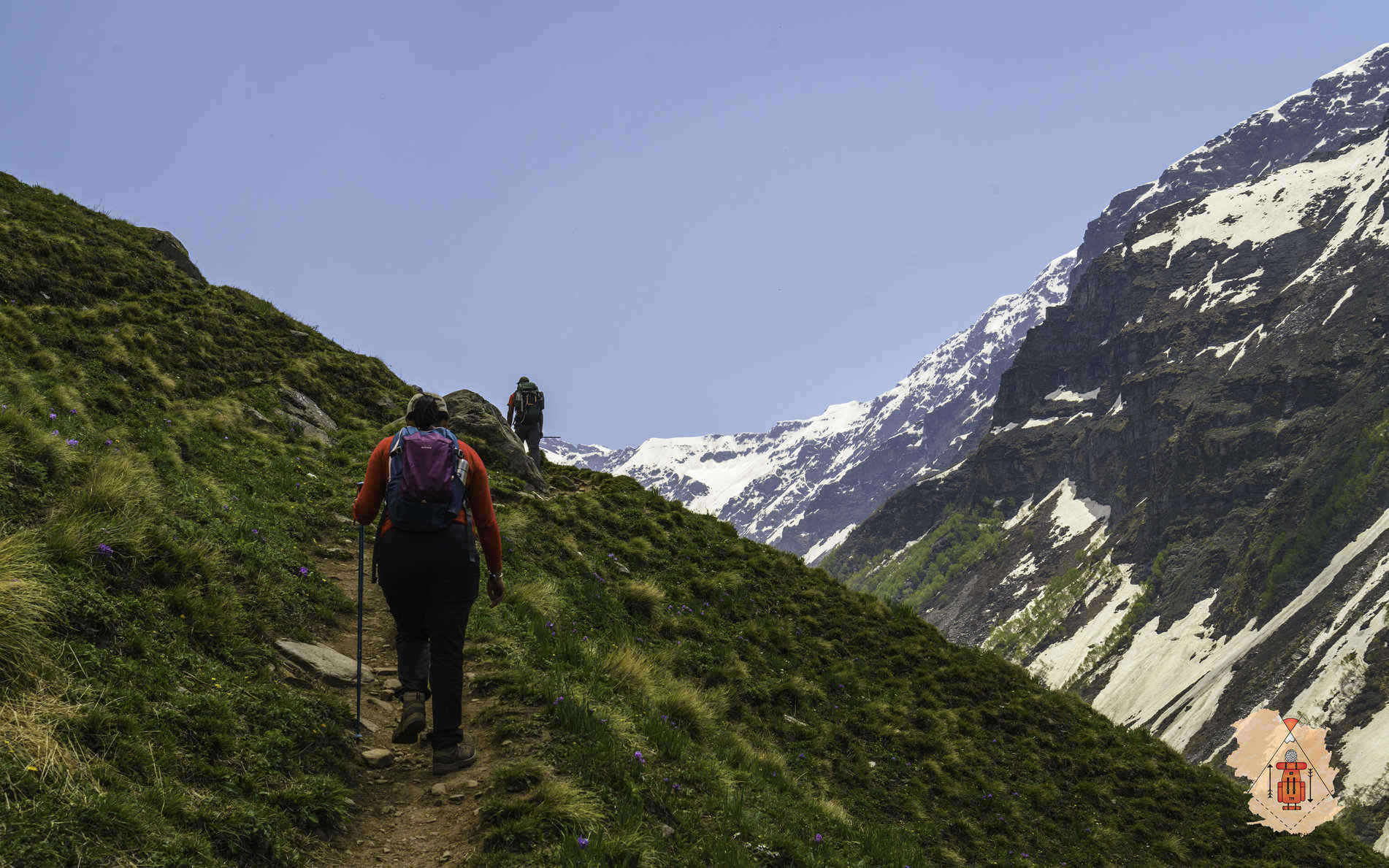
Related Tours

Sandakphu & Phalut Trek

Singalila Ridge Trek

"Trekmunk is changing the indian trekking industry"
"10 Most Promising Adventure Sporting and Trekking Companies - 2020"

" Things you do for the Passion for Travel"
Hello there, How can we help you ?
Timing: 10 am to 6 pm IST (GMT +5:30)
Whats App Us

- Cultural Trips
- Wildlife Expeditions
- Destinations
- Outdoor Programs
- Discover trekking
- Health and fitness
- Experiential learning
- Trekking tips
- Outdoor skills
- Trekking gear
Best Time to Visit Goechala Trek
There are two different seasons for Goechala Trek in Sikkim. Best time to visit Goechala depends on your interests and preferences. Spring season (March and April) is the best time to visit Goechala and witness the vibrant rhododendron blooms. Both seasons have their charm and beauty.
Goechala turns into a colourful forest with age-old rhododendrons blooming in most parts of the trail in spring. With rhododendrons blooming in shades of pink, red, white, and yellow, the entire path turns into a riot of colours in spring.
Autumn months of September to early November are the best times to visit Goechala if your interest lies in indulging in the grandeur of big mountains and soothing autumn hues. September to November is known for offering magnified views of snow-clad mountains.
June to August are not recommended. It rains heavily in the region often causing landslides and roadblocks. The campsites become tricky to navigate, and the forest area is infested with leeches.
Here is a detailed season-wise guide to Goechala Trek. Know more about the best time to visit Goechala trek and plan your trip according to your interests and preferences.
Goechala Trek in Spring (March and April) – Best Time to Witness Vibrant Flora
Spring season begins in mid-March and continues till April. The snow on the trail recedes, inviting trekkers to Goechala. It is also the best time to experience rare species of birds and animals. As winter makes its way out of the trail, the vibrant wildflowers paint the entire path in vivid colours.
Goechala Trek in March
Goechla season begins in March. At higher campsites, there will be abundant snow in March. The wildflowers at lower reaches begin to sprout. You will walk along the dense forest, floating clouds and thrilling undulated trail.
Goechala Trek in April
April is the perfect month if your goal is to walk under the thick canopy of rhododendron-laden trees. Right after Tshoka, you will start witnessing the traces of Rhododendron. The forest you walk along is dense and at some places, you will only see scattered sunrays peeping through.
April is also the best time to visit Goechala and witness the beauty of mighty Kanchedzonga and other peaks like Mt Pandim.
Goechala in Summer (May and June)
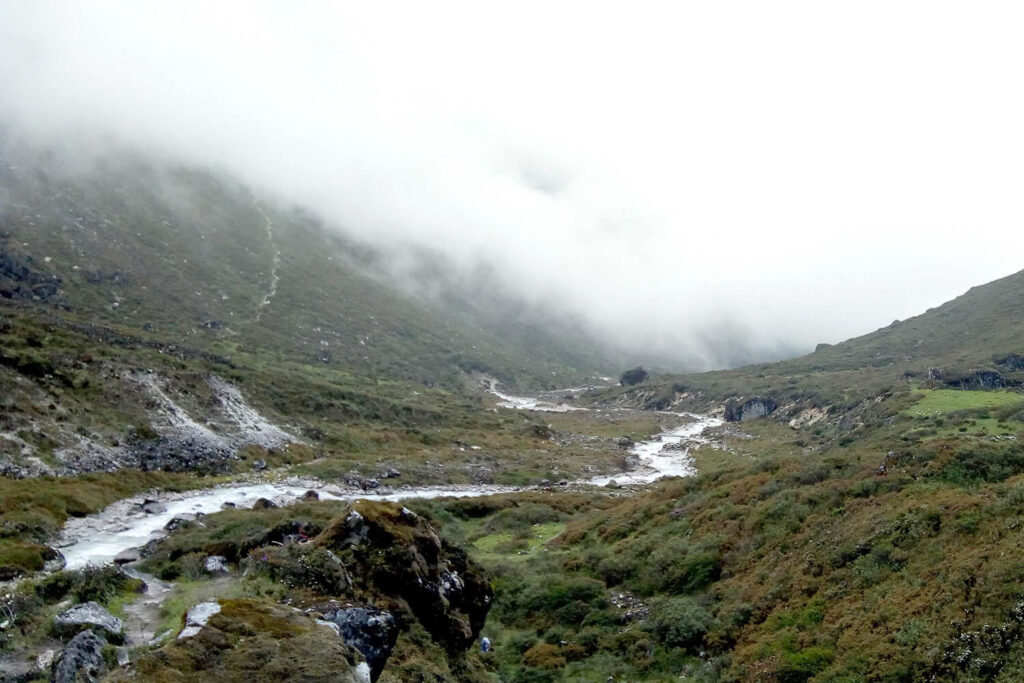
Summer season begins in May in Goechala and wraps up by early June. Goechala houses many indigenous bird species and summer is one of the best times to catch glimpses of these birds. The season offers the best of winter snow and the soothing hues of the warm and cosy summer season.
Goechala in May
Goechala in May is warmer than in April. This is also the month when you are likely to deal with mild and scattered showers. During this time, vibrant wildflowers and rhododendron blooms add vividness to the trail.
Goechala in June
The vividness of rhododendrons wither away in June. You will walk in a tranquil forest covered with oaks and pine. A splash of vivid Rhododendrons is amiss if you trek to Goechala in June. The season is wrapped by the end of May.
Goecahla Trek in Monsoon – Not recommended
Monsoon begins in the region as early as June and continues till August. Torrential rain in the Northeast often causes flash floods and roadblocks. Monsoon’s unpredictable weather and danger of landslides restrict the uninterrupted flow of batches in Goechala.
In addition to this hurdle, the trail to Goechala is heavily infested with leeches during the rainy season. It is suggested to avoid trekking to Goechala in June, July and August.
Goechala Trek in Autumn (September to November) – Perfect for Panoramic Mountain Vistas
After the monsoon season makes way for the autumn hues, Goechala begins to receive trekkers in September. People come here to bask in the glorious autumn shades and mesmerising summit views between September and November.
The season is the best time to visit Goechala trek to indulge in panoramic mountain vistas. It is also the perfect time for the magical sunrise and sunsets Goechala is known for.
Goechala in September
Goechala in September remains free from monsoon fog, and a hazy trail. By September the monsoon rain clears the dust and haze off the trail. You will have a clear blue sky with towering mountains to keep you company.
Goechala in October
By October, the Goechala trail and campsites completely embrace the autumn hues. As forest evade the splash of rhododendron blooms, rustic colours in contrast with the clear blue sky add to the beauty of the trek.
Soothing autumn hues beautify the trail to Dzongri Top. You witness shrubs along the trail with white mountains in the backdrop, picture-perfect Goechala in October.
Goechala in November
Goechla in November is equally beautiful. You will have remains of autumn hues. The view of the mountains continues to charm you. Goechala is one of the rare treks in India where mountain views can compete with some of the hikes in Nepal.
Goechala in Winter (December to February) – Recommended For Experienced Trekkers
Goechala in December will be tough to traverse on snow-covered trails. The upper campsites start receiving snowfall in mid-December making it difficult to navigate the trail.
After December, Dzongri Top, and campsites beyond Tsokha remain covered in snow. If you want to trek to Goechala in winter, you need to carry mandatory equipment for the trek. Slippery slopes, snow-covered campsites, and extreme trekking conditions make winter a difficult time to explore the trek. Trekking to Goechala in winter is suggested only for experienced trekkers.
Goechala Trek Highlights
Goechala trek in the state of Sikkim is one of the challenging experiences that offers a grand view of big mountain peaks. A long and arduous trail, the trek takes you to the Kanchedzonga National Park, a UNESCO World Heritage Site. Goechala is no doubt a challenging trek as the trekking days are long, and the altitude gains quickly. The hard climb is compensated by the enchanting landscapes throughout the trail.
The wilderness of the dense forest, the spellbinding rhododendron forest, and a portion of trail dotted with wooden logs are what you witness on your hike to Goechala. As you reach the summit, the glistening Samiti Lake and grandeur of mighty Himalayan peaks, you derive the utmost contentment while gazing at the breathtaking beauty of mountains.
Yuksom is the base camp of Goechala Trek is Yuksom, in West Sikkim. You will meet the OWLS team on Day 1 of your trek at the OWLS pick-up point in Bagdogra. The distance between Bagdogra and Yuksom is around 150 km. It takes about 6-7 hours to reach Yuksom. Goechala is a difficult trek. It spans over 10 days and climbs to an altitude of 15,1000 ft above sea level. Come prepared to tackle challenging trails and altitudes above 15,000ft.
Leave a Reply Cancel Reply
Save my name, email, and website in this browser for the next time I comment.
Related Tours
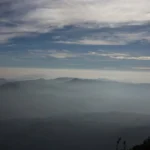
Kumara Parvatha Trek
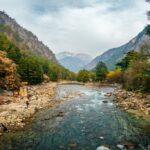
Kheerganga Trek

Dodital Darwa Top Trek
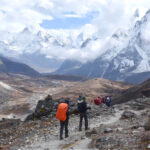
Everest Base Camp Trek – 10 Days
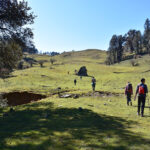
Dayara Bugyal – 4D/3N Trek

- Trekking & Travel Events
- Travel Organizations
- Himalayan Treks
- Maharashtra Treks
- Karnataka Treks
- Travel Guides
- Weekend Getaways
- Trekking Tips & Advice
Goechala Trek: The Ultimate Trek Guide for Adventure
- Trekking Destinations
Embark on an exhilarating journey into the heart of the Himalayas with this comprehensive guide to the Goechala Trek. Tucked away in the ethereal landscapes of Sikkim, Goechala is a paradise for adventure enthusiasts and nature lovers alike.
This guide is designed to walk you through every aspect of this trek: from a detailed day-to-day itinerary to insightful tips about the best seasons, fitness requirements, budgeting, and how to reach the starting point. We’ll even highlight the unique landmarks and experiences that make this trek memorable.
Whether you’re a seasoned trekker or a first-timer, our guide promises to equip you with the knowledge and confidence to conquer the Goechala Trek. So, tie your laces, pack your bags, and let’s set off on this Himalayan adventure!
- Max Altitude: 15,100 Ft. (5,227M)
- Average Trekking Fees: ₹15,000 – ₹18,000
- Distance: 75 – 90 kms
- Difficulty: Difficult
- Duration: 10-11 days
- Ideal For: Experienced Trekkers Only
- Best Season: February - June & September - November
- Region: Sikkim
Table of Contents
Goechala Trek: An Overview

The Goechala Trek is through the Kanchenjunga National Park situated in the northeastern Indian state of Sikkim . The trek provides an up-close view of the Kanchenjunga , the third-highest mountain in the world. The starting point of the trek is Yuksom , a small town in West Sikkim.
This trek covers about 77-90 kilometres . It showcases diverse landscapes such as oak, rhododendrons, pine forests, alpine meadows with vibrant wildflowers, and a dramatic panorama of the Himalayan range.
This trek spans 8-11 days , with the highest point being the Goechala View point I at 15,100 feet . The pass provides an astounding view of the Kanchenjunga, Mount Pandim and other majestic peaks. The trail offers chances to encounter unique Himalayan wildlife and exposes trekkers to the rich culture of Sikkim with its traditional Buddhist monasteries and prayer flags.
The Goecha la trek is rated moderate to difficult , requiring a good level of physical fitness. The best time to undertake the walk is during spring (April to June) and post-monsoon (September to November) . The trek is a beautiful opportunity to experience nature’s grandeur, with the area still relatively untouched by mass tourism.
Goechala Trek Difficulty & Duration
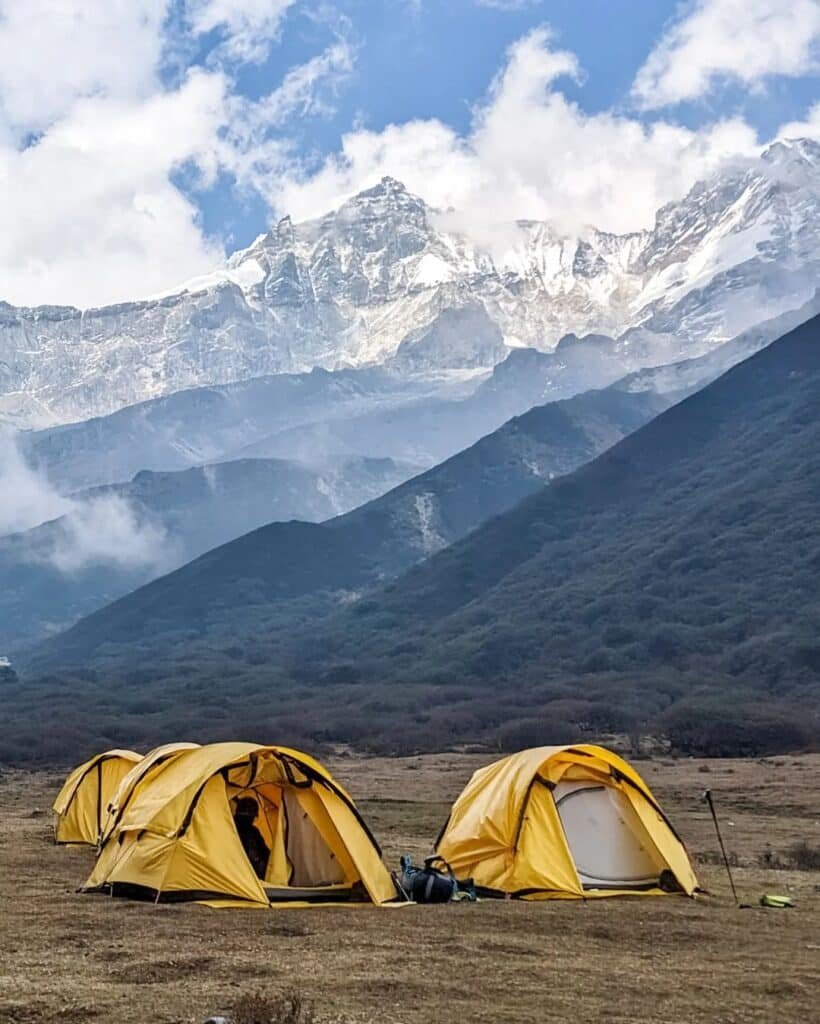
The Goechala Trek , with a difficulty level rated as difficult , is certainly not for the faint-hearted. The trek spans about 90 kilometres , typically covered throughout 8-11 days .
Each day, trekkers are expected to hike 10-12 kilometres which can take approximately 5-7 hours , depending on the terrain and individual pace. The demanding nature of the landscape, combined with the high altitude of the trek, makes it quite challenging, even for seasoned trekkers.
Regarding the physical fitness requirement, participants must be in excellent physical condition. This trek requires stamina and endurance , and it is advised to start a fitness regimen at least 2-3 months before the trek. Activities such as cardio exercises, strength training, and flexibility exercises should be included in the fitness regimen.
Another important aspect is getting acclimated to the high altitudes. With the highest point at 15,100 feet , trekkers may experience symptoms of altitude sickness . Therefore, taking necessary precautions and following a gradual ascent is crucial to adapt to the thinning oxygen levels.
With these rigorous requirements, the Goechala Trek offers an immersive and rewarding experience to those ready to take on its challenge.
Best Season for the Goechala Trek
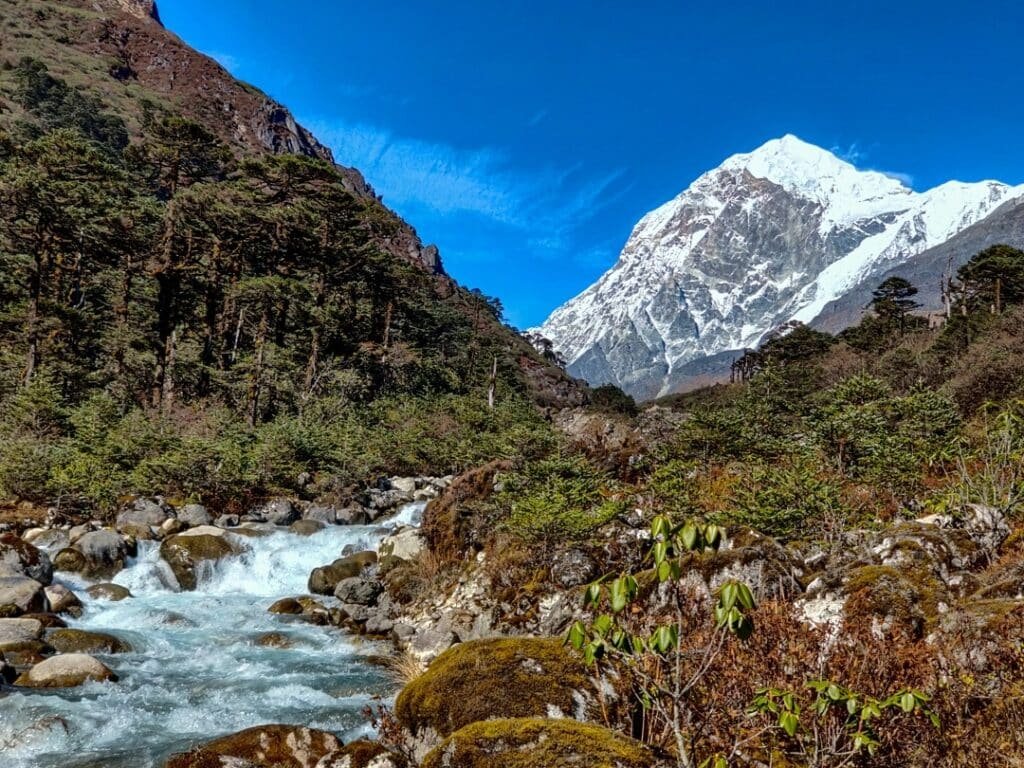
The Goechala Trek can be best enjoyed in two seasons: Summer (March to June) and Autumn (September to November).
Summer (March to June) is a great time to trek Goechala. The weather is terrific, with average temperatures between 10°C to 20°C . It’s not too cold, which makes the trek easier. In Summer, the paths are filled with blooming rhododendron flowers, which make the journey very colourful. This time is also suitable for bird watching. But there is one small problem. Summer can sometimes bring rain. So, it might get a bit slippery on the trails. Also, you might have to carry rain gear, which can make your bags heavier.
In Autumn (September to November) , the sky is more evident. Enjoying the majestic view of Kanchenjunga and other high peaks is a great time. The average temperatures during this season range from 0°C to 15°C . The weather can get quite cold, especially in the morning and at night. It’s essential to carry warm clothes. The trails are less slippery in Autumn, which makes the trek safer. But, there are fewer flowers and birds to see during this season.
In summary, both seasons have their own beauty. Summer offers a more vibrant and lively experience, while Autumn provides clearer and safer trekking conditions. Both seasons offer a fantastic view of Kanchenjunga, making the Goechala Trek a grand adventure any time you choose to go.
Costing & Budgeting

If you’re planning to undertake the adventurous Goechala Trek , it’s essential to consider the following costs.
- Firstly, the Average Trekking Fees for the Goechala Trek range between ₹15,000 – ₹18,000 . This is typically charged by the trekking organisations in India and usually includes accommodations and meals for the duration of the trek.
- Transportation to the starting point, Yuksom, is another crucial factor. Depending on your location, you may need to take a flight, a train or a bus to reach Sikkim. Flight prices differ greatly depending on the season and how far in advance you book, while train and bus prices tend to be more consistent. Therefore, planning and booking your tickets is advisable to secure the best rates.
- Although accommodation is usually included in the trekking fees, it’s essential to budget any pre or post-trek accommodation you may need in Yuksom or other parts of Sikkim.
- For the trek, you will need special Equipment & Gear . This includes sturdy trekking shoes, thermal wear, a good rucksack, and other essentials. To save costs, consider renting gear instead of buying. Many cities have shops that rent out high-quality trekking equipment.
- While Food & Water is typically included in the trekking fees, carrying extra snacks is wise. Energy bars, dried fruits, and nuts are light to carry and provide quick energy during the trek.
- Lastly, always plan for Miscellaneous Expenses . These can include personal medicines, fees for a trekking guide if not included in your package, and souvenirs.
Planning your budget well in advance will ensure you have a stress-free and enjoyable trekking experience.
How To Reach?

The Goechala Trek’s starting point, Yuksom , can be reached via flights, trains, or buses.
- By Air: The closest airport to Yuksom is Bagdogra Airport in Siliguri, West Bengal. It is well-connected with major Indian cities like Delhi, Kolkata, Mumbai, and Bangalore. Upon landing, you can take a taxi or shared cab to reach Yuksom, which is approximately a 5-6 hour drive. While this is the quickest method, it can be more expensive than other options.
- By Train: New Jalpaiguri Railway Station (NJP) in Siliguri is the nearest railway station to Yuksom. Trains to NJP are available from many major cities across India. From NJP, one can hire a taxi or shared cab to reach Yuksom, a journey of about 5-6 hours. This is generally a cheaper option than flying, and it offers a chance to enjoy the scenic landscapes of North-East India.
- By Bus: You can also reach Yuksom by bus from Siliguri, though it is less convenient as there’s no direct bus service. You can take a bus to Jorethang or Geyzing and hire a taxi to reach Yuksom. The entire journey can take around 7-8 hours.
Most trekking organisations arrange for a pickup and drop from Siliguri. However, be sure to confirm this when booking.
While flights offer the quickest way to reach the starting point, trains provide the cheapest option . Regardless of your chosen method, account for the 5-6 hours of travel time to reach Yuksom from Siliguri.
Detailed Itinerary for the Goechala Trek
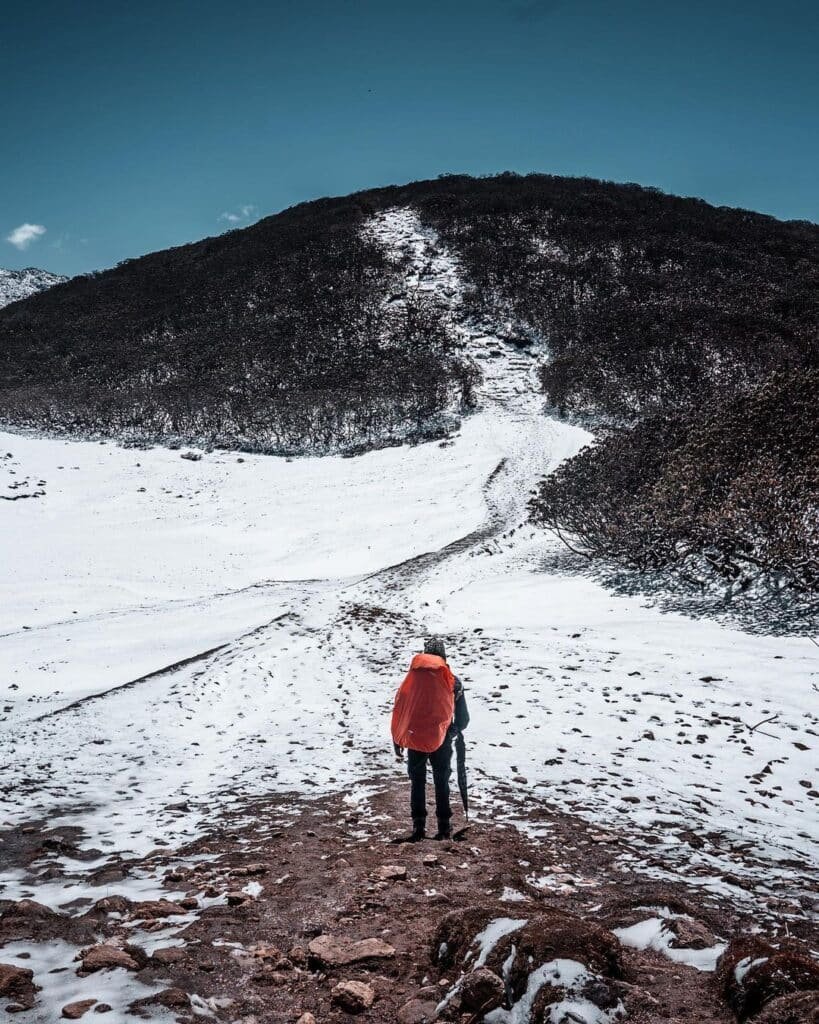
Day 1: Arrival at Yuksom (5,577 ft) . Arrive at Yuksom, the first capital of Sikkim and the starting point of the trek. It’s a quaint town rich in Sikkimese history. Spend the day exploring local attractions, like the Norbugang Coronation Throne and Dubdi Monastery.
2nd Day: Yuksom to Sachen (7,150 ft)
- Distance: 8 km
- Time: 5-6 hours.
- Start your trek through the beautiful landscape towards Sachen. As you traverse dense, moss-laden forests, cross the Pha Khola and the Tshushay Khola, two charming bridges over pristine mountain streams, before reaching the Sachen camp site.
Day 3: Sachen to Tshoka (9,650 ft)
- Distance: 7 km
- Time: 4-5 hours
- Begin the day with a hike towards the Prek Chu River, followed by a steep climb towards Bakhim.
4th Day: Tshoka to Dzongri Top (12,980 ft)
- Distance: 9 km
- Time: 5-6 hours
- Today you trek to Dzongri, the trail takes you through dense forests and alpine meadows, blooming with rhododendrons. As you ascend towards Phedang, you get your first glimpse of the mighty Kanchenjunga range. Continue hiking to reach Dzongri, your camp for the night.
Day 5: Rest day at Dzongri . Take a day off to acclimatise. You can explore nearby ridges or relax at the campsite, enjoying stunning panoramic views of the surrounding snow-clad peaks.
6th Day: Dzongri to Thansing (12,900 ft)
- Start your day with a gradual ascent to a ridge, offering panoramic views of Kanchenjunga and Pandim peaks. Follow the trail that descends through meadows and rhododendron forests to reach the campsite at Thansing.
Day 7: Thansing to Lamuney (13,700 ft)
- Distance: 4 km
- Time: 2-3 hours.
- This short trekking day takes you through grassy meadows alongside the Prek Chu River to Lamuney. The campsite offers breathtaking views of the majestic Pandim and other Himalayan peaks.
Day 8: Lamuney to Goechala Viewpoint (15,100 ft) via Samiti Lake and back to Thansing
- Distance: 10 km
- Time: 7-8 hours.
- Starting before dawn, trek towards the mystical Samiti Lake. Its serene, emerald-blue waters against the backdrop of highest mountains create a surreal atmosphere. From the lake, continue the ascent to reach the Goechala viewpoint. Witness the breathtaking sunrise over the Kanchenjunga, then begin your descent back to Thansing.
9th Day: Thansing to Tshoka
- Distance: 16 km
- Time: 6-7 hours.
- Retrace your steps, descending through rhododendron forests and alpine meadows. The descent is easier and faster, allowing you to reach Tshoka well before evening.
Day 10: Tshoka to Yuksom
- Distance: 15 km
- The final day of trekking brings you back to Yuksom. This trail will seem familiar, but the views are just as stunning in reverse. Celebrate the completion of the trek and rest for the night.
Day 11: Departure from Yuksom . After breakfast, say goodbye to the mountains and begin your journey home, carrying memories of a lifetime.
Highlights of the Goechala Trek
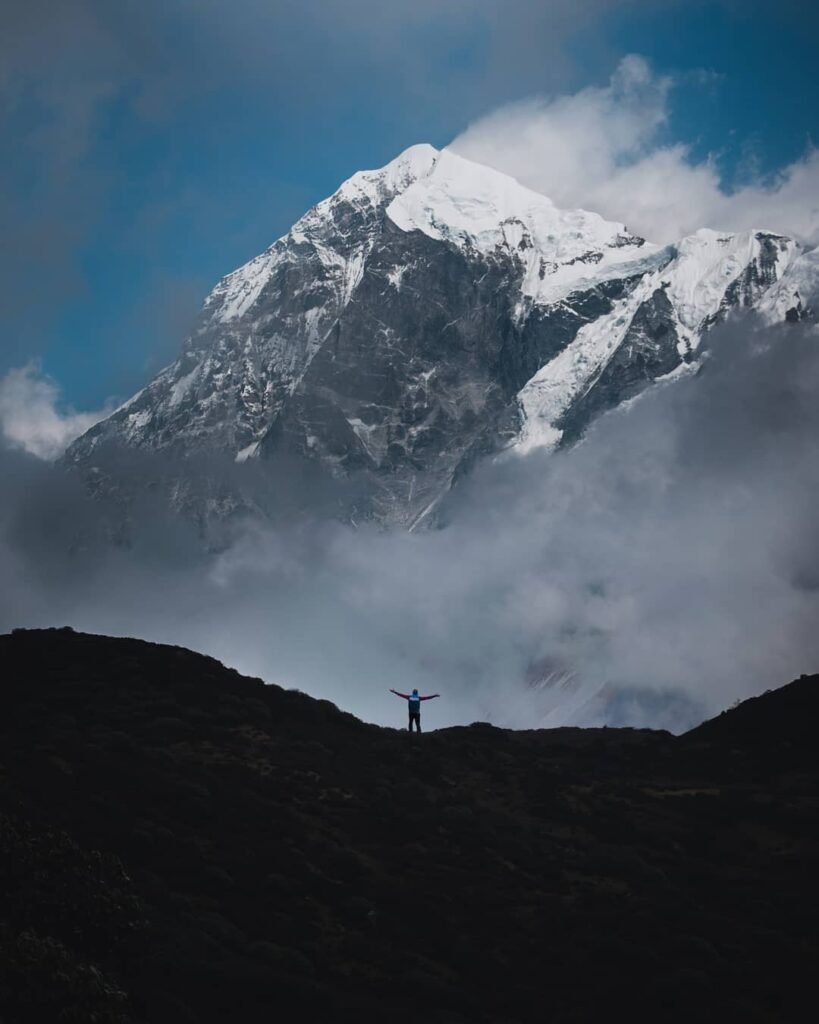
The Goechala Trek is an enchanting journey in the lap of the Himalayas, presenting an array of awe-inspiring experiences and visuals. Here are some highlights of this adventure:
- Kanchenjunga Close-up : The major attraction of the Goechala Trek is the breathtaking view of Mount Kanchenjunga, the third-highest peak in the world, from the trek’s viewpoint. You get a stunning, up-close view of this majestic mountain and other grand peaks of the Himalayan range.
- Lush Forests : The trek takes you through dense, verdant forests of rhododendrons, oaks, and pines. Walking through these forests feels like stepping into a fairy tale, especially during the spring when the rhododendrons bloom, painting the trail in various shades of red and pink.
- Vibrant Flora and Fauna : The trail offers a chance to spot unique Himalayan wildlife, such as the Himalayan Black Bear and various exotic birds. You’ll also encounter a myriad of colourful wildflowers and medicinal plants.
- Alpine Meadows : As you ascend, the dense forests give way to vast, beautiful alpine meadows known as ‘Bugyals’. These expansive grasslands, set against the backdrop of snow-clad mountains, are a sight to behold.
- Cultural Exposure : Get a glimpse into the rich culture of Sikkim, with its traditional Buddhist monasteries and fluttering prayer flags along the trails.
- Rivers and Lakes : Along the route, you cross the crystal clear Rathong River and witness the serene beauty of Samiti Lake, nestled amidst the mountains.
- Goechala Viewpoint : The sunrise from this point, casting golden hues on the Kanchenjunga, is unforgettable.
Each day on the Goechala Trek unveils a new aspect of the region’s beauty, making it a truly captivating experience for every adventurer.
Safety Tips & Precautions
Safety should always be a top priority. Here are some essential safety tips to keep in mind during the Goechala Trek:
- Go with an experienced guide and follow their instructions.
- Stay hydrated and carry an adequate supply of water.
- Pack light and carry only the essential items.
- Dress in layers to adapt to changing weather conditions.
- Respect the environment and maintain cleanliness.
- Inform someone about your trekking plans and expected return.
- Stay updated about weather conditions and local regulations.
- Avoid alcohol and smoking.
Essential Gear and Equipment for Goechala Trek
Before embarking, it is essential to pack the right gear and equipment to ensure a safe and comfortable journey. Here is a list of items you should consider carrying:
- Trekking shoes with good ankle support
- Backpack with rain cover
- Trekking gaiters
- Warm and waterproof clothing layers
- Sleeping bag suitable for sub-zero temperatures
- Trekking poles for better stability on uneven terrains
- UV-protected sunglasses and sunscreen
- Water bottles and water purification tablets
- Headlamp or flashlight with extra batteries
- First aid kit with essential medications
- Portable power bank for charging electronic devices
- Foreign trekkers need an inner line permit
In conclusion, the Goechala Trek is more than just a physical challenge; it’s a journey of self-discovery set against the awe-inspiring backdrop of the mighty Himalayas.
As you navigate through dense forests, serene lakes, vibrant meadows, and snow-laden paths, you’ll experience a profound connection with nature that is both humbling and uplifting. Whether it’s the first rays of the sun hitting the majestic Kanchenjunga or the simple joy of camping under the starlit sky, the memories will remain etched in your heart for a lifetime.
We hope this comprehensive guide equips you with all the necessary information to successfully undertake this trek. So, embrace the adventure and let the magic of the Himalayas inspire and transform you. Happy trekking!
Kuari Pass | Bhrigu Lake | Brahmatal Trek | Sar Pass Trek | Shrikhand Mahadev Trek | Buran Ghati Trek | Bali Pass Trek | Kareri Lake Trek | Rupin Pass | Tarsar Marsar Trek
- trekking guides
- No comments yet.
Add a comment
Leave a reply · cancel reply.
Your email address will not be published. Required fields are marked *
This site uses Akismet to reduce spam. Learn how your comment data is processed .
- Share via...

- Trekking in Sikkim Region
Sikkim Goechala Trek in Winter : September, October, November, December 2023 and 2024

- Jun 10, 2023
- Ashmita Trek & Tours
Embarking on the Goechala Trek in the winter months of September to December is an extraordinary experience that takes you through the stunning landscapes of Sikkim. With its towering peaks, pristine lakes, and mesmerizing views of the Kanchenjunga, the third-highest mountain in the world, this trek offers a unique and exhilarating adventure. Whether you plan to take on the challenge in 2023 or 2024, heres why the Goechala Trek in winter should be on your bucket list.
Table of Contents
Why visit goechala trek in sikkim.
- Discover the beauty of the Goechala Trek in Sikkim, an awe-inspiring trail nestled in the heart of Sikkim.
- Experience the treks diverse terrain, ranging from lush forests to rocky slopes and snow-covered paths.
- Learn about the cultural significance of the region and interact with the friendly locals along the way.
- It is located in the eastern part of the Himalayan range, bordering Nepal, Bhutan, and Tibet.
- Trekking in the Goechala region requires obtaining permits. These permits can be obtained from the Sikkim Tourism Office in Gangtok or through registered trekking agencies.
Goechala Trek in Winter: A Unique Adventure
- Enjoy the lesser crowd and a more peaceful environment as you traverse through the snow-clad landscapes of Goechala Trek in Winter .
- Witness breathtaking views of the Kanchenjunga and other surrounding peaks against the backdrop of a winter wonderland.
- In winter, the trail can become more challenging due to icy patches and slippery sections. Trekking poles, sturdy footwear with good traction, and crampons are recommended for better stability and safety on snowy terrain.
- On clear days, you can witness the snow-capped peaks of Kanchenjunga and its neighboring mountains glistening in the sunlight.
Goechala Trekking in Sikkim: Weather Conditions
- Weather conditions play a significant role in planning and executing the Goechala Trekking in Sikkim.
- Undertaking the Goechala Trek in winter offers a unique and challenging experience. The weather during this season can be harsh, with temperatures ranging from -5°C to 10°C (23°F to 50°F) during the day and dropping further at night.
- Snowfall is common, especially at higher altitudes, transforming the landscapes into a winter wonderland. It is crucial to be well-prepared with appropriate cold-weather gear, including insulated jackets, thermal layers, hats, gloves, and waterproof boots.
- Proper acclimatization is essential when trekking in higher altitudes to avoid altitude sickness. The Goechala Trek gradually gains elevation, allowing trekkers to acclimatize as they ascend. It is crucial to drink plenty of water, take regular breaks, and listen to your body's signals to prevent any altitude-related issues.
Goechala Trek 2023
- The Goechala Trek 2023 offers a plethora of stunning highlights that make it a memorable and captivating adventure in Sikkim.
- Witnessing the enchanting sunrise over the Kanchenjunga from the Goechala Pass viewpoint is one of the trek's most awe-inspiring highlights.
- Explore the mesmerizing beauty of Samiti Lake, a pristine turquoise gem nestled amidst the snow-capped peaks. The reflection of the surrounding mountains in the calm waters creates a picture-perfect scene.
- Experience the thrill of walking through lush rhododendron forests, adorned with vibrant blooms during the spring season. The colorful display adds a touch of natural beauty to the trek.
- Encounter the diverse and rare flora and fauna of the region, including various species of rhododendrons, orchids, and colorful birds. Keep an eye out for the elusive red panda, which is native to the region.
Goechala Trek 2024
- If you are planning your Goechala Trek 2024 , you must plan in order to advance to secure permits, as they are required to enter the Kanchenjunga National Park.
- Choose an experienced trek operator or guide who can provide you with the necessary support and expertise.
- Prepare yourself physically and mentally for the challenges of the trek by engaging in regular exercise and building endurance.
The Goechala Trek in winter is an extraordinary adventure that allows you to experience the unparalleled beauty of Sikkim and the majestic Kanchenjunga range. Whether you plan to embark on this trek in 2023 or 2024, the winter season offers a unique perspective, with snow-covered landscapes and a tranquil ambiance.
Why Travel with Ashmita Trek and Tours?
We, Ashmita Trek and Tours, are a trusted and government-certified local travel agency working in the travel/leisure industry for 16 years now. We are travel experts and provide adventurous packages in the Himalayas region, Our packages are precisely designed to offer a lifetime venture and unparalleled memories to our guests.
Below are some of the reasons that make us the best travel partner in the Himalayas:
- Fully Accredited by Indian Tourism Board
- Received Tripadvisor Certificate of Excellence Hall of Fame from 2015 to 2019
- TripAdvisor travelers choice 2022
- We are a local Travel and Trekking Company, so; we have good local destination knowledge to make your trip more enjoyable.
- Recommended by Lonely Planet
- Expert team
- 24/7 support
- Safe and secure payment gateway
- No hidden charges and full transparency of our policy
- Responsible & eco-friendly tourism
- eco friendly tourism
- eco travel company
- Travel to Sikkim
- Best Treks in India Hiamalayas
- Trekking in Sikkim
Send an Inquiry
Recent posts.
- We got Honored by 2023 Traveler's Choice Award and 2023 Certificate of Excellence
- How to Choose the Best Trekking Company for You
- Sikkim Goechala Trek in Spring : (March to May), 2024 and 2025
- Best Base Camp Treks in Nepal, 2023/2024- EBC & ABC Treks Guide
- Best Winter Treks For Beginners and Experienced Trekkers in the Himalayas 2023 and 2024
Related Posts
- SINGALILA PHOKTEY DARA TREK BLOG
- SIKKIM KANCHENJUNGA GOECHALA TREK- A ONCE IN A LIFETIME EXPERIENCE
- Top 7 Best Treks in Sikkim - | Sikkim Trekking Guide
- Best Adventures in Sikkim
- Altitude and Health Tips
- Annapurna Region Trek Blog
- Company Achievement
- Culture and Lifestyles
- Darjeeling Singalila Region Trek Blog
- Darjeeling Travel Guide
- Everest Region Trek Blog
- Himalaya Green Trails
- Himalaya Trek Gear Review
- Himalaya Trekking Tips
- India Travel Guide - Perfect Introduction to India
- Langtang Region Trek Blog
- Latest Updates News
- Nepal Travel Guide
- Nepal Trekking
- Offbeat Trek in Darjeeling
- Official Updates
- Sikkim Travel Guide
- Travel Experience
- Uncategorized

Goechala - An Unforgettable Journey in the Kanchenjunga National Park
Winter in the Himalayas is giving way to Spring and the balmy breeze in the mountains makes us dream of the summer on the way. As we approach the warmer months, one trek in particular attracts our attention – we are talking about the beautiful Goechala Trek in Sikkim. Situated amidst the vast expanse of the Kanchenjunga National Park, this trek promises a rendezvous with nature's grandeur.
A Captivating Sanctuary in Nature – The Kanchenjunga National Park
Located in the Eastern Himalayas within the state of Sikkim, lies the pristine wilderness of the Kanchenjunga National Park. Spanning over 2,035 square kilometres, this sanctuary of natural beauty is named after the majestic Mount Kanchenjunga, the third-highest peak in the world. The park's diverse landscapes range from lush subtropical forests to rugged alpine meadows and glaciers, showcasing unparalleled beauty.
Within its verdant embrace thrives a rich biodiversity, with over 2,000 species of flowering plants, including rare orchids like Dendrobium, Rhododendron, and Primula. Towering trees such as oak, rhododendron, birch, and fir dominate the landscape, while elusive creatures like the snow leopard, red panda, and Himalayan black bear roam its rugged terrain. The park also boasts a vibrant avian population, with over 200 species of birds gracing its skies.
Moreover, the Kanchenjunga National Park is not merely a haven for wildlife; it is also steeped in cultural significance, being home to indigenous communities like the Limbu, Rai, and Sherpa. Their traditions and livelihoods are intricately intertwined with the park's natural resources, serving as custodians of its rich heritage for generations to come.
Goechala Trek in Kanchenjunga National Park, a true test of resilience
Goechala Trek not only showcases the splendid beauty of nature but also epitomizes the spirit of adventure. While often touted as the most romantic trek, it is not merely a stroll through idyllic landscapes; it is a test of one's physical endurance and mental fortitude. Spanning a distance of 90 kilometres over 9 days, with an ascent to an altitude of 15,100 feet, the Goechala trek demands a good level of fitness and determination. Yet, it is amidst these challenges that true bonds are forged, making it an ideal adventure for friends, partners, or even solo trekkers seeking to push their limits and discover the depths of their capabilities.
As the saying goes, "the best view comes after the hardest climb," and nowhere is this truer than atop the Goechala Pass. From the crimson hues of Rhododendron flowers to the ethereal beauty of Samiti Lake, each step of the journey unveils a new facet of nature's splendour, leaving an indelible mark on the hearts of those who dare to tread its path.
Prepare for the Adventure
Before embarking on this epic journey, it is essential to ensure adequate preparation. The Goechala trek is rated as moderate to difficult, requiring a good fitness level and acclimatization to high altitudes. Seeking guidance from experienced trek operators like Trek The Himalayas can provide valuable insights and tips to maximize safety and enjoyment throughout the expedition.
Tips for preparation
1. Start a regular exercise regimen at least 2-3 months before the trek. Focus on building endurance, strength, and cardiovascular fitness through activities such as hiking, jogging, cycling, and strength training.
2. Practice carrying a backpack with gradually increasing weight to simulate the load you'll be carrying during the trek.
3. Due to the high altitude of the trek, it's essential to acclimatize properly to prevent altitude sickness. Consider arriving a few days early in Sikkim to allow your body to adjust to the altitude gradually.
4. During the trek, ascend gradually, take frequent breaks, and stay hydrated to help your body acclimatize effectively.
5. Pack only the essentials to keep your backpack light and manageable. Opt for lightweight, moisture-wicking clothing that can be layered for warmth. Essential items include a sturdy pair of trekking boots, a warm sleeping bag, a waterproof jacket, insulated layers, a first aid kit, sunscreen, sunglasses, a hat, trekking poles, and a water purification system.
6. Hydration is crucial at high altitudes to prevent altitude sickness. Drink plenty of water throughout the day, even if you don't feel thirsty.
7. Consume a balanced diet rich in carbohydrates, protein, and healthy fats to fuel your body for the trek. Pack high-energy snacks such as nuts, dried fruits, energy bars, and electrolyte-rich drinks for quick boosts of energy.
8. Mental resilience is as crucial as physical fitness for tackling the challenges of the Goechala Trek. Stay positive, maintain a determined mindset, and be prepared to push your limits.
9. Before undertaking any strenuous trekking expedition, consult with your physician to ensure you're in good health and discuss any pre-existing medical conditions that may affect your trek. Carry essential medications, including those for altitude sickness, gastrointestinal issues, pain relief, and allergies.
10. Familiarize yourself with the Leave No Trace principles and abide by them to minimize your environmental impact during the trek. Respect the local culture, customs, and traditions of the indigenous communities residing in the region.
Goechala trek is not merely a trek; it is an odyssey of self-discovery amidst the untamed beauty of the Himalayas.
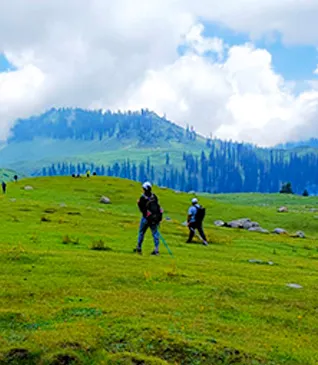
Doodhpathri Trek
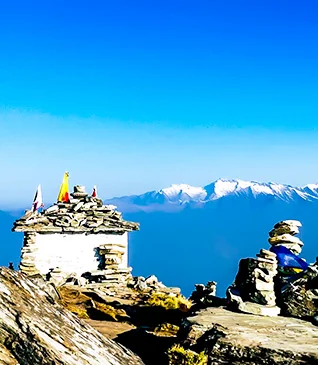
Chopta Chandrashila Tungnath Trek with Deorital
Uttarakhand
.webp)
Ranthan Kharak Trek
.webp)
Nafran Valley Trek
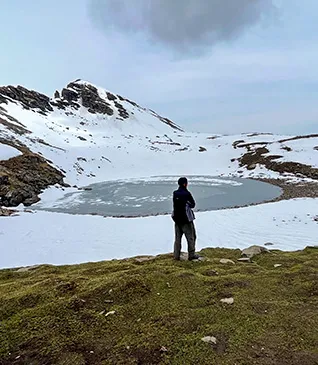
Bhrigu Lake Trek
Himachal Pradesh
.webp)
Dayara Bugyal Trek
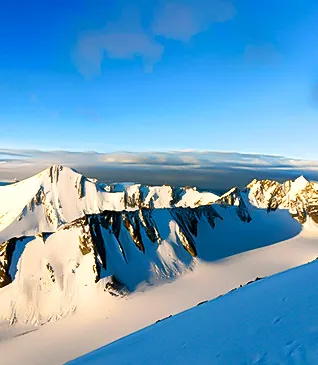
Twin Peak - Kang Yatse II, Dzo Jongo, Markha Valley Trek
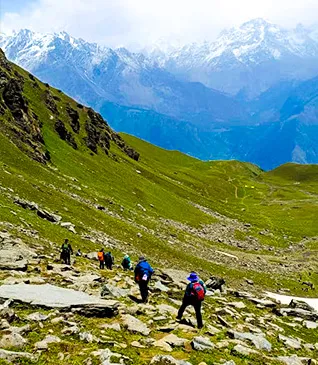
Sar Pass Trek
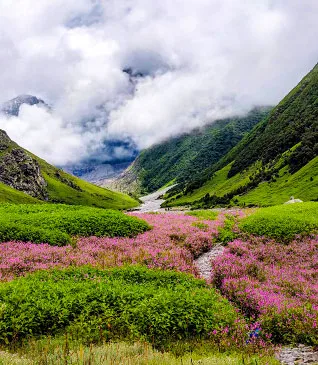
Valley of Flowers Trek
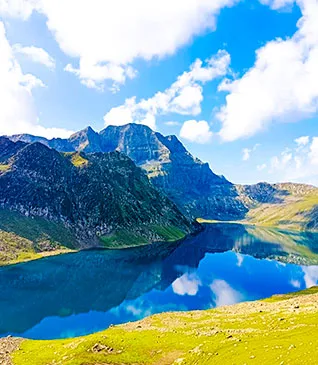
Tarsar Marsar Trek
Jammu and Kashmir
.webp)
Rupin Pass Trek
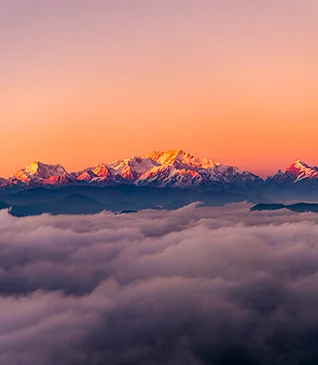
Sandakphu Trek
West Bangal
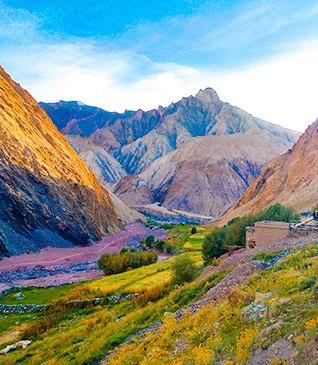
Markha Valley Trek
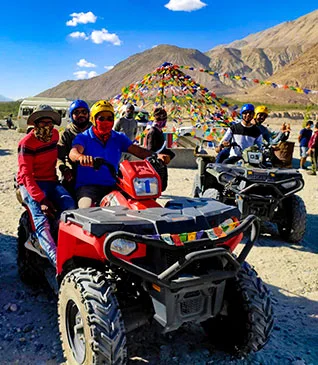
Leh Ladakh Multi-Sports Trip
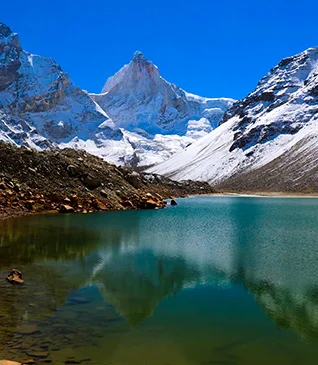
Kedar Tal Trek
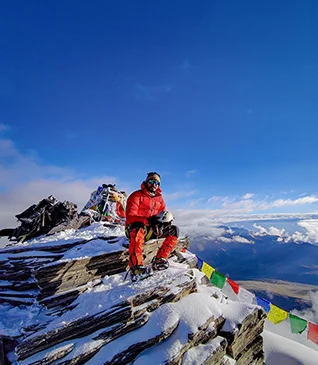
Kang Yatse II Peak Trek Expedition
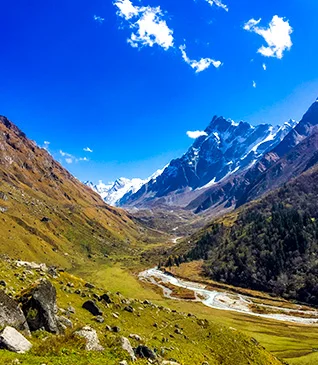
Har Ki Doon Trek
.webp)
Hampta Pass Trek
.webp)
Gaumukh Tapovan Trek
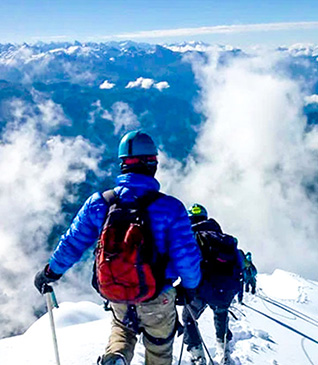
Friendship Peak Expedition
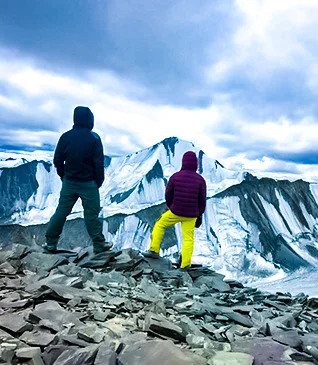
Dzo Jongo Peak Trek Expedition
.webp)
Buran Ghati and Rupin Pass Two Mesmerizing Treks in Himachal
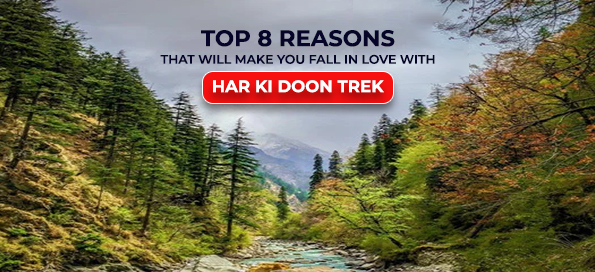
Top 8 Reasons That Will Make You Fall in Love with Har Ki Doon Trek
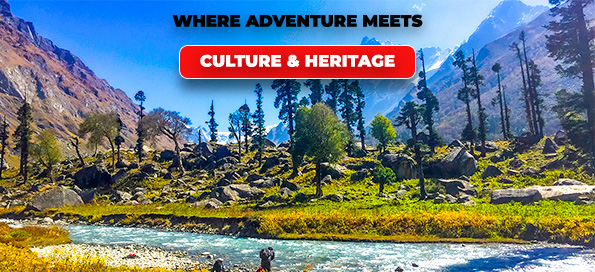
Where Adventure Meets Culture & Heritage
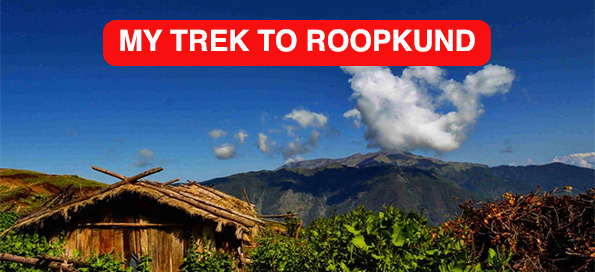
MY TREK TO ROOPKUND
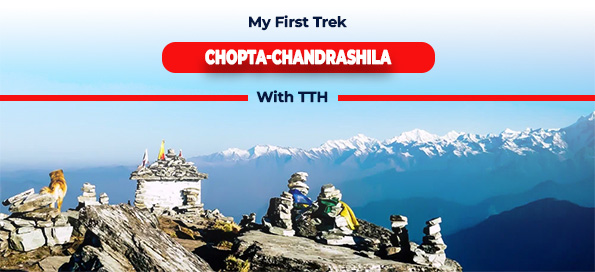
My First Trek Chopta-Chandrashila with TTH
.jpg)
A Tale of Har Ki Doon Trek
.jpg)
Bramhatal Trek
.jpg)
How to measure Chadar trek (and perhaps some bit of life)?
.jpg)
My First Himalyan sojourn…a dream come true!
.jpg)
How it feels to celebrate your birthday at Chadar
Rent A Gear
Trek Articles
Quick Links
Trekking & Hiking
Mountaineering
Multi Sports
Himalayan Pilgrimage
Website Privacy
Terms & Condition
Contact Info
Get in touch with us. E-mail us Monday-Saturday (10 AM to 6 PM)
Address: Trek The Himalayas, Kaintura Plaza, Badrinath Road Tapovan, Rishikesh - 249201 Uttarakhand
Phone: 8191004846
Email: [email protected]
2010 Trek The Himalayas. All rights reserved

Call Now: +917407248200 Email: [email protected]
Book the Goechala Trek now with locals and experience the best hospitality. We are a trusted local-based company in Yuksom
The Goechala trek in Sikkim is unquestionably one of the top treks in India. The great mountains, stunning environment, rich rhododendron forests, and wild flowers all around provide a spectacular perspective. To begin the most thrilling trek of your life, simply contact Glacier Treks Adventure.
Inr.16,000 9Night/10Days
Duration 9Night / 10Days
Maximum Altitude 4943 Meter
Goechala trek distance 90Kms
Goechala trek Grade Difficult
Region Sikkim Himalaya
GOECHALA TREK UPCOMING 2024
May-4, 6, 11, 12, 18, 19, 25,26
Best Time to go
Best Month April,May and September to December
Available offers
- At the time 10 person booking, complimentary for 1person off
- For Youtuber, for blogger,youtuber those have subscriber above 100K - 100% Off
- Free of cost those have 100K subscriber
- travel writer who has blog post in diffent travel website 50% off
Here is the quick guide to navigate through Goechala Trek page
Goechala trek map, goechala trek best time, goechala temperature and weather, goechala trek cost, goechala trek route, goechala trek height, documents required for the trek by indians and foreigners, goechala trek package, goechala trek distance.
- Why Goechala trekking is so extraordinary
- Why Booking with Glacier Treks Adventure
- Top Reviews Of Goechala Trek
- How To Reach Goechala
- Cost Includes & Excludes
- Goechala Trek: Cancellation Policy
- What To Pack For Goechala Trek
- Fitness required for Goechala Trek
- Cover The Place
Main Attraction Of The Place
Goechala trek itinerary, is goechala trek safe.
- Frequently Asked Questions About Goechala Trek
- Traveler’s story
Connectivity On The Goechala Trek

There are quite a couple of routes that the trekkers might take to reach the highest point of the Goechala trek . Depending upon our expertise, feasibility, and convenience, we will take the one that takes you through Dzongri via Phedang, all the way to Thangsing, and up to Goechala.
The trek starts from Yuksom , the basecamp from where you start this trek on foot. Once you are onto the tracks, your next stop is Sachen, and you will pass through many mountain bridges on your route to Sachen, where you can spot animals like mule and yak.
Our next destination is Tshoka via Bakhim , and this way is a slight challenging climbing. There are dense forests full of rhododendrons and alpine berries to lighten up the way and get your trek more lively.
The following stop is Dzongri which is a significant milestone of this trek. Here you can explore the magnificent sun rise in the morning . Later you cross through Thangsing, Lamuney, Samiti Lake, and then eventually reach Goechala, your summit.
One also cannot go to Dzongri and trek uphill from Phedang, but that would lose the essence of the whole trek. So when we chose the Gochala trek map, we strongly follow the mentioned roadmap to provide the ultimate happiness to our trekkers .
Obviously, when you plan traveling Goechala, all you want is to enjoy the trip to the optimum. To start the quintessential journey, all you need is the best season to enjoy the trek and keep yourself safe. As with most of the high altitude treks, there are two main seasons for the Goechala trek .
- Spring season
- Autumn Season
One cannot choose any particular season because choosing a season allows you to visualize just a part of it. While spring is more romantic, early winters are vibrant with lots of sharp colors . So it is upto you to decide the Goechala Trek best time that suits your preferences. From late June to early September, it is smarter to dodge the trip due to heavy storms. During January and February, the temperature is occasionally below 21 degrees Celsius. Therefore, the trip occurs occasionally under the supervision of specialists. During summers, the temperature is between 14 and 23 degrees Celsius; that can drop to 6 to - 2 degrees Celsius after sunset.
Goechala Trek In December
The best month to visit Goechala Trek is from September to December . You get the best perspective of the mountains with a beautiful sunrise and sunset. The freshness of the trip increases more during winters as the Sikkim Goechala hike turns out to be exciting with magnificent views. The winters are mainly known for their crystal clear views of the mountains . From the end of November, it becomes freezing at Dzongri and higher. Also, being at a very high altitude, the chances of snowfall is high. The trek almost looks like the misty, mossy forest under the dazzling blue winter sky.
There are two main seasons to visit Goechala, one is spring to witness the flowers blooming every where. The other is Autumn or early winter to enjoy the freezing temperatures with white mountains.
Goechala Trek In April
April and May is springtime or flower blooming time . Flowering starts as early as March in the lower elevation and gradually towards the higher altitude at the end of spring. Rhododendron and Giant Magnolia are the two most famous species of flowers, along with several other wildflower species. A cloudy or misty atmosphere is a typical phenomenon that we experience during spring. However, clear mountain views are not uncommon, especially during the morning.
For bird watching, this is undoubtedly a better season to visit . Snow lovers can see snow there until May at a higher altitude. You may witness occasional snowfall during this season. When that happens, the complete upper reaches of meadows get wrapped in white snow to glorify the beauty.
Sikkim region is known for its moist weather condition, almost round the year. As the altitude increases, dampness adds on top of the natural cold conditions . The Sikkim Goechala Trek can be done throughout the year, though it's much more pleasant in some weather conditions than others. The weather prevailing at the Goechala Trek depends upon the season.
Usually, the minimum temperature of a place is attained early in the morning, from 3 to 5 am . There are a few days during the Goechala trek (one being the Dzongri top and another to Goechala) when you have to leave camp early in the morning.
As discussed in the previous section, there are two main trekking seasons, and we have discussed the temperature conditions of the same. Keeping that background details in mind, let's jump deeper into the weather of these two seasons.

- The temperature in spring/summer: Expect the minimum temperature to be around 0°C at Dzongri and Lamuney. At Goechala ViewPoint 1, also known as Sunrise Point, expect colder temperatures, especially in the morning. Temperature can dip to – 5°C. Earlier in the season will lead to lower temperatures.
In summer temperature : Minimum: 0°C Maximum: 20°C
In spring temperature: Minimum : -5°C Maximum: 15°C
- The temperature in autumn/winter: The environment becomes colder, and the temperature will go down. Temperatures fall moreover in late October/November. In November, the temperature may fall as low as -5°C to -10°C at Dzongri and -10°C to -12°at Lamuney. Do account for strong wind at times which makes you feel even colder. The temperature inside the tent will be around 10°C warmer than that of outside. During the daytime, the temperature will be calm and may vary from 5°C to 20°C depending upon altitude.
In summer temperature : -10°C Maximum: 10°C
In spring temperature: Minimum : -12°C Maximum: 7°C
Keep in mind; the Goechala weather is perpetually unstable. With the blink of an eye, a cloud can come and take away a mountain view, and a blow of wind can nearly knock you off your feet on a high pass. It just adds a little more adventure to the trek. Despite the season, you should always pack an extra pair just in case . We always try to keep our team updated with the current Goechala temperature and weather conditions to continue happening and safe trekking .

Glacier Treks Adventure is committed to offering exceptional value, ensuring that our pricing reflects the quality and comprehensive nature of the experiences we deliver. Goechala trek cost is Inr.18,000 per person for the Indian trekkers including transportation pick and drop and for the International trekkers cost is $300 per person including only Yuksom to Yuksom, and both for Indian Trekkers and international trekkers complimentary accommodation with break fast and dinner at Yuksom, and during the trek, all like breakfast, lunch, dinner, snacks, tea, etc., and all tents, sleeping bags, mats, etc. , which can further fluctuate in the offers that we provide from time to time. In our package, transportation is include, and we can accomodate in one car 7-8 person cab type Sumo Gold and Mahindra Bolero.like travel from NJP railway station to Yuksom pick-up and drop-off at the railway station. How to travel arrangement by travel company? . We will create a WhatsApp group before one week of the travel date of participant, and according to travel company guideline following the information and reach to Yukdom.
What it is possible this custom trek? Yes We can arrange a customised package based on the client's dates and time, so the price is different than a fixed departure, and of course, the service is also different, but service is always provided regardless of budget. Our main goal is to provide our trekkers with an unforgettable experience. Simply leave your worries behind. book your trek with us and pack your bags to start an adventurous and breathtaking journey.
Cost Includes
- Accommodation : In Yuksom room-stay on a triple sharing basis. dinner and breakfast by self at Yuksom
- Equipements : While on the trek, we will provide you with A Shape/Dome tent /Alpine trekking tents on twin sharing basis. We would provide a pure down feather Sleeping bag with some thick Camping mattresses and other essentials.
- Meals :We provide pure veg meals during the trek except for the egg.
- Yaks/Porters: For carrying camping equipment, meals, vegetables.
- A professional trekking guide and kitchen staff would follow the group.
- Entry fee and permit fee etc., included.
- First Aid medicine kit
- Oxygen cylinder
Cost Exclusion
- Transportation : Transportation like travel pick up and drop from Siliguri, those person taking service of Transportation from us like pick up and drop and mostly our Main pick up point is Siliguiri Junction. those participent come to in NJP and Baghdogra should be come to our pick point Siliguri.
- Air ticket any domestic or international flight ticket.
- Any charges for carrying personal porter for still/video cameras and personal luggage etc. Alcohol, soft drinks, bottled water, beverages, etc. Personal expenditures like handouts, telephone calls, laundry, etc.
- Any meals/during your travel in the car.
- Any costs arising cause of disaster circumstances such as landslides, roadblocks, bad weather.
- Travel insurance.
- Transportation
- Bag off loading
- Please note who will not carry the luggage byself in trekking and thos want to put luggage on yak porter and for this things you will be pay additional Inr 2800 at time of your trek booking.we do not accept in the last moments.
From covering dense forests, monasteries, mountain bridges, rhododendron flower meadows, our team travels through the best Goechala trek route . The route that Glacier treks adventure follows to make your trip more exciting and memorable is as follows:
Our journey begins from here. Take a drive to Yuksom (150km). The 8-hour drive runs parallel to the Teesta river, beginning a beautiful relationship with Sikkim. You will be welcomed in a guest house and instructed about the tour, trekking route, environmental conditions, and other rules that you need to follow during the trek.
The first destination of our trek, Sachen at 7200 ft and taking approximately 6 hours. The valleys will lead you through tiny villages and dense forests where trekkers ordinarily spot yaks and mules. The path takes you through pristine rivers, orchids, and the enthralling sight of Tshushay Khola waterfalls.
the 8km trek to Tshokha takes about 5-7 hours due to a steep elevation and challenging hike. The forested Bakhim region, plantations, and the Prek Chu river's crystalline waters take you to the Tibetan refugee settlement of Tshokha.
Waking up to the sunrise peeking through Himalayan summits, which will already give you the breathtaking sight. Today's trek will take 9-10 hours. Within minutes the trail moves to a steep and rocky ascend, so step cautiously over stones and pebbles. The trekkers walk ahead amidst thick, red rhododendrons. The rest-stop at Phedang is precisely in the midst of today's trip. The trekkers reach Dzongri with the backdrop of snowy mountains and little Buddhist worship places.
The pictorial view of resplendent peaks of Kanchenjunga, Kabru, Mt. Pandim, Koktak, and a host of other summits will give you chilling vibes. Soak in this picturesque view before trailing forward to Thansing. Beautiful and clear descend to Kokcharang on the way to Thansing.
Lamuney and is the easiest trek in this adventure. The leisure tracks today help your body to rest and get habitual to the altitude. The beautiful trail takes you through meadows and overstretched pastures on both sides.
Start the day early to avoid the harsh climate later. Crossing Samiti Lake, you will start a steep ascent to the Geochala viewpoint to elevate 15,100ft one hour into the trek. Give some time and gasp in the sunrise as it casts a claret hue atop the white peaks. Once again, the picture of Kanchenjunga and other summits will fascinate your heart and soul.
Note: We follow the reverse route to reach our Basecamp, Yuksom from where we initially began our journey. The trek completes in 10 days and in these you will climb 4700 meters and return back.
Goechala is a high-altitude mountain pass that offers a beautiful panorama of the southeast face of the mighty mountain Kanchenjunga. The Goechala pass is the base camp of various neighboring mountains as well. Trek to Goechala is waved off from Yuksom and travels through untamed lands coupled with the huge mountain peaks. The trek is frequently entitled 'Walking in Paradise .
Accessible Goechala trek height is 4700 meters , also known as Goechala viewpoint 1 or sunrise point, and it is the last point where the trekkers are allowed.
With effect from spring 2017, trekkers are NOT allowed to go ahead of Goechala Viewpoint 1, i.e., Goechala Sunrise Point. In the past, trekkers have reached View Point 2/Goecha Lake, situated at an altitude of 5000 meters. However, this is NOT a possibility anymore . This limitation is seemingly due to Snow Leopard's presence captured through night vision camera traps in recent times around ViewPoint.

How To Reach Goechala?
To reach Goechala, you must initially reach Yuksom in Sikkim. Your trek begins and concludes here. Yuksom is around 150 kms from the conjuncture of Siliguri, New Jalpaiguri (NJP), and Bagdogra in West Bengal. You can arrive at NJP/Siliguri/Bagdogra by train or air. The place you reach decides on how you proceed.
The nearest airport to Yuksom is Bagdogra. Bagdogra is Siliguri's airport. Bagdogra has decent connectivity from Kolkata, Delhi, Mumbai, Bangalore, and Hyderabad by air. If you reside near any of these cities, you can easily arrive in Siliguri by flight.
You will arrive at NJP, which is the station area of Siliguri. Utmost trains to NJP depart from Kolkata. The North eastbound trains from Delhi also reach directly to NJP without visiting Kolkata. The trains from both Kolkata and Delhi manage to get booked very hastily.
If flights are too costly and trains are crowded, you can fly to Kolkata and catch a bus to Siliguri. The journey is lengthy, and it takes almost 14 hours. The only benefit is that you get sleeper buses, and the roads do not deviate too much.
Once you have reached Siliguri, comprehend this guide to arrive in Goechala.
You can either rent a private cab directly to Yuksom from Siliguri or go by shared transports. If you hire a car, there is no hustle concerning time. The entire journey demands approximately 8 hours. If you prefer to get the shared cab, it will require a switch at Jorethang. Your trip will be divided into two parts, splitting up at Jorethang .
Siliguri to Jorethang
First, catch a shared cab to Jorethang from outside the bus stand at Siliguri. The drive takes around 4 hours to cover 87kms. Then catch a shared cab to Yuksom from the bus station at Jorethang.
The last shared taxi leaves by 1.30 pm from Jorethang to proceed towards Yuksom. Ensure you reach Jorethang around noon to be safe. You must depart from Siliguri at 7 am to catch the bus. It is only possible if you have come to the city the earlier day.
Jorethang to Yuksom
Jorethang has a very large green structure in the center which is called a multi-level bus stand. Vehicles are leaving from various platforms here.
Note: All the vehicles for Yuksom will depart ahead of 2 pm.
Yuksom is roughly 4 hours from Jorethang. The roads are coiling and may further be under construction in multiple sites. Assume to arrive Yuksom by about 6 pm if you have begun by 1.30 pm. You can reach the basecamp Yuksom from either a private cab or a shared taxi from Siliguri. To reach Siliguri you can either opt for train, flight or bus depending on your preference.

For the Trek package, the price depends on the group size. We would like to inform you of one thing, the more the persons in the group, the price will be less get some discount.
We at Glacier Trek Adventures have customized packages for different groups varying in size. Instead, the amount we take per person is INR 18,000, service from NJP to NJP , but when you are in a group of Seven to Eight persons, you get an instant discount of 10 percent . Similarly, when you are in a group of 8-10 persons, the allotted discount is 15 percent .
You can now imagine how important it becomes to travel in a group when you are planning for this trek in Sikkim. Basically, when you are in a bigger group, the amount for porter, yak, guides, etc., gets distributed. It gives us a chance to let you enjoy the picturesque beauty at a much lower cost.
When you plan to visit Goechala, do not aim to take a cheaper Goechala trek package; instead, opt for the safer and authenticated one . After all, you could not risk your life just to save some penny. You are there on vacation to enjoy, so be rest assured of our packages as no one can match the facilities we provide at the given price .
The Goechala trek is a 92Km Approx long trek from Yuksom to Yuksom. You reach close to 15,000 feet Appro in a while, covering this distance. During this trek, as you get ViewPoint 1, situated at an altitude of 15,100 ft, you come close to the southwest face of Mt. Kanchenjunga, the third highest mountain in the world.
As soon as you reach the topmost point of the Goechala trek, you forget all the tiredness you got while covering the Goechala Trek distance. Here is the day-wise distance you cover on this journey.
You transfer yourself from NJP or Bagdogra to Yuksom, covering approximately 124kms.
The trek begins today. You will cover 6.7 kms on your walk from Yuksom to Sachen, where you come across three suspension bridges swinging over deep abysses. River Prekchu flows through these abysses.
Cover a distance of 5 kms on your trek from Sachen to Tshoka. On this day, you have a steep climb to Bakhim from the 4th suspension bridge on your way and then to Tsokha. From there, you get a fabulous glimpse of Peiling village.
On this day, you walk for 6.3 kms and reach Dzongri from Tshoka via Phedang. Till Phedang, you travel through the forest. It is the blooming rhododendron belt in spring. After Phedang, you get to see the mountains, and you get the first sight of Mt. Pandim and Mt. Tinchenkang.
To ensure a secure and pleasurable trip, acclimatize to the higher altitude in Dzongri. Utilize the day to discover the neighboring areas, see the sunrise color the mountain peaks golden, and take in the calm of the Himalayas.
You will cover 6.4 kms on your walk from Dzongri to Thansing.Today you will move through the alpine meadows and rhododendron forest to arrive at Kokchurang; here, you will be at the level of River Prek; it will flow alongside beneath a wooden bridge. From there, you start climbing again and reach Thansing, the gregarious and firm meadow.
Today is the acclimatization day. Pay attention to your body and stay alert for any symptoms of Acute Mountain Sickness. It’s also an excellent time to relax and enjoy the natural beauty at Lamuney. Early in the morning, when the sun rises, we move from Thansing to Lamuney and cover a distance of 1.8kms.
Today, you will trek from Lamuney to ViewPoint 1 via Samiti lake and witness the first sun rays on Mt. Kanchenjunga. To reach viewpoint 1 you travel 3.3 kms. Later you will descend all the way to Kokchurang via Thansing, covering a distance of 9.2kms. It means you walk 12.5kms on this day.
You cover a distance of 9.9kms. As you slide from Kokchurang, you will reach Phedang, from where you stoop 3.2 km more in the thick Rhododendron forest and arrive at Tsokha.
You will descend for the maximum part today. It’s a steep slide till the 4th suspension bridge. Then, you steadily descend to Sachen and, after a sharp ascend, descend to Yuksom after a long walk of 11.7kms.
Drive for 124kms from Yuksom to NJP or Bagdogra as per your convenience.
Why is Goechala trekking so extraordinary?
Before heading towards the itinerary, it is imperative to recognize the reason behind choosing the Goechala trek .The astounding Goechala trek in the Himalayas has some characteristics that make it even more enthralling such as:
- It is not the same as other trips since it is too close to Mount Kanchenjunga, which makes the highest point of Goechala.
- The Goechala trek will provide you the opportunity to have a perspective of the culminations of 14 peaks.
- And all of the above 6000 meters, Goechala trek is one of India's highest trek, so it is for its prosperity.
- The trek starts from Yuksom city, which is a small village in the state of Sikkim. This place is loaded with conventions and culture.
- This trip is packed with common magnificence; travelers will see many oak trees, dense rhododendron forests, and wildflowers.
- The Starting trail is not that short and smooth as compared to other treks. So this trek is not for beginners, unlike various treks in Uttarakhand Himalayas.
- You get to witness so many heavenly bodies in one place, like the panoramic view of the Sikkim Himalayan ranges, meadows, beautiful forests, waterfall, snow-covered mountains, different species or wildlife, diversity of flora and fauna.
- Interact with locals and get to know about some of the ancient tales of Indian mythology or the village's local cultures.

Day1: (Arrival in Siliguri Bagdogra Airport (IXB) or New Jalpaiguri Railway station (NJP) and drive to Yuksom)
Arrive at NJP and get a vehicle to reach Yuksom; it will be a journey of 8-9 hours covering 150 kms. On the way to Yuksom, witness the beauty of nature; you should carry at least two passports sized photos and valid Identity proof. As you reach Yuksom, the old village of Sikkim and the starting point, check into the camp, take some rest, freshen up from a long journey of 8 hours, and get ready for the next day's trek. In the evening you can explore the local market and location, you can also visit local temples on your own.
Day 2: (Trek-Yuksom to Sachen 8km 2300 meter)
You will start your Goechala trek from Yuksom town, which is behind the Forest checkpoint. At the start of the journey, you will walk through the eye-catching fields of Yuksom, and after that, you will cross the majestic Rathong river valley. Most of the trek will be through dense forest where partially sunlight will be visible in the form of rays. One of the attractions of today is the TshushayKhole waterfall, which joins the Prek River. There is river Prek right near your campsite. Overnight stay at camp alongside the gurgling sound of Prek.
Day 3: (Trek-Sachen to Tshoka 8-9Km)
On this day is a steep trek; in the first part of this trek, you will cross a bridge built over river Prek. The whole bridge is tied with Buddhist wishes, swings, and flags. As the bridge is crossed, you will enter the forest of Rhododendron and Oak. You will find the cafes of local popular malt Tumba. You will get a beautiful view of the full Mt. Kanchenjunga and Mt. Pandim. Overnight stay at camps.
Day 4: (Trek-Tshoka to Dzongri 13Km 4200meter)
Today is the most remarkable part of the Sikkim Goechala trek . You will proceed towards Dzongri that is a steep trek. If your trekking season is spring, then your eyes will witness beautiful blooming Rhododendrons. The next point will be Phedang, where you get a clear and clean view of the mountains. Keep on the trek and reach Dzongri, which is full of natural beauty. It is a vast meadow that is walled by snow-covered mountain ranges of Kanchenjunga. Your guides will tell you the names of the peaks and explain the essential points wherever required. Reach Dzongri and overnight stay at wooden cabins.
Day 5: (Trek-Dzongri to Thangsing)
Wake a little early and start your hiking so that you can get a majestic view of the sunrise at Dzongri top. From this point, you will get 180 views of mountains Kanchenjunga and Singalila. You can also get a panorama of Thansing from the top. Prekchu rivers flow along your trek. As you cross the bridge, the Thansing will remain only 2 kms far. You need to cross boulders and rocks to reach the campsite. Nights are freezing there, overnight stay at camp.
Day 6: (Thansing to Lamuney - An Untouched Beauty Walk)
Your destination for this leg of the explore is the picturesque Lamuney valley. Be ready to be mesmerized by the beautiful Samiti Lake and the majesty of the surrounding mountains. You'll feel more in one with nature than ever at Lamuney's pristine peacefulness.
Day7 : (Lamuney to Goechala and back to Kokchurung—The High Point of Adventure)
The trek's completion, in Goechala, comes today, therefore it's the most anticipated day of the adventure. Take in the breathtaking view of the Kanchenjunga massif as the mystical daylight sends its golden color over the snow-capped summits. Following your enjoyment of this wonderful time, return to Kokchurung for a well-earned rest. Trek Begin from morning 2am from lamuney-today it is your last challanging day as compare other day and please do no not neglegence for the success of your acchievement.
Day8: (Trek-Thangsing to Tshoka 17Km downhill mostly)
The trail is primarily flat, along with slight elevations and slopes; you will trek through dense forest. It is always suggested to trek slow whenever there are descends. You will find the Rhododendron tree all long the trek by the side of Prekchu river. Overnight stay at Tshoka.
Day 9: (Trek - Descent Tshoka to Yuksom 17Km.)
Covering up all trek again, you will come back to the base camp. It will be an easy trek; you can take a rest at Sachen, from there, most of the trek is descends. It will be your farewell day and the end day of the Goechala trek. Meet your guides and companion, have a healthy discussion and overnight stay at the hotel.
Day 10: (This day may go anywhere from Yuksom back to Bagdogra airport 0 NJP Siliguri station)
The Trekking in the Himalayas ends today. Book your cab from Yuksom to NJP and get ready for your next journey, along with lots of memories.

Why choose Glacier Trek And Adventure?
- Government Registered: Glacier treks and adventure company is a leading Trekking Base company in Sikkim that is registered under the department of Sikkim tourism.
- Eco-friendly practices: When we are on a trek, we follow every practice to keep our environment clean and beautiful. We are constantly working on the trail to reduce the garbage in the route.
- Safety: We ensure the safety of our trekkers; we not only believe in taking you up to the highest point but bringing you back to basecamp safely with full excitement.
- Experience: With years of experience, we work full-fledged as a company that deals in mountain climbing and trekking guide. When you book with us, you will just enjoy the trip with no worries.
- Hospitality: Though we do not have electricity in the campsites we ensure to provide you with a comfortable stay for a fresh start the next day.
- Trek Guarantee: Once you book with Glacier treks and adventure, then we are sure to take you on the trek until any natural disaster or Government circular overrule the trek.
What To Pack For Goechala Trek?
When you are packing the essentials, we are here to help you jot down some of the compulsory and suggested items you need to carry.
Compulsory Things to carry:
- Backpack (Min 55 Ltrs): We recommend a genuine quality backpack from a reputed brand; try it before buying.
- Floaters or Sandals: When you are at the campsite, they will help to move smoothly.
- Trekking Shoes: Always invest in good quality trekking shoes, we recommend Forclaz 500 by Quechua or woodland for Goechala Trek. They are lightweight, have good grip, strong, and are readily available throughout India.
Accessories to carry:
- 1 Trekking Pole
- Water Bottle 1 Lt
- Headlamp or torch with extra pair of cells
- Personal Toilet Kit and toilet paper
Suggested items to carry on the trek:
- Cold Cream and Sunscreen (SPF 40+)
- Moisturizers
- Dark Sunglasses
- Portable chargers
- A bag to keep wet cloths
- Little extra cash for the meals not covered in the package
- A fully charged camera with a colossal memory card and extra batteries
Personal Medicine Kit to Carry
For the medication information please ast to the travel expert
Fitness Required For Goechala Trek
Goechala has been rated as an arduous trek. On most days, you are traveling 20 kms at a high altitude. Trekking for 20 kms every day with a backpack on can exhaust the hardiest trekkers as well. This trek requires you to be in your top bodily fitness.
How to get fit for a trek?
Although walking is something utmost people do every day, we firmly request you to train yourself for the trek. You should begin training multiple months before your trek, and we're here to assist you in understanding and guiding you on achieving optimum fitness. You will enjoy this request considerably more if you are physically fit. If you walk daily and have a good fitness level, you will need to train for this type of long-distance walking at higher altitudes.
Why fitness regime?
Three months before the trek, you need to develop a solid framework of fitness for the mountains. Concentrate on dedicating these months for your fitness with a personalized training schedule as specified here for difficult treks.
Here are some reasons why you should obey a fitness regime before the trek:
- As we reach a higher altitude in a trek, the air becomes diluted. To meet up with the decreasing oxygen level, we need to strengthen aerobic fitness.
- When we oppose gravity and walk for a sustained duration on a steep slope with a backpack, the situation demands moderate strength and persistence training.
- Carrying a backpack, however, light can become an exertion after a while. A fitness regime will help you to be in a safe place before the trek.
Some suggestions you must follow for your fitness schedule:
Boost your aerobic fitness:.
It stimulates your heart, decreasing the chance of heart stroke.
- It improves circulation, breathing, and endocrine functions.
- It tones muscles and strengthens bones.
- It makes your lungs healthy.
- It gives the ability to attend less air for more work.
- It also aids the body to acclimatize better to the colder weather at the trek.
The quicker you move, the better is your cardiovascular workout. But try to keep an even pace and maintain a steady velocity.
To walk faster:
- Quicken your arm movements.
- Take smaller and quicker steps.
Strength Training
Concentrate on developing strength in your legs, back, shoulders, arms, and abdominal muscles. Besides, you need to add some strength and flexibility training to your workout schedule.
Why stretching?
- Flexibility is the capacity of muscles and tendons to rest and stretch easily.
- It defines the amount of shift your bones can make in any direction around joints such as shoulders, elbows, hips, and knees.
- It corrects your posture and helps to stop low back pain.
- Stretching your hamstrings, quadriceps, hip flexors, and low back muscles repeatedly encourages relaxation in the tissues decreasing the strain on your back.
- On your trek, you must arrive on the slopes with your muscles relaxed.
Stay Hydrated
Going low on fluids reduces your strength, adds to tiredness, and makes you more sensitive to getting altitude illness. Focus on staying well hydrated throughout your training.
Focus on optimizing sleep
Try to get atleast eight hours of sleep at night throughout your training. People usually have trouble sleeping at higher altitudes, and reduced sleep will make your excursion much more difficult.
Whenever a visitor thinks of visiting a place, the first thing that comes to mind is what is so special about that place? What are the main attractions of that region? So In this section, we have described some of the main attractions of the Goechala trek that attract trekkers from around the world.
One of the most prominent highlights of the Goechala trek is the sunrise scene on the Kanchenjunga range. Even though trekkers are not allowed to the actual Goecha Pass, the view from ViewPoint 1 and Dzongri is worth the time and effort.
Rhododendron forests cover the complete Goechala trail. In spring and summer or in April and May, they burst to life with pink and red flowers! It's a delightful walk through the wooden-log trails of these jungles.
The Samiti Lake is another prominent attraction on the Goechala trek. The view of the still waters, and the shadow of Mt Pandim in the lake, especially in the early morning hours, is a treat to the eyes.
There are very few treks in India with treeline at such a higher altitude. The treeline is about 10,000 ft. And I found that extremely uncommon, especially the thick canopy of Rhododendron trees which blooms during the misty spring and are dull and cold during autumn.
You need to cross these suspension bridges over three deep abysses – Pha Khola, Tshushay Khola, and Mentogang Khola, through which the Prek chu river flows. The experience of gawking into the deep abyss from these suspension bridges is precious.
You are almost at 9,500 ft, and there is a monastery! The monastery is not precisely at Tsokha. You will need to take a trail that goes out of the campsite and cross a wooden bridge. It is such a peaceful setting where you can meditate in the middle of the mountain.
Thansing is the most pictorial campsite of the trek. It is a stiff meadow on the riverbed of Prekchu. At Thansing, you will have to stay in a tent just at the foot of Mt. Pandim, next to the Prek chu river. Sitting next to the river, watching Mt Pandim for long moments will be a magical experience altogether.

Cancellation Policy
- 90% of the total booking amount is not refundable under any circumstance.
- If you cannot make it to the trek on a given date due to unavoidable causes, we provide you with a very flexible choice of changing to another trek within the next 365 days. 365 days is counted from the starting date of the trek you initially scheduled with us.
- In case you postpone your trip, you need to inform it prior to 15 days before the trek start date. For modifying any trip, you need our approval first. You must write your request through your registered email with us.
- If you cancel a trek 6 days before starting date, 90% of the charges are non-refundable.
- In case of any unforeseen incident,during on trek, including natural disasters, like flood, earthquake, landslide, forest fire or physical unfit in this kind of case we do not get back any refund.
Goechala is a high-altitude trek that takes you ahead of 16,000 ft. The trail escalates rapidly, and your safety depends a lot on the training you put in for the hike.
Goechala is safe as the tracks are concerned. The whole trail is well designed and wide, where you do not require any particular skill for navigation.
The trek is, though, challenging and tedious. If you have previous trekking experience in the Himalayas, it benefits in accustoming you to the hardship. Knowing about Acute Mountain Sickness helps in dealing with altitude problems you may encounter on the trek.
Here are some of the risks that you might face on your trek with a solution to overcome them .
Risk: "Altitude"
Before you commence the trek, it is essential to understand your body's effect on high altitude. Be familiarized with AMS symptoms (Acute Mountain Sickness) like mild headache, nausea, and prevailing distress.
If you feel any of these symptoms, inform the trek guide on precedence and follow his directions. Every campsite has a stretcher, a fully equipped first aid kit, oxygen cylinders to attend to such situations.
Risk: "Weather"
It is always unpredictable in the Himalayas. Though we constantly observe the uncertain weather, no one can guarantee a snowfall, rain, or sun. Do comprehend that your security is of utmost importance to us and we will not continue any further from the campsite if the weather is not favorable.
The Trek Leaders and Guides' decision to proceed or wait for the weather to get better will be final.
Risk: "Often Injuries"
while trekking over rugged grounds, you might suffer minor injuries like leg twists, bruises, etc. Severe injuries like fractures or significant cuts are sporadic.
All our Trek guides are Certified Wilderness First Aid responders. They are taught to manage emergencies and tackle minor wounds with a well-equipped first aid kit. In case of serious injuries, the patient is admitted to the nearest medical center.
Risk: "Lack of communication devices"
In the isolated areas of the Himalayas, mobile networks do not reach. On a trek, one is entirely away from the world of calls, SMS, or whatsapp.
We rely on walkie-talkies and sprinters to interact among the campsites and the base camps.
Last ATM: You will discover it at Jorethang Town. If required, withdraw cash from here. But do not depend upon the last ATM; they too move out of cash. Withdraw cash before you commence your road journey to Yuksom.
Electricity: It is available at the base camp of Yuksom.
Mobile Phone Networks: You will get Airtel and Vodafone connectivity at the base camp.
Network Hotspots: You may get 4G at the base camp. Except for this, there will not be any internet connectivity.

Sikkim is a permit-intensive state to travel. There are different permits required, be you are an Indian or a foreigner, whether you trek or go for a sightseeing car tour. If you are a foreign resident, then you will require extra permits.
Please carry the below-mentioned documents. Documents need to be handed over to the trek leader at the base camp. Please note there is no amenity to get printouts and photocopies at Yuksom.
- Original and three photocopies of government photo identity card(Aadhar card, Voter Id, Pan Card, etc.)
- 3 passport size photographs
- Original and three photocopies of Medical Certificate (first part to be filled by a doctor and second part by the trekker)- You will get the form after complete bookings in your email ID.
- Original and three photocopies of Disclaimer form (to be filled by the trekker) – You will get the form after complete bookings in your email ID.
Foreigners:
- Original and four xerox copies of Inner Line Permit (ILP)
- Four passport size photos
- Original and four photocopies of Passport
- Visa in Original and four photocopies
- Original and four photocopies of Medical Certificate (first part to be filled by a doctor and second part by the trekker) – You will get the form after complete bookings in your email ID.
- Original and four photocopies of Disclaimer form (to be filled by the trekker) - You will get the form after complete bookings in your email ID.

Frequently Questions About Goechala Trek
- What kind of shoes Can I carry? We do not prefer Sports shoes during the trek; you need to carry ankle shoe, for example, Forclaz 500 or Woodland.
- How much can weight I carry along with me during the trek? It depends on your requirements, but it is always advised to have a low weight bag with all essential things.
- What will be the weather of Goechala trekking? It depends on which month you are coming to trek because during summers; the temperature is in the daytime is above 19 degrees Celsius. In winters, it sometimes even falls below -19 degrees Celsius.
- Is first aid required to bring during the trek? Yes, of course, it is mandatory to bring essential medicines and first aid with you during even a small trek.
- Can we go on a solo trek to Goechala? It is always preferred to go in a group to trek. But if you wish to go alone, you can either be included in another group or get a personalized package to have a solo trek.


Goechala Trek, Sikkim
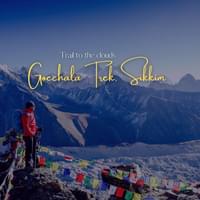
Trip Highlights
Experience the Goechala trek for breathtaking views of Mt. Kanchenjunga, pristine landscapes, rhododendron forests, alpine meadows, and diverse wildlife.
Discover the lush woodlands in the Himalayas filled with vibrant rhododendron blooms at higher altitudes, these forests offer stunning displays of colour during spring.
Cross the Paha Khola Bridge, known for its scenic setting amidst lush landscapes offering a picturesque spot for travelers to admire the surrounding natural beauty and experience the local culture of the region.
Witness the serene glacial lake in Sikkim, surrounded by stunning Himalayan landscapes, ideal for trekking and nature enthusiasts.
Spot diverse wildlife, including the Himalayan blue sheep and colourful bird species, with Yuksom.

Know Before You Go
- Please carry a valid ID proof.
- Take your time adjusting to high altitudes, as the weather conditions can be different from lower areas.
- Listen to your trek leaders or instructors carefully for a safe and enjoyable experience.
- Carry basic medications and a first-aid kit during the tour.
- No bill will be reimbursed for any missed service/facility.
- Keep your luggage minimum; the more you carry, the more you hassle.
- Any personal expenses, items of personal nature, meals not mentioned, etc. will not be in part of the package.
- Mobile & laptop charging points may/may not be available on campsites at a common point.
- Avoid using plastic bags and maintain the ecological balance of the destinations.
- It is recommended to carry enough warm clothes and the right kind of shoes for the trek.
- Please note that in the event of emergencies or natural calamities, the management reserves the right to modify the trek itinerary. However, any changes due to circumstances beyond our control is not covered in the package cost.
Additional Information
About GoechaLa Pass Trek:
GoechaLa trek is nestled at a height of 16,207 ft, with a closer look at the third-highest peak-Mt. Kanchenjunga. It is a dream and desire for hundreds of adventure lovers. Bounded by the mesmerizing flora and fauna, which are so vibrant and colourful to cheer up one's mood.
The GoechaLa pass trek is a bundle of big summits, making it an absolute adventure to embark on. The trail link with the famous Kanchenjunga National Park, where one can witness the true nature, enough to revitalize your senses. To watch the mountains clearly, April and May are the ideal months. Since the sky is completely clear during this time and the sunset-sunrise views can be captured.
Departure Dates (2024)
March-23,24,30,31
April-1,6,7,13,14,20,21,27,28
May-4,5,6,11,12,18,19,24,25,26.
June-1,2,8,9,15,16,22,23,29,30
GoechaLa Pass Trek Quick Facts:
GoechaLa Trek duration : 10D/9N
Maximum Altitude : 16207 ft
Difficulty Level: Difficult
GoechaLa Trek Distance: 90 Km
Temperature Range : April - June: 15 to 22 Degrees (Days); -1 to 7 Degrees (Nights), September – Nov: 10 to 15 Degrees (Days); -5 to 5 Degrees (Nights)
GoechaLa Trek Best Time: April end - May And September - November
Railway Station : New Jalpaiguri (NJP) is the nearest railway station, which is 150 km away from Yuksom
Airport : Bagdogra Airport which is 155 km from Yuksom
ATM : Yuksom is the last point where you can find the ATM.
Starting and Ending point : Yuksom
Goechala Trek Package Inclusions:
- 2 Nights Guest House / Homestay accommodation in Yuksom on a Quad/Triple Sharing basis.
- 7 Nights Tented accommodation while on the trek on a triple sharing basis.
- All Veg Meals from 2nd Day Lunch to till 9th Day Lunch while on Trek
- Morning, evening tea/coffee served with light snacks while on the trek.
- Trekking Equipment like Sleeping bags, Sleeping mattresses, Sleeping tents, utensils.
- All fees and permits for Indians are included in the Goechala trek package.
- All meals are included from dinner on Day 1 to Breakfast on Day 10.
- Basic First Aid Medical kit, Oxygen Cylinder, and Oxi Meter.
- Qualified and experienced Trek Leader and support staff.
How to Reach Yuksom :
By train: New Jalpaiguri Railway Station is the nearest railway station in Yuksom. Yuksom is the starting point of the Goechala trek and is located 142 km away. There are many trains operating between the major Indian cities and New Jalpaiguri. You can reach your destination from the station in 5-6 hours by road.
By Flight: Bagdogra Airport is the nearest airport to Yuksom. Yuksom is the starting point of the Goechala trek and is located 152 km away. There are many flights operating from Delhi and Kolkata to Bagdogra Airport. You can reach your destination from the airport in 6-7 hours.
NOTE- There are shared taxis available frequently from the Bus Stand/ Railway Station/ Airport. It costs approx. Rs 3500 per vehicle (shared between 5-6 trekkers).
Related Products
Yuksom tour faqs, what is the best time for goechala trek sikkim.
The best time to go for the Goechala trek is from September to December. You can also book the Goechala trek package at any time of the year depending on your preference. However, the winter season offers a fresh perspective of Sikkim and stunning views of the snow-capped mountains.
How much does the Goechala trek cost?
The Goechala trek cost on Thrillophilia’s website starts from INR 15,950. This includes everything starting from transfers, accommodation, meals and guides. However, the price of your Goecha la trek might increase depending on the type of accommodation and experiences you choose.
How to reach Goechala Pass?
The starting point of the Goechala trek is Yuksom. You can easily reach Yuksom by air or by train from the major cities of the country.
By train: The nearest railway station to Yuksom is the New Jalpaiguri railway station. Many trains run regularly from the major cities of India to NJP. From there, you can reach Yuksom by road between 5-6 hours.
By Air: The nearest airport to Yuksom is the Bagdogra Airport. It is located 152 km away and can be easily reached by road. The journey takes about 6-7 hours.
How high is Goecha Peak?
Goecha Peak, also known as Goechala Pass, stands at an elevation of approximately 4,940 meters (16,207 feet) above sea level. It is situated in the state of Sikkim, within the Kanchenjunga National Park. The peak offers breathtaking views of the surrounding Himalayan mountains. This includes the towering Kanchenjunga, Jopuno, Kabru, Pandim and Siniolchu.
How is the weather on Goecha La trek?
The temperature varies and depends upon the month you are going for the trek. So, if you are going for the trek in May, June, the day temperature will be in the range of 15 to 22 degrees and during the night it will be between -1 to 7 degrees.
On the other hand, if you are going for the trek during the months of September and October, the day temperature will be between 10 and 15 degrees and the temperature during the night will be between -5 to 5 degrees.
How many days are enough for Goechala trek?
A minimum of 9-10 days is enough for the Goechala trek. It is a 90 km long trek and has challenging ascents and descents. The route passes through secluded villages, alpine meadows, beautiful lakes and numerous waterfalls.
How much is the Goecha La Trek distance?
The trek is as long as 90 km in total. For 9 days, you will have to walk and climb for approximately 7-8 hours through the varied terrains and views.
What is the height of Goechala trek Sikkim?
The highest elevation of the Goechala trek is 16,200 feet and the lowest elevation at the starting point is 5,670 feet. The total distance is covered gradually in 10 days for letting trekkers acclimatize with the altitude.
What will be the distance covered each day on Goechala Pass Trek?
With a total trekking distance of 90km, the adventure enthusiasts generally trek an average of 5-6 hours per day for a stretch of approx 9-10 days. This is maintained in order to ensure a good trek experience.
What are the mandatory documents required for the Goechala Trek Sikkim?
Here are the mandatory documents that one needs to carry for the trek to GoechaLa:
- Photo Identity Proof
- Trekking Permit obtained at the Subdivisional Magistrate at Yuksom. The fees for this permit vary for students and Indian trekkers.
- Inner Lining Permit for foreigners
- Entry receipt from the police station
What all I must pack for the Goechala Pass Trek?
Here is the list of things one must pack before going on Goechala Trekking:
- Warm and comfortable clothes
- Good quality trekking shoes, slippers and extra pair of socks
- Sunscreen lotion or any other skin moisturizers
- Water bottles, trendy backpack and energy bars/snacks
- A pair of sunglasses and camera
- Caps or hats
- Personal toiletries and basic medication (if any)
- Flashlight (with spare batteries)
- Insect repellent and emergency medical kit
- Anything else you may need, we may not know.
How do we reach Yuksom?
You can reach Yuksom easily by train or by air. New Jalpaiguri Railway Station is the nearest railway station to Yuksom and is located 142 km away. If you wish to travel by air, Bagdogra Airport is the nearest airport. It is located 152 km away and well connected to Yuksom by road.
Does the temperature goes negative on Goechala Trek? How to handle this situation?
Yes, the temperature does drop to negative sometimes at the Goechala trek. The easiest way to Tackle such a situation is to ensure that you carry proper Woolens and steady ankle length shoes for the trek to ensure proper safety of in case the temperature drops vividly.
Further, the adventure companies and the instructors will always have the basic first aids and other necessary things. You can sit back and stop thinking about the same.
Which trek is better- Sandakphu trek or Goecha La trek?
Enriched with a good number of topography, Goecha La trek is a little more challenging with a maximum heights of up to 4600 m as compared to the Sandakphu trek with the heights of up to 3636 m only from the mean sea level. Moreover, during your trek in Sandakphu, you get the 270 degree view of the Himalayan ranges, on the other hand, Goecha La trek presents the view of only the Mt. Kanchenjunga.
Talking about the connectivity over the phone, in a few places you can have the mobile signals during the Sandakphu Trek, but in the Goecha La trek you will be totally isolated from the outer world. So, it is totally up to you and your experience and skill level, which trek you want to go for.
Are meals included in the Goechala Trek package?
All meals during the trek (Day 2 to Day 10) are included in the package. Day 1 dinner is also included in the package
How difficult is Goecha La Trek?
The Goecha La trek ranges from moderate to difficult, due to the rocky and steep terrains. There are also some difficult turns at a height of 16,200 feet, but the troubles are worth the view. There will also be several forest lands that become denser and denser as you trek ahead.
It would require a lot of endurance to cover this trek, so make sure you have experienced several other moderate to difficult treks to successfully finish Goecha La.
What peaks are visible from Goechala?
Mt. Kanchenjunga, the third highest mountain peak in the world, is visible from Goechala. Some other peaks that are also visible are Jopuno, Kabru, Pandim and Siniolchu. This makes the Goechala trek a must-to-do adventure.
Can we do Goecha la trek in November?
Yes, you can do the Goecha La trek in the month of November. As a matter of fact, most trekkers begin their treks during this month. November is also a great month to soak in spectacular sights of the majestic ice-capped mountains in the region.
The trek remains clear during this month, with the weather remaining cool and pleasant throughout the day.
Is there snow on Goechala trek?
Yes, there is snow on the Goechala trek, during the winter and early spring months. The higher altitude sections of the trek such as Dzongri and Thansing, are more likely to have snow throughout the year. Even during the summer months, some patches of snow may still be present. This adds to the beauty and adventure of the trekking experience.
What are the important things to remember while going for GoechaLa Trek?
- It is advised to be attentive all the time and listen to the trek guide.
- Bringing some loose cash as well as proper ID can be a safer option.
- Wear the shoe that fits you, has a fine grip, and is waterproof so that trekking becomes easy for you.
- Do not litter, you will be trekking through some all-natural locations where dumping of garbage and plastic is strictly prohibited.
- Stay on the route and follow all the directions.
- Pack only the necessary items so that you do not have to carry heavy objects all the time.
- Do not blast music as it might hinder the wildlife around you.
Can we visit Goecha La trek in may?
Yes, you can visit the Goecha La trek in May. It is during this time that the entire region is covered with vibrant flowers and plants. With the winter snow melting during this month, the trek becomes the abode of numerous bird species, including the Eurasian Tree Sparrow, Green-tailed Sunbird and others. You can also catch rare sights of several endangered wildlife species, such as the Red Panda and Blue Sheep, among others.
How do you prepare for the Goechala trek?
To prepare for the Goechala trek, start by building your physical endurance through regular exercise and hiking. Invest in quality trekking gear, including sturdy boots, warm clothing, and a reliable backpack. Acclimatize yourself to high altitudes by spending a few days in nearby towns like Gangtok or Yuksom. Stay hydrated and pack nutritious snacks to fuel your journey. Lastly, mentally prepare yourself for the challenges ahead and embrace the adventure with a positive attitude and determination.
Is the Goechala trek worth it?
Yes, the Goecha la trek is definitely worth it. It offers the best views of Mt. Kanchenjunga, the third-highest mountain peak in the world. Other peaks such as Jopuno, Kabru, Pandim and Siniolchu can also be seen. The snow-covered landscapes, waterfalls and unmatched beauty of Sikkim make it a beautiful experience.
What is Goechala famous for?
The Goechala trek is famous for its surreal views and beautiful trails. The trek offers some of the best panoramas of the snow covered Himalayas. You also get to see the third highest mountain peak, Mt. Kanchenjunga from the summit. The other few peaks that are also visible are Jopuno, Kabru, Pandim and Siniolchu.
Can we do Goecha La trek solo?
Yes, you can do the Goecha La trek solo. However, owing to its wide range of terrains and high difficulty, it is advisable to do the trek in a group.
Can a beginner do Goecha La trek?
Yes, a beginner can do the Goecha La trek. The trek ranges from moderate to difficult, and covers many different terrains. So, if you are a beginner, you must ensure that you do not suffer from any health ailments.
It is also recommended to do some physical activities like running, jogging as the trek takes you to higher altitudes.
Which are the other best North East treks that we can book from Thrillophilia?
Here is the list of other best North East treks that you can book from Thrillophilia:
- David Scott Trail
- Dzongri Trek
- Kanchenjunga Trek
- Singalila Trek
- Green Lake Trek
- Phoktey Dara Trek
More on Yuksom Tourism
You will be redirected to your dashboard shortly. We will also call you back in 24 hrs .
- The Goechala Trek 2024: All You Need To Know About The 11-Day Trek Across 90 Kms To Heaven!
23 Mar 2023
“It’s always further than it looks. It’s always taller than it looks. And it’s always harder than it looks.” These are the basic “three rules of mountaineering” and for those who’re up for the challenge to put these three rules to test, we have the perfect guide of Goechala trek for them. Conquer the laborious trek that lasts for about 11 days, and takes you through about 90 kilometers of ever-changing and forever-challenging terrains on your next trip to Sikkim with this tailor-made Goechala trek guide.
About Goechala Pass & Trekking In Sikkim
From Mount Kanchenjunga, to Mount Pandim, and from the Three Sisters to the mighty Everest, relish the charm of the most challenging peaks as you embark on the thrilling Goechala trek .

While Sikkim strikes a perfect balance between the natural beauty of its flora and fauna, trekking in Sikkim , especially on the Goechala trek, covers up for the adrenaline rush which is much needed for few of the wanderlusting souls. So if you’ve been planning on satiating your thirst for some adventure, get going with this Goechala trek guide , which is all you need for a soul-stirring getaway.
Must Read: 28 Best Himalayan Treks Under 10K That You Must Include In Your Bucket List!
Goechala or Goecha La Pass Snippet
Following list will give you an idea about the entire Goechala trek and it will help you to understand about the trek in detail.

- Location: Western Sikkim
- Starting Point: Yuksom
- Ending Point: Goecha La
- Altitude: A maximum of 16,200 ft.
- Duration: 11 Days (upward & downward trek)
- Distance Covered: 90 Kilometers Approximate
- Level of Difficulty: Initially moderate but later on the trek gets difficult with changing terrains
- Goecha La Trek Best Time: April to May & October to November
- Goecha La Trek Temperatures: Mornings & Nights – -5°C to 10°C; Daytime: 10°C to 25°C
- Available Accommodation Options: Tents, Trekking Huts, & Guest Houses are available on the route
Goechala Trek Route
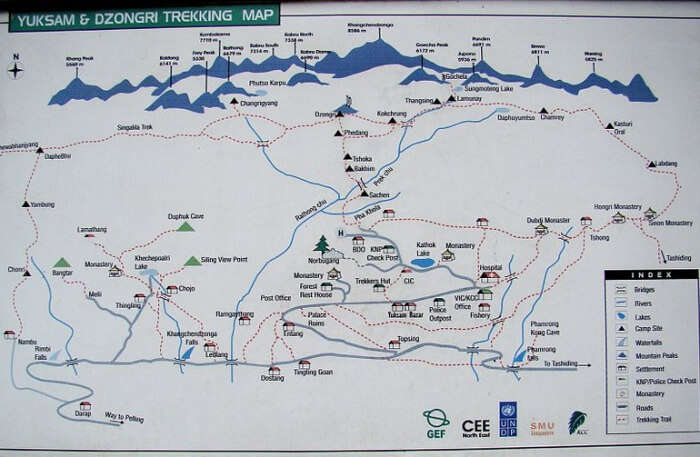
Image Source
The most famous route which the trekkers can take depending upon their expertise, feasibility, and convenience is the one that takes you through Dzongri via Phedang, all the way to Thangsing, and up till Goechala.
One also has the option of not going to Dzongri and trek uphill from Phedang but that would just lose the essence of the whole trek.
How To Reach
The best modes of transport to reach the base camp of Yuksom are that of flights, and trains.

By Flight: Most of the metro cities are connected to the nearest airport of Bagdogra Airport. One can reach this airport, and take a cab reach Yuksom which is located at a distance of about 155 kilometers and will take a maximum of 6 to 7 hours.
By Train: Located at the heart of Siliguri in West Bengal, New Jalpaiguri Junction happens to be the nearest railhead to Sikkim which is well connected with other metropolitans. Located at a distance of about 150 kilometers, one can reach Yuksom in about 6 hours from New Jalpaiguri Junction via a cab.
Goechala Trek Itinerary
For those who plan to stick to the usual itinerary which would suffice to experience the whole trek in the way it should be done, it should not take them more than 11 days to cover then entire Goechala trek for both the ways.
However, for those trekkers who’d like to take their own time or spend a day or two extra at any of the points in between, the choice is all yours.

Day 1: New Jalpaiguri Junction at Siliguri –> the base camp of Yuksom Day 2: Yuksom –> Sachen Day 3: Sachen –> Bakhim –> Tshoka Day 4: Tshoka –> Phedang –> Dzongri Day 5: Leisure Day in Dzongri Day 6: Dzongri –> Dzongri Top –> Kokchurang –> Thansing Day 7: Thansing –> Lamuney Day 8: Lamuney –> Samiti Lake –> Goecha La –> Thansing Day 9: Thansing –> Phedang –> Tshoka Day 10: Tshoka –> Bakhim –> Sachen –> Yuksom Day 11: Yuksom –> New Jalpaiguri Junction at Siliguri
Suggested Read: 20 Stupefying Winter Treks In Himalayas
Find the Goechala Trek Map here:
Detailed itinerary.
Before you even begin to plan for the restless Goechala trek , consider going through the exhaustive detailed itinerary that gives the trekkers a jist of the encounters that await them.

Day 1: Arrival at Yuksom
An expedition to Goechala trek would require the wanderlusting souls to get to the New Jalpaiguri Junction which is the nearest railway station to the base camp of Yuksom. One can drive up till there which takes about 6 hours, and at the end of the drive, one would already be at an altitude of 5,670 ft.
Day 2: Yuksom to Sachen
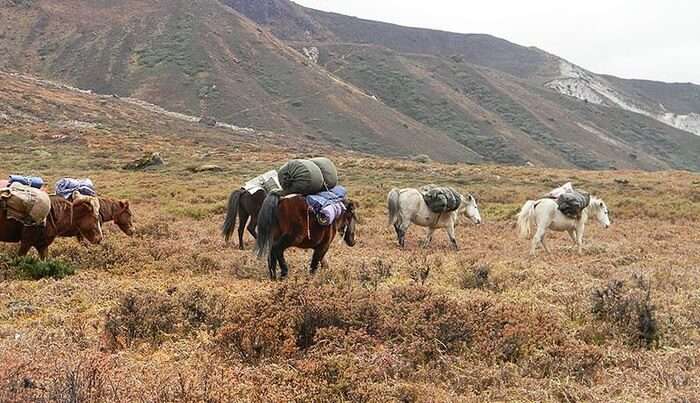
Once you reach Yuksom, stay at the booked accommodation option, and prepare well to begin your trek. Though people like to trek from Yuksom to Tshoka in day, it is advised to begin the trek slowly and retain the energy for forthcoming days. Taking one through lush environs, and dense forests, travelers will have a surprise encounter with the ancient bridges of Pha Khola, Tshushay Khola waterfalls, and the Mentogang Khola River before reaching their destination of Sachen. Upon the arrival at Sachen, the trekkers would be at an altitude of 7,150 ft.
Day 3: Sachen to Tshoka
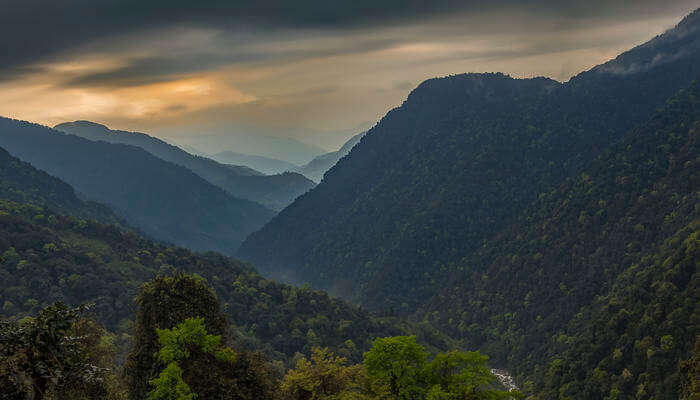
On the third day, the trek continues from Sachen to the next destination of Tshoka which passes through the village of Bakhim. This part of the trek will open up the clear skies that will lead you ahead. The trek remains pleasant throughout Sachen but soon takes the trekkers to a steep climb on reaching River Perk. One can stop at Bakhim and revive their energies with some tea and snacks. Continue to follow the trek and at the end of the trail, arrive at Tshoka which an altitude of 9,700 ft. and treat your eyes to the majestic views of Mt. Pandim and Mount Kanchenjunga.
Day 4: Tshoka to Phedang and Phedang to Dzongri

Surrounded by the Rhododendron trees, this is the most beautiful as well as the most crucial part of the trek. Post trekking for about an hour through a mix of steep climb and flat wooden paths, the trail leads the trekkers to Phedang and by the time one reaches the spot, it’s almost lunch time. Post that, continue your journey onto the trail that takes one to the mighty Dzongri – the destination of the day. Muddy patches, steep slopes, and colorful prayer flags will accompany you on the way till the time you stop at an altitude of about 12,980 ft.
Day 5: Revive Your Energies At Dzongri
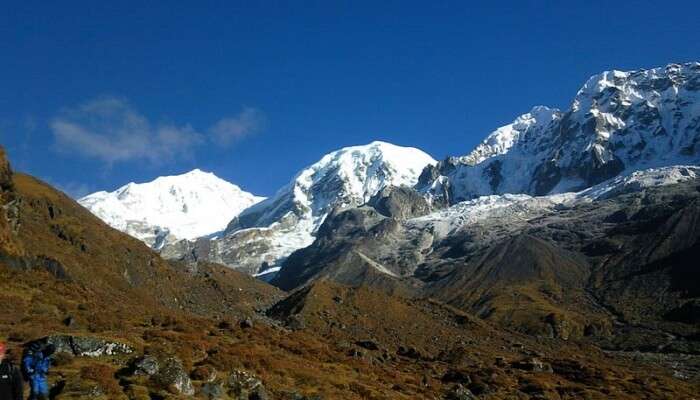
Give a break to your system and let the body revive from continuous trekking for the past four days. Spend a night under the starry sky , and get enough sleep to gear up for a thrilling day ahead.
Day 6: Dzongri to Dzongri Top and Dzongri Top to Thansing
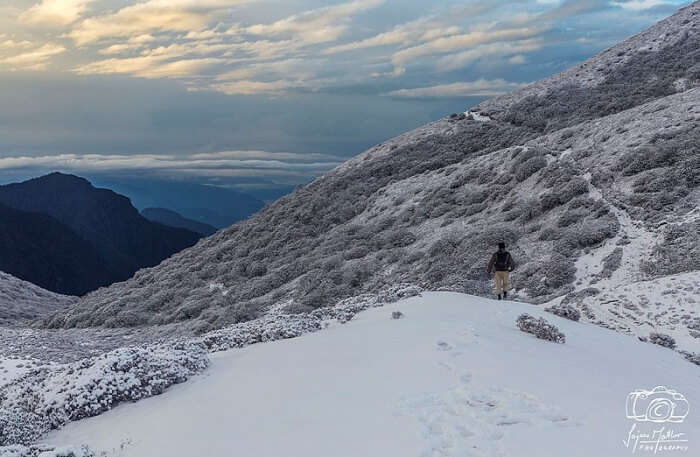
From Dzongri, start your trek towards Kokchurang that should take a minimum of 5 hours and a maximum of 6 hours. This part of the trek strikes a perfect balance between ascending from Dzongri, and descending on to the grasslands of Kokchurang. Follow the trail uptill the Prekchu River from where, the next stop of Thangsing is located at a distance of just two kilometers at an altitude of 12,900 ft.
Suggested Read: 12 Hidden Romantic Places In Himalayas
Day 7: Thansing to Lamuney
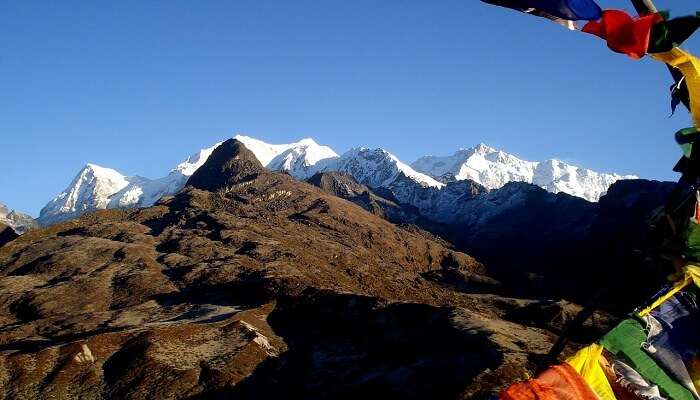
Offering a clear view of Mount Kanchenjunga and the other peaks of the summit, this descent part of the trek through the meadows of Thangsing requires the trekkers to be a bit careful. The descent is steep in nature, and the mesmerizing views can prove to be danger in disguise. Follow the trail through the trekker’s hut and you will find yourself on the lands of Lamuney at an altitude of 13,600 ft., in no time.
Day 8: Lamuney – Samiti Lake – Goecha La & Back To Thansing
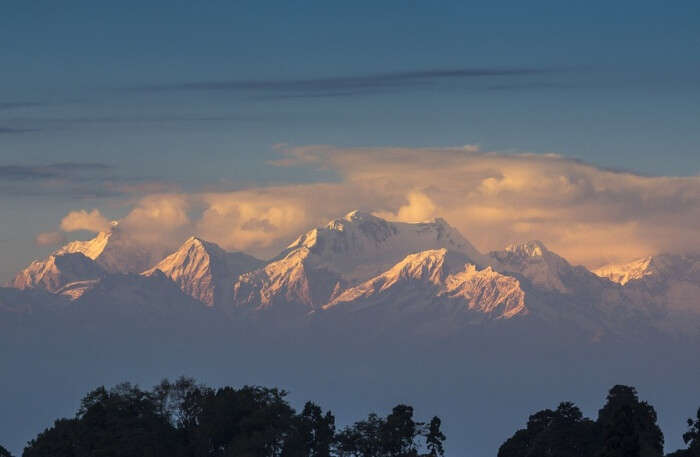
This is the day which is bound to be full of rewards for all the hard work, time, and efforts that this trek has drawn out of you. Start your trek at the earliest by 3 am. Trekkers will be forced to observe the change in the terrains, as the trail that leads from Lamuney to Goechala via Samiti Lake starts to become steeper as the ridge becomes clearer , and appears closer. Reaching Samiti Lake should not take more than 45 minutes to 1 hour from the time one steps on to the rocky path. Once trekkers reach the lake, that is the point from where one has to be very careful.
The path keep getting narrower, the climb is way too steep, and the ridge takes you through the risky sides of the mountain. It will take a maximum of two hours to reach Zemathang and another two hours to finally reach Goechala at an altitude of 16,200 ft. Since it is not allowed to camp at a dangerous height where the oxygen level does not suffice, one can spend enough time to relish the views and eventually trek back to Thangsing for the night stay.
Day 9: Thansing to Phedang and Phedang to Tshoka
Follow the same trail that will lead you towards Lamuney, post which one can move towards Kockchurang via Thangsing . Trek back on the trail that leads to Phedang and in no time one will reach Tshoka as the downward trek is faster when compared to the uphill. Trekkers can choose to stay at the trekker’s hut or pitch their own tents for the night in Tshoka.
Day 10: Tshoka to Bakhim, Bakhim to Sachen, and Sachen to Yuksom
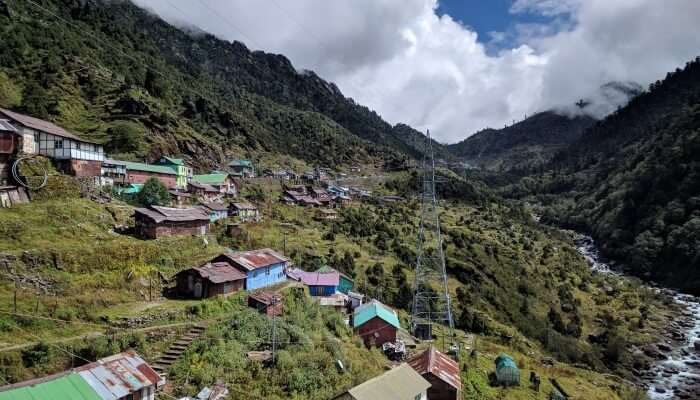
Due to the presence of a steep descent, it is faster to trek down from Tshoka to Sachen via Bakhim as compared to the time taken during the uphill trek. It doesn’t take much time to cover the last few miles that will lead you to the settlement of Yuksom.
Day 11: Yuksom to New Jalpaiguri Junction at Siliguri
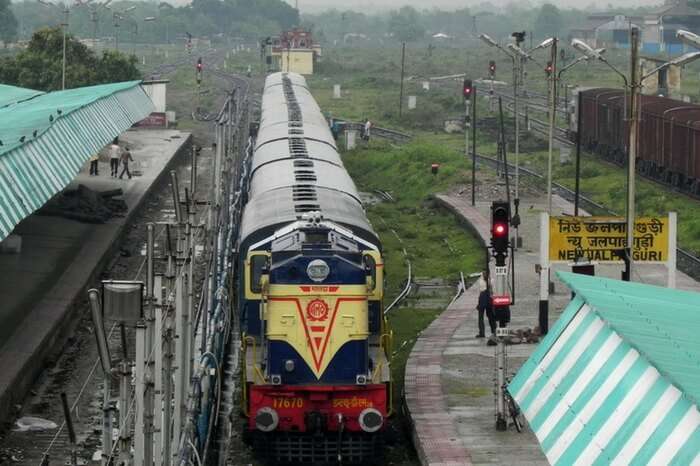
For those who don’t plan on extending their stay at Yuksom, can also reach the New Jalpaiguri Junction in Siliguri via a cab.
Why Is Goechala Trek The Best Trek In India?
- One of the primary reasons to go for Goechala trek is its mesmerising views of the mountain range. Trekkers consider this Goechala trek as closer to any of the hard treks of Nepal.
- Watching sunrise on the Kanchenjunga Range is another reason to choose Goechala for any trekkers.
- The Samiti Lake is one of the important attractions while you are going for the Goechala trek. The breathtaking views of the still water of the Lake and most importantly the reflection of Mt Pandim in the lake is literally a visual treat.
Goechala Trek Cost
An average budget per person for a 11-day trek has been taken into consideration which includes the cost of average accommodation, meals, and other miscellaneous costs that includes the permit fee, tents for camping, trekking equipments, yak charges, porter, and so on.

Flights Per Person Till Bagdogra Airport: INR 15,000 for a round trip (Based on booking done 30 days prior to departure) Accommodation (Stay in a guest house or a homestay at Yuksom): INR 1,500 per person (double-sharing basis and tax excluded) Meals: INR 2500 Miscellaneous: INR 1000
An average budget for a 11-day Goechala trek would cost up to INR 20,000 per person.
Please Note: The flight rates have been excluded as the rates may differ for each traveler depending upon the origin of destinations.
5 Things You Must Experience On A Goechala Trek
If you are going for a trek to Goechala, you are coming almost face to face with Mt. Kanchenjunga. Goechala is considered as the base camp for the Kanchenjunga Trek. Glaciers, Rocky terrain, flora and fauna, and a stunning Samiti Lake, together welcomes you to have a spectacular and a memorable experience for lifetime.
1. Interact With The Locals At Yuksom

Lush green and unspoilt, Yuksom is a beautiful village in West Sikkim that one must explore on their Goechala Trek. Other than the natural beauty, what will surprise you is the hospitable treatment, and generosity of the locals who always greet passers by with their smiling faces.
Suggested Read: 10 Offbeat Trekking Spots In The Himalayas
2. Be Mesmerized By The Nature’s Charm At Bakhim
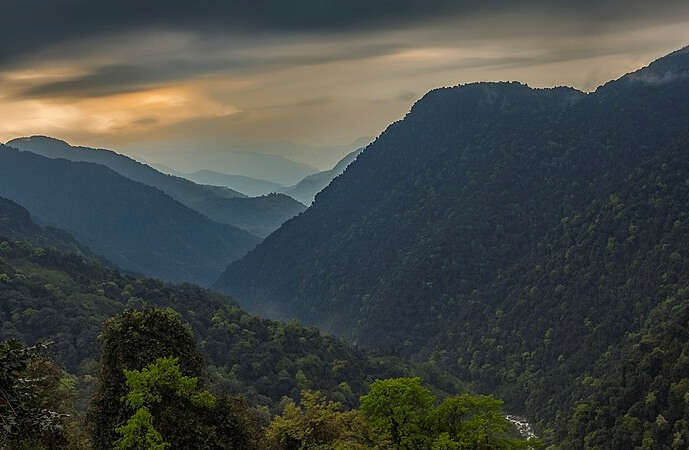
Enveloped in the dense forests of magnolia, rhododendron, orchids and ferns, Bakhim is nothing less than a paradise where trekkers can take rest and enjoy the scenic views. The panoramic views of the valleys, hills, and the Prekchu River are like a cherry on the cake!
3. Fill Your Soul With The Stunning Views Of The Summit At Dzongri

The Dzongri Summit is the best part of the Goechala trek that allows travelers to feed their hungry souls with the dazzling 360 degree views of the mountains and their snow-capped peaks. The summit is located at an altitude of 4,250 meters on top of a hill in the enchanting backdrop of the Himalayan Range.
4. Witness The Morning Glory At Tshoka

Located an elevation of 3,400 meters, Tsokha is a tiny refugee settlement in the Kanchenjunga National Park that serves as the perfect overnight halt for trekkers. It is known for providing travelers with the most spectacular views of the sunrise over Mt. Pandim.
5. Spend A Night Under The Starry Sky At Thangsing
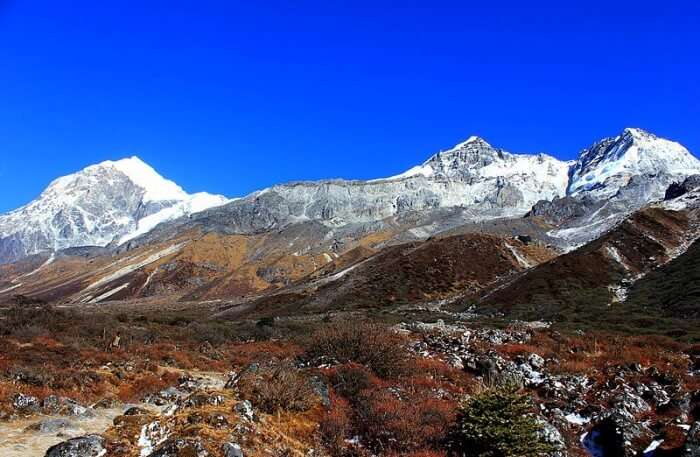
Adorned with sprawling meadows and a quaint little river, Thangsing provides as a charming overnight halt to trekkers. Apart from being a scenic halt, Thangsing is also a haven for night photographers who can simply camp here and capture magnificent views of the Milky Way Galaxy overhead.
7 Essential Tips While Packing For Goechala Trek
Do not step out of the house before you tick off each of these must-take essentials from your packing checklist for the Goechala trek.

1.First Things First: Basic gear for trekking, refillable water bottles, sunglasses, trekking pole, a rain-covered rucksack, torch, and spare batteries, camera, and drone (if you have one).
2.Major Documents: Govt. Photo ID card (original, and three photocopies), three passport size photos, Inner Line Permit (ILP) for foreigners, medical certificate, and a disclaimer form.
3.Quick-dry Clothing: Warmers, lowers, track pants, t-shirts, thermals, fleece jacket, padded jacket, sweaters, rain-wear, thick socks, cotton socks, essentials, gloves, water-resistant gloves, caps, balaclavas, footwear, hiking shoes, and slippers.
4.Utensils: A lightweight aluminium lunch box, a small plate, a spoon, a mug, and other essentials that one may need.
5.Toiletries: Sunscreen lotion, cold cream, moisturizers, toothbrush & toothpaste, sanitizer, toilet roll, small towel.
6.Must Carry: Anti-fungal cream, tampons for women, pouches to dispose off non-biodegradable waste,
7.Miscellaneous: First-aid kit, prescribed medicines (if any), dry fruits, energy bars, chocolates, and snacks to munch on.
Suggested Read: Sikkim In December: Find Exciting Experiences In The Winter Wonderland Of North-East
11 Tips & Special Requirements
For those who’re gearing up for the most thrilling Goechala trek, please be mindful of these crucial tips, and special requirements.

- Make sure you have a minimum of 10 solid treks ranging from moderate to difficult in your kitty before planning for Goechala Trek.
- Being a mountainous terrain, there is no availability of any network beyond the neighborhood of Yuksom.
- Be sure to make an entry at the police station before you start your trek.
- Carry extra copies of your documents as there are no xerox centers or photocopy shops in Yuksom.
- Make the payment of permit fees at the forest check post.
- Though the charges for carrying a camera are extra, these rates have been included in the average budget already.
- In case you have hired a guide , ask for their assistance in guiding you with all the rules and regulations.
- For foreign nationals, it is a must to reach the base camp one day prior to the day of Goechala trek.
- Foreign nationals are expected to obtain a foreigner trek permit that costs an additional of INR 2,000 from the city of Gangtok which is a mandatory requirement by the Government of Sikkim.
- Also, trekkers from foreign countries need to obtain a special Protected Area Permit (PAP) in order to be eligible to trek in a group of 2 and more people.
- An Inner Line Permit can be obtained from the premises of Bagdogra Airport or from the check-post which lies at the entrance of Sikkim while traveling from Siliguri.
Further Read: Top 28 Things To Do In Sikkim For Unbeatable Adventures In Breathtaking Landscapes
That sums up pretty much everything you need to tick off another strenuous trek from your bucket list. And if the travel bug has bitten you already, then unleash the adventurer in you and explore the Goechala trek. Last but not the least, always remember that the danger is real, but fear is a choice. So don’t wait and take a stroll in the above details to plan a trek to the Goechala trek.
Disclaimer: TravelTriangle claims no credit for images featured on our blog site unless otherwise noted. All visual content is copyrighted to its respectful owners. We try to link back to original sources whenever possible. If you own rights to any of the images and do not wish them to appear on TravelTriangle, please contact us and they will be promptly removed. We believe in providing proper attribution to the original author, artist or photographer.
Please Note: Any information published by TravelTriangle in any form of content is not intended to be a substitute for any kind of medical advice, and one must not take any action before consulting a professional medical expert of their own choice.
Bon Voyage!
Frequently Asked Questions About Goechala Trek
What are the symptoms for Acute Mountain Sickness (AMS)?
Nausea, mild headache, and an uneasiness in body movement are the general symptoms of AMS.
What should be done in case one suffers or diagnoses the symptoms of AMS?
Inform the guide or the leader of the trekking expedition. Follow his or her instructions, and make use of the first-aid kit, oxygen cylinders, and other medical help available on the spot.
What happens when a trekker suffers minor or major injuries on the trek?
Though injuries are a part, and parcel of such a challenging trek, the trek leaders who also happen to be the trained, and certified wilderness first-aid responders will guide to take the injured trekker to the nearest medical center.
Do mobile networks work in remote areas during the trek?
Not at all. Yuksom is the last stop wherein one is connected to the rest of the world. Beyond that, one must ditch the virtuality, and relish the reality.
People Also Read
Trekking In Darjeeling Trekking In Himachal Pradesh Trekking In Uttarakhand
Recent Posts

2024 में रोमांच चाहने वालों के लिए 10 दार्जिलिंग में एडवेंचर स्पोर्ट्स
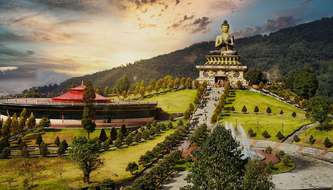
2024 में 48 सिक्किम में घूमने की जगहें: उत्तर पूर्व में असाधारण क्षेत्र
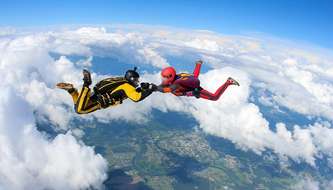
Parachutisme en Inde: 9 meilleurs endroits pour explorer le ciel en 2024
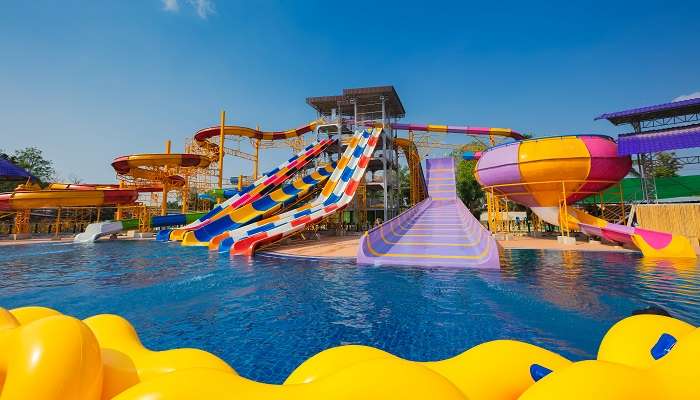
12 Parcs aquatiques à Hyderabad pour profiter à nouveau de vos vacances d’été à l’ancienne en 2024
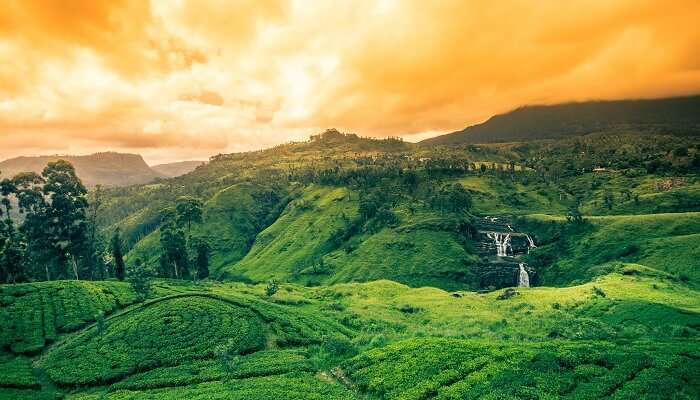
Sri Lanka Bike Tour: Adventurous Encounters On A Road Trip
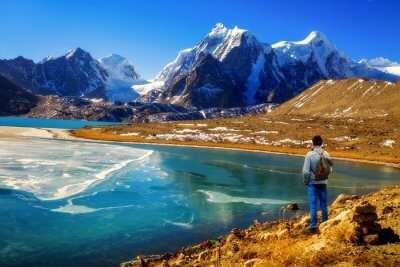
Sikkim In June: A Complete Guide On How To Experience It Best In 2024
Trending Blogs

20 Mysterious Places In India To Visit In 2023 More Bizarre Than The Bermuda Triangle

10 Scariest Roads In India That Are A Driver’s Nightmare

101 Places To Visit In India Before You Turn 30 in 2024

35 Exotic Places To Visit In December In India 2024 To Enjoy A Surreal Vacation

60 Best Honeymoon Destinations In India In 2024

95 Best Honeymoon Destinations In The World In 2023 For A Romantic Escape!
Best Places To Visit In India By Month
Best places to visit outside india by month.
- TravelTriangle
- treks »
- Tour Packages
- Honeymoon Packages
- Family Packages
- Budget Tour Packages
- Luxury Tour Packages
- Adventure Tour Packages
- Group Tour Packages
- Kerala Tour Packages
- Goa Tour Packages
- Andaman Tour Packages
- Sikkim Tour Packages
- Himachal Tour Packages
- Uttarakhand Tour Packages
- Rajasthan Tour Packages
- Tour Packages From Delhi
- Tour Packages From Mumbai
- Tour Packages From Bangalore
- Tour Packages From Chennai
- Tour Packages From Kolkata
- Tour Packages From Hyderabad
- Tour Packages From Ahmedabad
- Kerala Tourism
- Goa Tourism
- Sikkim Tourism
- Andaman Tourism
- Himachal Tourism
- Uttarakhand Tourism
- Rajasthan Tourism
- Hotels in Kerala
- Hotels in Goa
- Hotels in Sikkim
- Hotels in Andaman
- Hotels in Himachal
- Hotels in Uttarakhand
- Hotels in Rajasthan

- Holiday Overview
- Cost & Services
The Eight Day duration Goechala Trek covering a distance of 80-kilometer is an epic hiking trail in Sikkim, running from the tropical lowlands of Yuksom to the alpine vegetation of Dzongri and Goechala Pass.
The Goechala Trek is not merely a hiking expedition in Sikkim; it’s a transformative journey that leaves an indelible mark on the soul.
As adventurers stand at the Goechala Pass, gazing at the vastness of the Himalayas, they realize that the Goechala Trek is more than reaching the roof of Sikkim. It’s about uncovering the spirit of exploration, embracing the beauty, and creating a memory etched in the very fabric of the Sikkim Himalayas.
The Goechala Trek is a testament to the allure and majesty of Sikkim, inviting all those who seek adventure to uncover the secrets hidden under the roof of this Himalayan haven called Goecha la Pass.
A popular rugged trek in Sikkim, but taking on the Goechala Pass Trek is an experience that is as timeless as it is memorable.
Easy and flexible as per your convenience
We will keep your information confidential.
- INDIA Farout Trek Upper Chiboo Approach Road, Kalimpong-734301 Darjeeling. West Bengal NEPAL Climb High Himalaya, 1st.Floor, Sagarmatha Bazaar, Mandala Street, Kathmandu-Nepal
- Call (INDIA): +91- 9933975902 +91- 6294972671 WhatsApp Me: + 91-9933975902 NEPAL-+ 977-9803001116
- Email us: [email protected]
- Altitude Sickness: Symptons & Remedies
- 14 Best Tips a Hiker Should keep in mind
- 5 Best Tips to Remember before Heading Outdoors
- Buying the Right Travel Insurance
Goechala Trek: Exploring Sikkim’s Trekking Paradise
In the heart of the Kanchenjunga National Park lies the Goechala Trek in Sikkim, which beckons hikers to embark on the most beautiful trek to the roof of Sikkim—the Goechala Pass. The 80-kilometer, eight-day trek is a captivating hiking route in Sikkim, which reveals the hidden wonders of the mystical Kanchenjunga Himalayas and at the same time uncovers the essence and allure of the Goechala Trek.
A trek route in Sikkim that takes intrepid hikers to Goecha la Pass, the very foot of Mount Kanchenjunga, that strikes a perfect balance between nature and endurance. A spectacular trek in Sikkim beyond words.

The Starting and Ending Point: Yuksom’s Charm The Goechala Trek commences and ends in the historical village of Yuksom in West Sikkim, a cultural gem in itself. Surrounded by lush greenery and adorned with ancient monasteries, Yuksom serves as the perfect prelude to the Goechala Trek that awaits as trekkers set foot in a realm where tradition meets the thrill of exploring the Sikkim Himalayas.
Ascending through the Kanchenjunga National Wildlife Sanctuary: As the Goechala Trek unfolds, hikers find themselves traversing through the dense rhododendron forest of Kanchenjunga National Park, painting the landscape with hues of red, pink, and white.
The vibrant colors create a surreal atmosphere, setting the stage for an enchanting ascent into the heart of Sikkim’s wilderness, Dzongri, and Goechala Pass, surrounded by the snow-topped mountains of the Kanchenjunga Range.
Spectacular Views of Kanchenjunga: The Goechala Trek is synonymous with the grandeur of Kanchenjunga, the third-highest mountain in the world. As trekkers ascend towards Goechala Pass, the mighty Kanchenjunga and it’s peaks reveal themselves in all their glory, creating a mesmerizing backdrop to the Goechala Trek. Each step brings them closer to the summit and the unparalleled views of the snow-clad giant.
Goechala Pass and Dzongri: The Two Crown Jewels

At an elevation of over 16,000 feet, the Goechala Pass stands as the culmination of the trekking odyssey. The air becomes thin and the terrain rugged, but the reward that you get on this trek is monumental.
Trekkers are greeted with a panoramic view that includes not only Kanchenjunga but also a breathtaking array of surrounding peaks, valleys, and glaciers. It’s a moment that transcends words and lingers in the memory forever.
Dzongri at 4000 m altitude is one picturesque view point on the Goechala Pass Trek in Sikkim , and getting there is one of the most coveted achievements of an adventurer. On a clear day, you get to see nine of the peaks more than 7000m tall in a semi-circular motion, starting with Kokthang, Rathong, Kabru, Yalung Khang, Kanchenjunga, Goecha Peak, Pandim, Jopuno, and Thinchenkhang.
Kanchenjunga, towering above the clouds at more than 8500 meters above the ground, is not to be underestimated . Bowing to Everest by only 300m, the view of the Kanchenjunga Range on the Goechala Trek reveals what the Himalayas look like.

Floral Splendors and Biodiversity: The Goechala Trek is not just about hiking and conquering the Goechala Pass; it’s a hike in Sikkim’s diverse ecosystem. Trekkers encounter an astonishing variety of flora, from alpine flowers to ancient juniper trees. The trek route is also home to the elusive Red Panda and the Snow Leopard, adding an element of surprise and wonder to this trek in Sikkim.
Challenges and Triumphs: The Goechala Trek , though breathtaking, is not without its challenges. Trekkers navigate steep ascents, rocky terrains, and unpredictable weather. Each challenge becomes a stepping stone to personal growth, transforming this hike in Sikkim into a profound experience that goes beyond the physical act of trekking.

Power and Mobile Connectivity
Electricity and mobile networks are unavailable on the Goechala Trek Route after Yuksom. Therefore, hikers are advised to charge all their camera and phone batteries while in Yuksom. Though carrying a solar charger would also do.
The use of satellite phones is banned in India. Therefore, please do not bring one with you.
Best time to trek in Sikkim
March and April are the two good months for the Goechala Trek when the different varieties of rhododendron and high-altitude plants come to life, coupled with good mountain views. But during May, the weather starts getting dramatic, with misty clouds from the pre-monsoon rain playing around through the dense jungle.
Spring and summer treks are also of interest to birdwatchers and botanists when flowering plants are in full bloom and the park is filled with migratory birds.
October and November are the best months for clear mountain views. The sky and horizon remain clear
The Goechala Trek in Sikkim does get a little busy during the peak season, as the trail overlaps much of Kanchenjunga National Park. But after having said that, it does provide solitude as the Kanchenjunga National Park area is spread wide.
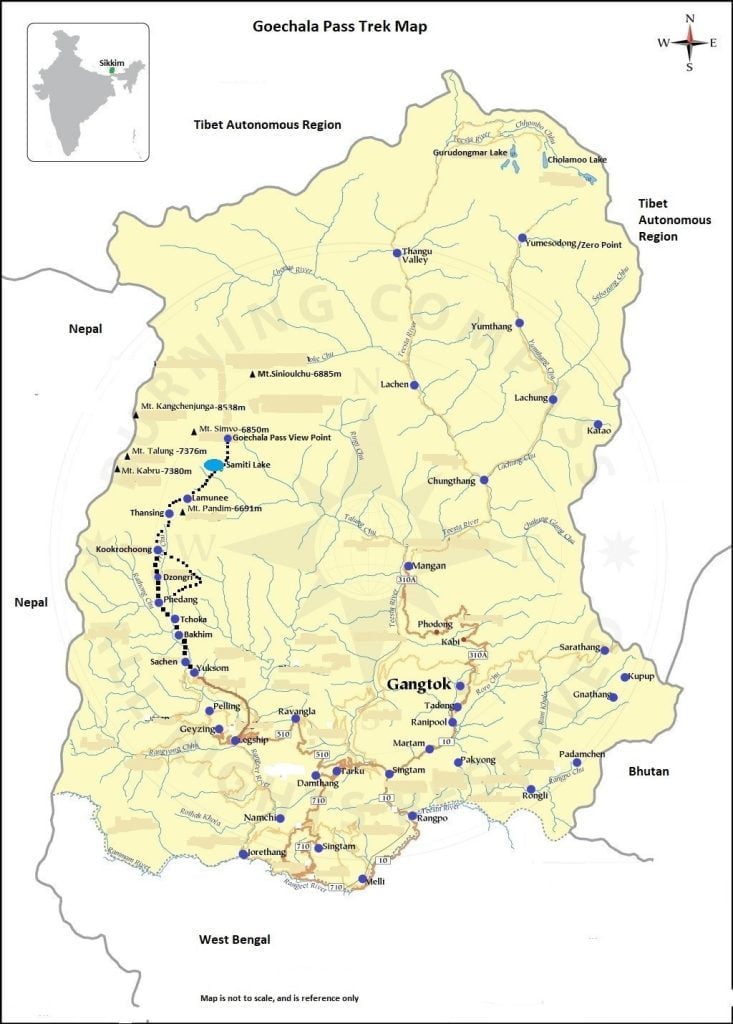
Accommodation and Food on the Trek
- Twin-share tent accommodation will be provided on the Goechala Pass Trek with three-inch foam mattresses per trekker. A separate dining tent, a kitchen tent, and a toilet tent will also be provided. The kitchen tent and the dining tent also double up as accommodations for the support team.
- There is a trekker hut with very basic facilities in Tchoka and Dzongri. The cost of lodging in these two trekkers’ huts is included in the Kanchenjunga Park fees. There are also two lodges in Tchoka belonging to the Sikkim Tourism Department, for which you will need to pay extra.
- Dzongri has a small hut belonging to the Sikkim Forest Department; two rooms will also be let out, provided there are no officials on a visit.
- There is a Trekkers hut in Thansing too, very basic, with just wooden beds in it, belonging to Sikkim Tourism. For this too, you will need to pay extra.
- Cook and his set of Kitchen Helpers will provide hot-cooked local food, i.e., rice, Dal (lintel soup), and vegetable curry on the trek.
- Lunch includes Macaroni or Chapatis (flour bread) with vegetable curry and Noodle Soup or Noodle Chowmein with Plain Soup and Boiled Eggs or Boiled Potatoes.
- Porridge, pancakes, bread with butter and jam, or Tibetan bread, and puri (flour bread fried in oil) will be the main items for breakfast.
- Evening tea or coffee with biscuits will be there to perk you up in the evening.
- Dinner is mainly rice, dal with vegetable curry, etc., with soup.
What should I carry for this trek?
- A haversack (50 l–55 l) to put in all your clothes that you will require on the trek. Also, include in the haversack a down sleeping bag that can withstand a temperature of minus 15 degrees Celsius, along with a thermal inner. This will ensure that you will have warm nights on the Goechala Pass Trek.
- As you will be ascending to 4550 m at the Goechala Pass View Point, the temperature in the evening and night will vary from 0 to 5 degrees. Therefore, carry warm clothing with you. Include a down jacket, a couple of fleece jackets, woolen socks, gloves, a balaclava, and thermal inner wear for evening and nighttime use.
- The daytime temperature will remain between 5 and 18 degrees Celsius. Therefore, light and loose trekking pants and fast-drying T-shirts should be included in your pack.
- Carry a daypack with you with your personal items in it. Your daypack should be big enough to hold a water bottle, a raincoat or umbrella, a windbreaker, and a light fleece.
- Also, include a small personal medical kit in your day pack. Your medical kit should contain tablets for fever, dysentery, anti-acid tablets, Electral powder, and painkillers. Include in it Crepe Bandages for sprains, Antiseptic Ointment for cuts and bruises, Band-Aids for small cuts and toe blisters, water-purifying tablets, sunscreen lotion, and Vaseline for chaffed skin.
- A pair of ankle-length sturdy but light trekking boots is a must on this trek, as the route is rough and uneven. If it is a new purchase, then it is essential to break into them before using them on the trek to ensure that it is comfortable. Carrying an extra pair of trail running shoes is also a good idea in case of discomfort.
The best twelve tips to make your Goechala Trek a success .
- First and foremost, it’s crucial to train well before embarking on the Sikkim Goechala Trek. You’ll be hiking to high altitudes, covering about 10 km of distance per day. So, it’s essential to work on your stamina and fitness by indulging in activities like long walks, running, cycling, swimming, or any other physical activity.
- Therefore, train on a range of terrain, as you will need to tackle a variety of terrain while trekking from Yuksom to Dzongri and further on to Goechala Pass View Point. From riverside trails to steep paths up a mountain trail filled with snow, therefore, mix up your training with long walks on a variety of terrain.
- Also, remember to keep your muscles in good shape. Remember to stretch after your long walks. You should focus on your calves, quads, hamstrings, hips, and back.
- Another important thing to keep in mind is acclimatization. You’ll be trekking to higher altitudes, so it’s crucial to take regular breaks and spend extra nights at higher altitudes to prevent altitude sickness.
- Pack your bags properly for the Goechala Trek, which is a high-altitude trek in Sikkim. Make sure to include warm clothes, woolen caps, gloves, sun hats, waterproof gear, comfortable trekking shoes, and other essential items like a first aid kit, water bottle, water purifying tablets, sunscreen lotion, Vaseline, sun glasses for use on snow, etc.
- While on this Sikkim trek, remember to respect the local culture and the people of Sikkim, who have their own culture and traditions. Be mindful of the impact you may have on their environment.
- Stay hydrated throughout the trek to avoid altitude sickness. So, drink plenty of water and avoid alcohol and caffeine.
- Please remember, the Sikkim Goechala Trek is not a race, so take your time, enjoy the scenery, and don’t push yourself too hard.
- Be prepared for the unpredictable weather in the mountains. So, pack accordingly for rain, snow, and cold weather. And lastly, be flexible with your plans, as weather and other conditions in the mountains in Sikkim can change very quickly. I hope these tips help you have an incredible experience on your Goechala Trek!
- Get yourself a pair of ankle-length but light hiking boots to keep your feet comfortable. But remember, the ankle cuff on the trekking boots should not be too high to avoid damaging your Achilles. Try these boots on early and break into them early so that you do not get blisters while on the Goechala trek.
- Get proper, supportive socks. Get socks that are designed for trekking and hiking long distances. These socks are well worth investing in to give your feet extra protection.
- Practice with your backpack. Your main baggage will be carried by porters or pack animals. But you will need to carry a day pack with you to put in all your essential items, like a camera, a water bottle, your personal medical kit, an umbrella, a light fleece, and a wind stopper.
Five Rules Every Hiker Should remember while planning a Hiking Trip in Sikkim
Before you head out on your next hiking adventure in Sikkim, take some time to understand hiking under a load. Hiking with a load on your back is a big concern. In order to ensure the success of various mountain sports such as multi-day trekking, day hiking, and peak climbing in the Himalayan Mountains, the most crucial factor is to focus on performance and injury prevention. So read these five points before embarking on a hiking trip in the Sikkim Himalayas.
1). A kilogram of weight on your feet is equal to five times the weight on your back.
According to a study conducted in 1984 by the U.S. Army Research Institute, it takes 4.7 to 6.4 times as much energy to move at a given pace when weight is carried on the shoe versus on your back.
In practical terms, this means you could carry about 5 kilograms of weight on your back if you bought hiking boots that were 400 grams lighter. Imagine the energy savings of backpacking in light trail running shoes rather than heavy, leather backpacking boots over the course of a 7-day hike and trek in the mountains.
2). 450 g on your feet is equal to 5% more energy expended.
Heavy hiking boots don’t just affect your performance because of their weight. But heavy hiking boots are stiffer and, at the same time, less responsive. This in turn reduces the efficiency of your body reflex when hitting the ground.
3. Every 1% of your body weight in your pack makes you six seconds slower per mile.
Carrying weight in your back pack does not come for free. Each 1% of your body weight carried in your pack makes you 6 seconds slower per mile. So, if you weigh 75 kg, each 750 g of weight in your pack slows you by 6 seconds per mile. For a 75-kg hiker on an extended trip, cutting your pack weight down from 18 kg to 13 kg saves you 40 seconds per mile.
4). A 10% grade incline cuts your speed in half.
Grade greatly affects speed. By “grade,” we mean how much terrain incline or decline there is. At 10% grade, for example, for every 10 feet you travel forward, you’ll travel 1 foot up. In terms of angles, 10% equals 5.74 degrees. A 5.74-degree angle doesn’t seem like much, but remember that it affects you when you are hiking 10-15 km in a day. You’ll know how hard it is because you’ll move twice as slowly over it than over flat ground with a given load.
A 10% grade will cut your speed in half, no matter how much load you are carrying on your back.
5). Going up slows you down twice as much as going down speeds you up.
Don’t believe you’ll make time up on the other side of the hill. You won’t. You’ll only make half the time up. Why don’t you gain as much by hiking downhill as you lose hiking up the trail? Braking forces is the answer. As you descend, you have to brake your speed with your quads to keep yourself under control. The steeper the downhill, the more braking. This added load on your muscles further affects your uphill performance if you have repeated bouts of up-and-down work.
Booking procedure for Goecha Trek
To secure your spot for the Goechala Trek, an advance deposit is required. Upon receipt of this deposit, your booking will be confirmed. Once you have chosen to join us on this trek, we will provide you with the necessary bank details to complete your deposit.
Cancellation Policy
- Minimum Charge: (The deposit amount will not be refunded if the trek is canceled due to government policy, closure of national parks, etc., or canceled by the depositor himself.).
- Less than 7 days of trek date: 50% of trek cost.
- On or after the trek start date: No refunds if the trek is aborted or shortened for any reason.
Formalities for Foreign Visitors visiting Sikkim
Foreign visitors visiting Sikkim must obtain an Inner Line Permit (ILP). The ILP can be obtained from Sikkim House in major cities across India or at the entry points at Melli Check Post and Rangpo on the border with West Bengal.
To apply for the ILP, visitors must complete a form with their details and submit a photocopy of their passport and Indian visa, along with two passport-sized photos.
The ILP is issued for a period of 30 days. Assistance will be provided in obtaining this permit.
Trekking Permits for the Goechala Trek
Hikers and trekkers interested in undertaking the Sikkim Goechala Pass Trek must go through a registered travel agency in Sikkim.
To obtain the trekking permit, applicants need to submit a trekking form along with photocopies of their passport, Indian visa, and ILP. Additionally, four passport photos are required. However, there is no need to worry as we will take care of this process on your behalf.
I am a single trekker; what should I do?
We have fixed group departure dates for solo hikers for the Goechala Pass Trek in Sikkim. You can join a group. The itinerary can also be customized for a minimum of two people on a date of your choice.
Talk to us if you have any doubts. Our experienced outdoor adventure team is always ready to help you plan your treks and tours in Sikkim. Our team will assist you throughout the whole process, from the moment you decide until you return from the trek.
Recommendation
The Goechala Trek is strenuous to moderate and demands good physical form. Hence, one has to prepare a minimum of one month before the start of the trek. Also, a physical fitness check-up is recommended.
- Trek Grade: Strenuous to Moderate.
- Minimum Number of Participants: 2 Persons.
- Highest Point: Goechala Pass View Point (4775 m).
- Highest Camp Site: Lamunee (4164 m).
- Total number of days: 12 days.
- No. of Days on the Trek: 7 Days.
- Style of Trek: Camping (tents).
- Starting Point: Bagdogra Airport/New Jalpaiguri Rail Station/Nepal Border.
- Ending Point: Bagdogra Airport/New Jalpaiguri Rail Station/Nepal Border.
- Best Season: March to June and September to December.
- Trek Availability: Join a group trek (dates shown below). Private treks are available on request.
- Customized private treks can also be arranged for a minimum of two people on request on a date of your choice.
SIKKIM GOECHALA TREK ITINERARY
Day 1: Arrive at Bagdogra Airport/NJP Rail Station/Nepal Border. Drive to Gangtok (1622 m) on the 5-hour drive. Overnight Hotel.
Day 2: A day in Gangtok. Overnight Hotel (B/B only).
Day 3: Drive to Yuksom (1760 m/5 hours). Overnight Hotel/Lodge (B/B only).
Day 4: Sikkim Goechala Trek Starts. Trek to Bakhim (2975 m/11 km/6 hours). Overnight Tent.
- Yuksom to Sachen ( 2185 m/7 km/3 hours)
- Sachen to Bakhim (2975 m/4 km/3 hours)
The Goechala Trek is a great way to experience the beauty of Kanchenjunga National Park in Sikkim! The journey starts gently from Yuksom and takes you through dense forests and steep uphill climbs until you reach Bakhim, your first camping spot for the night. For the average trekker, this eleven-kilometer trek from Yuksom to Bakhim can take up to six to seven hours. But trust us, the views and the experience of setting up camp in the middle of this amazing landscape make it worth every second. So, come join us for the Goechala Trek in Sikkim and explore the beauty of this incredible region!
Please Note: In order to get acclimatized properly, it is also advisable to halt for the night at Sachen (2189), seven kilometers from Yuksom.
Day 5: Trek Bakhim to Dzongri (3950 m/11 km/6 hours). Overnight Tent.
- Bakhim to Tchoka (3001 m/1 km)
- Tchoka to Phedang (3496 m/6 km/3 hours): Steep uphill on a very rough trail.
- Phedang to Derali Dara (3920 m/2 km/2 h): First 45 minutes through Rhododendron Forest on level track. Then a steep uphill on a barren hillside till Deorali Dara.
- Deorali Dara to Dzongri (3950 m/2 km/1 hour): easy trek on a wide trail till Dzongri Camp Site.
Trekking to Dzongri from Bakhim is a 11.2 km uphill hike amidst the magical oak, rhododendron, and Magnolia forests of Kanchenjunga National Park. Starting with a gentle two-kilometer uphill trek till Tchoka, a former Tibetan settlement with a trekker’s hut, a monastery, and two small lodges.
The trail from Tchoka then ascends steeply on a rough 6-kilometer track to Phedang and then continues the uphill climb right up to Deorali Dara.
From here on, the trek to Dzongri is a gentle one with no uphill and with spectacular views of the Kanchenjunga Range and the Silver Fur and Rhododendron forests being replaced by small Cryptomeria bushes.
So, what are you waiting for? Pack your bags and join us for one of the best-kept secrets of Sikkim. We guarantee that you will have a unique and unforgettable experience.
Day 6: Rest Day at Dzongri. Early morning climb to Dzongri View Point for the morning views of the mountain range. Optional day hike to Dzongrilla Pass or Laxmi Pokhari. Overnight Tent.
The early morning trek to Dzongri View Point, or Dablakhang (4171 m), is worth the one hour of the climb as you get to witness the most beautiful sight of some of the tallest mountains in the Himalayas, all above 7000 m in height. This is what the Goechala Trek is all about: getting intimate with some of the highest mountains in the world.
Day 7: Trek Dzongri to Lamunee (4164 m/10.8 km/6 hours). Overnight in tents.
- Dzongri to Kookrochoong (3925 m/4 km/2 hours): first 2 km on a slightly downhill trail. Then a steep downhill trek on a loose stone trail to Kookrochoong.
- Kookrochoong to Thansing (3986 m/3 km/2 hours): 1 km is beside the river, and then a slight uphill till Thansing.
- Thansing to Lamunee (4164 m/3.8 km/2 hours): easy trek on a wide trekking trail with no uphill trek till Lamunee.
Trekking from Dzongri to Thansing is a wonderful experience. This trek route winds through the Cryptomeria shrubs and provides an awe-inspiring view of the surrounding mountains. The trek from Dzongri to Lamunee is undoubtedly the best part of the Goechala Trek. With the Himalayan peaks in the background, the trek provides an opportunity to be close to these majestic peaks.
The only difficult part of this trek is the 2 KM downhill trek till the riverbed at Kookrochoong. Other than that, the route is quite easy and can be navigated with ease. The whole Thansing valley is situated at the foot of Mount Pandim and surrounded by high mountains on all sides. Trekkers can enjoy all the natural beauty of the mountains and the lush greenery in the region. Overnight stay in tents in the Thansing Valley at the foot of Mount Pandim is another major highlight of the trek.
Day 8: Trek to Goechala Pass View Point (4990 m). Return Trek to Kookrochoong (3725 m/14 km). Overnight in the tent.
Trekking to the Goechala Pass View Point is one of the most thrilling experiences you can have. This trek starts at 4 a.m. and is the longest, with almost 15 km to cover. The Goechala Pass is situated at an altitude of 17,000 feet and offers spectacular views of the Kanchenjunga Range.
The trek is filled with adventure, as you have to cross the sacred Samiti Lake at 4210 m before reaching the Goechala View point. The trek is a little strenuous and requires a certain level of physical fitness. From the view point, you can witness the mesmerizing sunrise on the snow-clad peaks of the Kanchenjunga Range.
After spending some time soaking in the breathtaking views, you will make your way back to the campsite at Lamunee for breakfast. After a well-deserved rest, you will head down the Thansing Valley in a leisurely manner and camp for the night at Kookrochoong.
Day 9: Trek Kookrochoong to Tchoka (2975 m/9.55 km). Overnight in tents.
- Kookrochoong to Phedang (6 km/3 hours): easy trek through the forest.
- Phedang to Tchoka ( 3.55 Km/2 hours): Steep Downhill Trek on a rough track till Tchoka
The trek to Tchoka from Kookrochoong is perhaps the easiest part of the Goechala Pass Trek in Sikkim. This trek route, the best trek route in India, is a paradise for nature lovers, boasting thick rhododendron and pine forests. With only a few uphill stretches until Phedang, where lunch will be served, the day’s trek is a great way to enjoy a leisurely hike in Sikkim.
After lunch at Phedang, the trek to Tchoka is a downhill journey, retracing the same path we took while climbing up to Dzongri. The downhill trek is a great way to relax and appreciate the nature around you as you make your way to the campsite at the end of the day. This part of the trek route gives a great opportunity to observe the lush green forests and vivid fauna of the Sikkim Himalayas.
Day 10: Trek Tchoka to Yuksom (1760 m/12 km). Lodge (B/B only).
Trek back to Yuksom on the same trail that you took while going up.
Day 11: Drive to Kalimpong (1200 m/4-5 hour drive). Hotel (B/B only)
Day 12: Drive to Bagdogra Airport, NJP Rail Station, or Nepal for the final departure. End of Sikkim Goechala Trek: 3 Hours Drive. The extension can be made to Darjeeling, Bhutan, and Nepal.
How much does this trek cost?
- Goechala Trek Cost: US$980/Person
- Goechala Pass Cost Costs for Indian Nationals Kindly request for quote in Indian Rupee
What is Included and Excluded in the Goechala Trek Cost?
GOECHALA TREK COST INCLUDES:
- Twin-share tent with a mattress during camping or trekking.
- Hotel accommodation: twin share, including breakfasts.
- Fully organized trek services with a guide, porters, and camping equipment.
- All fixed three meals every day during trekking or camping.
- All road transport is as per itinerary by car or Jeep.
- Service of an English-speaking guide.
- Entrance fees to monuments visited.
- All Permits for Darjeeling and Sikkim.
DOES NOT INCLUDE:
- Sleeping bag; personal clothing or equipment.
- Lunches and dinners during hotel stay
- Bottled or alcoholic drinks.
- Tips, client insurance, and evacuation costs.
- Any expenses of a personal nature.
Note: The above Goechala Pass trek itinerary is a sample, intended to give you a general idea of the likely trip schedule. Numerous factors, such as weather, road conditions, the physical ability of the participants, etc., may dictate itinerary changes either before departure or while on the trail. We reserve the right to change this schedule in the interest of the trip participant’s safety, comfort, and general well-being. A customized itinerary can also be prepared as per your convenience.
(All relevant terms and conditions apply.)
- Goechala Pass Trek Cost : US$980/person
- Goechala Pass Trek Cost for Indians : Request quote in Indian Rupee
TREK COST INCLUDES:
- Twin share tent with mattress during camping or trekking.
- Fully organized trek services with guide, porters, and camping equipment.
- Lunches and dinners during hotel stays.
(All Relevant Terms and Conditions apply.)
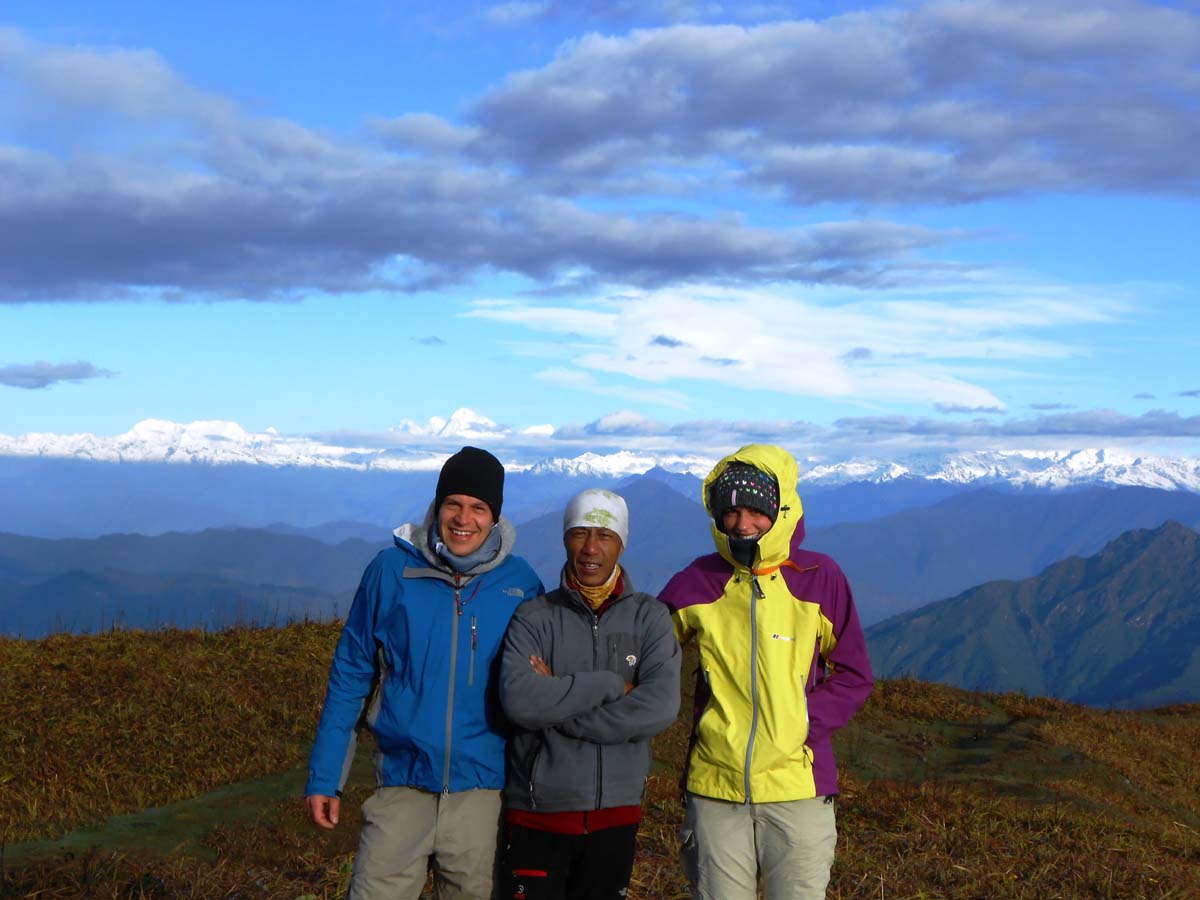
INDIA Farouttrek Upper Chiboo Approach Road, Kalimpong-734301 Call – Mr.Fabian Tamang + 91-9933975902 +91-6294972671 WhatsApp Us: +91-9933975902 Email Us: [email protected] [email protected]

SIKKIM DARJEELING NEPAL BHUTAN TIBET LADAKH
All Rights Reserved© https://www.farouttrek.com 1999–2024.

- Privacy Overview
- Strictly Necessary Cookies
This website uses cookies so that we can provide you with the best user experience possible. Cookie information is stored in your browser and performs functions such as recognising you when you return to our website and helping our team to understand which sections of the website you find most interesting and useful.
Strictly Necessary Cookie should be enabled at all times so that we can save your preferences for cookie settings.
If you disable this cookie, we will not be able to save your preferences. This means that every time you visit this website you will need to enable or disable cookies again.

- Summer Treks
- Winter Treks
- Offbeat Trails
- Expeditions
- South India Treks
- Western Ghats
- Find Your Next Adventure-->
- Latest Updates
- Contests & Giveaways
- Practicing Sustainability
- Practicing Safety
- Informative
- Our Book of Adventures
- The Opinion Corner
- Picture Blogs
- Trekkers' Blogs
- Customize Your Trip
Trekkers' Blogs
Why Goecha La must be trekked in December
Bhima simha, goechala in december.
Goecha-La, in West Sikkim, is hailed as one of the most thrilling Himalayan treks, and for good reason too. With enthralling views of the Himalayas, colorful flora, crystal clear glacial water, and a green carpet throughout, the trails seem straight out of a fairytale. Starting from the sleepy hamlet of Yuksom, Sikkim’s old capital, the trek traverses through the Khangchengdzonga (Kanchenjunga) National Park. One gets to experience different terrain and changing scenery every day of the trek. From the thick forests in Sachen to open flatlands of Thansing, from the cold and wet Dzongri to the coldest of ‘em all at Lamuney – Goecha La has it all. Paeans have been written about how romantic this trail is, with some extremely romantic adventurers suggesting this as a must-do with your partner. I second these authors and wish to add to their scorn-filled thoughts of doing the Goechala trek in any other season but Winter. Here are my top reasons:
1. Absolute silence : Yes. It is creepy. Imagine the mighty mountains, forests, frozen creeks all to yourself. The cacophony of crowded campsites missing, walking the trails in silence, enjoying the beauty around in peace – it is a dream come true for someone who’s looking to connect with themselves.
2. Shaky pictures : Because temperatures in the higher altitudes tend to dip significantly – as low as -20 0 C, taking clear pictures gets a little difficult. But pictures aren’t the only problem. Water freezes to ice, food gets cold real fast, the sun sets on you like magic, the wind rips through your tent at night. Nothing can summarize this better than that feeling you get when answering nature’s call in the middle of your sleep when you’ve finally adjusted the sleeping position and warmed up in the bag – you have to answer nature’s call, makes you rethink the decision to do this trek in December!
3. No work for an eco-warrior : Although Sikkim is by far the cleanest state in India, trekkers and tourists can really up the junk game during the peak season. For the environment ploughs, the harvest aka trash sacks, Goecha la in December brings a rather low return. While finding energy bar wrappers, biscuits covers, wet tissues, toilet paper, beer bottles, cigarette packs, etc., has become the new normal in most of the Himalayan treks, December compels you to go back empty sacks (almost). Of course, it’s never 100% clean, but you get the drift.
4. Less adventurous : Trust me, avoiding man-made fecal landmines is a task during the peak season, almost an adventure! With the multitude of companies operating this trek, it is a rare sight to see (or unsee) clear pastures near campsites. And don’t even get me started on the toilet sheds. Believe me- I’m not making a mountain out of a molehill!!
5. Lack of sleep : If you have committed to the ludicrous idea of trekking during December, you might as well settle for some of the best views of Kanchenjunga, Mt. Pandim, Kabru peaks and the like. With little to no clouds in sight, daylight offers enchanting views of the Himalayan peaks while stars illuminate the expansive, clear night sky. The drawback though is that it keeps you away from sleeping early.
6. No New Year social-dos : Oh, and if you happen to do Goecha La towards the fag end of the year, you’ll definitely miss celebrating the new year in your crowded city pubs. Youths of Yuksom (the name’s for real) put up a beautiful New Year gala that the entire village participates in. This party goes on till the wee hours of the morning and will wear you out by the time it ends.
Trekking the GoechaLa is both an unforgiving and unforgettable experience if done in December, so please stay away. And before we end, you don’t actually have to ever do this trek. Just flip the old 100 rupee note. You are welcome!
Avid nothinger Read more
Want to Blog for Bikat Adventures?
Add a comment.
* Your email address will not be published. All fields are required.
Awesome use of sarcasm :)
Submit Enquiry
About Goechala Trek
The north-eastern state of India, Sikkim, is blessed with natural beauty from beautiful snow-capped mountains to sprawling greens and bubbling brooks. The East Himalayan state offers different treks, among which Goechala trek is among the most well-known ones.
For veteran trekkers, the Goechala trek is like a beautiful homecoming to the folds and crevices of the evergreen Himalayan massifs. But the trail welcomes rookies and newbies with an open arm as well.
Sikkim is a habitat of numerous spectacular treks but Goechala trek stands out to be the m ost extravagant one with Goecha La at 15,100 feet that gives the magnificent view of the splendid Kanchenjunga from the top. Apart from the breathtaking view, this trek is quite popular and is loved my most travellers because of the extensive varieties of flora and fauna spread in the flourish lavish valleys with wonderful orchards, dense forests and the widespread charismatic and alluring beauty of North. This region is exclusively designated as the Kanchenjunga national park and along with the vertex, there?s a gushing Goceha lake flowing downwards.
While trekking the pass, trekkers usually witness one of the most beautiful sunrises and sunsets of their lived with snowcapped massive Himalayas surrounding them and the gifted view of sixteen attractive peaks from the Dzongri top is one of its kind experience.
The state sees an influx of tourists in Summer and Autumn, which is considered the best for the Goechala Trek . The trek promises to take you beyond 15000 feet and give you a chance to take in the view of the mighty Kanchenjunga and 16 other summits from the Dzongri La top. Apart from the mountain peaks, you get to feast your eyes on the lavish valleys neatly tucked between these mountain ranges, which boast of different floras and faunas. Trekkers who have been on this Goechala trek have experienced one of the most beautiful sunrises and sunsets.
- Duration: 11 days
- Difficulty: Difficult
- Distance covered: 75 km
- Altitude: 15,100 ft
- Start and End Point: Yuksom
- Last ATM Point: Yuksom
- Nearest Airport: Bagdogra, West Bengal
- Nearest Railway Station: New Jalpaiguri Station
Your trekking journey starts from the former capital of Sikkim, Yuksom , a small quaint village in the west. Here you will have to acquire the necessary permits as the trek trail falls within the Kanchenjunga National Park, which is acknowledged as a World Heritage Site under UNESCO. If you are going with a registered organization or agent, then they are going to take care of the necessary permissions. But as independent trekkers, you would have to do it yourself.
Previously, anyone could gain entry just by submitting a photo ID and self-declaration at Yuksom Police Station. As per a new notice issued in July last year, every member of every visiting group, be it trekkers or otherwise (scholars, mountaineering students, filmmakers, researchers, etc.) would have to obtain and carry entry permits at all times. That includes the porters, guides, and travel agents who accompany the trekkers as well. The permission is to be acquired from the Office of the Sub Divisional, Yuksom .
You may have to shell out around 700-1000 rupees for permission fees, camping charges, trek guide fees, and any other charges levied by the Forest Department. You are advised to withdraw all the money that you need for the 11 days Goechala trek at an ATM here because there are no ATMs after this.
The following day is the beginning of the trekking journey where you march towards an altitude of 7200 ft by trekking for around 8 km to the Sachen. The next day is a 7km trek from Sachen to Tshoka which lies at 9700 feet. The following day holds a 9km long trek to Dzongri and you have to go via Phedang at an altitude of 12980 feet. The following day is a rest day to cool down your exhaustion and you can do a small hike to explore Dzongri if you want. On the sixth day, there's a 10km trek from Dzongri to Thansing standing at 12,900 feet and the trail crosses beautiful green meadows as you cross Kokcharang at 12,000feet. The seventh day brings to you a rather short 4km trek from Thansing to Lamuney at 13,650 feet and is an easy pathway to cover. However, the following day is a difficult trek as it goes to Goechala, the topmost point of the trek at 15,100 feet and back to Lamuney by crossing Samiti Lake. There are many steep ascents and tricky turns in this route but the view at the top is worth every step you take forward. The next day is the descent back to Tsokha through the spectacular rhododendron forests which is an easy walk towards, but the next day is a long trek of around 15 km to Yuksom that takes approximately 6 hours to finally reach the civilization.
Best Time to visit
Goechala trek best time is during the summer season between the months of April and June or late during autumn season somewhere between September and October. It is advisable to avoid the trail between June to September as the monsoon times makes it very prone to landslides and muddy tracks. Goechala trek December time is also a risky period as the heavy snowfall makes the trekking difficult and the temperature drops down as low as minus 20 degrees Celsius in certain regions. You can also do this trek during spring months of March and April as the rhododendrons bloom in all its glory and this is a sight to see.
The summer months of April and June and the autumn season stretching between October and November are the best time to go on Goechala Trek .
Goechala Trek in Summer:
One of the best times to trek Goechala is from April to June. However, there will be lots of leftover snow from the last winter. Trekkers will get completely white scenery. But at the same time, April end will see the first blooms of red rhododendron . The chirping of birds, endemic to the Kanchenjunga National Park, such as Eurasian tree sparrow, green-tailed sunbird, and pied bush chat, can also be heard. The weather during these months can be bright and sunny during the daytime but can get really cold at night.
GoechalaTrek in Autumn:
Autumn is a favourite time for most mountainous treks as the monsoon retreats, leaving the sky clear blue and the meadows lush green. Embark on the Goechala trek in autumn if you want to experience the dazzling views of Kanchenjunga, grounds covered with dark red rhododendrons, a gust of cold winds, and chilly Goechala weather at high altitudes. If you are considering winter season, remember to carry pro gear, proper shoes, tents, and other required items. Keep in mind the issues of breathing problems and lack of freshwater sources as well.
Weather and Temperature in Goechala Trek
March to May marks the summer season in Goechala. During this month, the Goechala temperature ranges from 11 degrees to 19 degrees Celsius during the day, and at night, it drops to 2 degrees to 10 degrees Celsius. It is considered to be one of the best seasons for Goechala trek.
The monsoon season stretches from June to August. The Goechala temperature ranges from 15 degrees to 22 degrees during the day. At night, the temperature stays between 7 degrees to -1 degrees Celsius. Monsoon season should be avoided for Goechala trek because the trek becomes risky due to slippery slopes, muddy trails, and landslides.
The temperature recorded at Goechala during the day ranges between 6 degrees to 12 degrees Celsius, whereas, at night, it gets chilly, as the temperature ranges between 5 degrees to -3 degrees Celsius. The majority of the trekkers pick the autumn season for the Goechala trek because of the pleasant weather and the beautiful scenery and flowers that await them.
Goechala remains quite cold almost throughout the year, but during winter, it is enveloped in snow. The highest temperature recorded during the day is 7 degrees, and at night, it dips to -5 degrees. Goechala trek December offers a pristine white view, but it is incredibly challenging to scale Goechala in winter. The harsh weather, slippery snow, frozen lakes, and streams make many opt out of the Goechala trek in December .
How to Reach Goechala
You can take a direct flight from Delhi to Bagdogra, West Bengal which is the closest airport from Gangtok and can then take a taxi till the same. You can also take a train from either Delhi or Kolkata to New Jalpaiguri station. Some tourists also travel through road if coming from Darjeeling, Siliguri or Kolkata as per their preference.
Yuksom, the starting point of the Goechala trek is well connected to almost all regions of India via air, rail, and road. The nearest airport, the Bagdogra Airport, and the nearest railway station, the New Jalpaiguri Station are both about 150 km away while well-maintained roads connect it to different parts of the region.
The Bagdogra Airport in Siliguri, West Bengal, is the nearest airport and is well connected to other metro cities in the country. All major airlines fly to Bagdogra Airport, with regular direct flights from Kolkata, Delhi, and Guwahati and connecting flights from other major cities as well as weekly international flights from Bangkok. It also has regular helicopter services to and from Gangtok in Sikkim. Several shared, as well as private taxis and jeeps, are readily available from the airport which will transport you to Yuksom in 6-7 hours.
Now that Sikkim has its own airport, the Pakyong Airport, which is around 35 km away from Gangtok and will have direct connectivity with the major Indian cities, reaching other parts of Sikkim like Yuksom will be even easier once it is fully operational.
The nearest railway station to Yuksom is New Jalpaiguri, West Bengal. NJP Station is extensively connected with all important cities in India such as Kolkata, Mumbai, Delhi, Bangalore, Chennai, Hyderabad, Guwahati, and Bihar among others and several trains are available at different times. From there, you may hire a private or shared cab that will take you to Yuksom in about 6-7 hours.
To reach Yuksom by taxis or jeeps you may choose one of two routes if travelling from Siliguri. The first is a direct route to Yuksom where you may hire a shared or private car from Bagdogra airport, NJP station, or from the taxi stand near Tenzing Norgay Bus Terminal. The second route is via Jorethang, which is a town near Yuksom. This is a faster and more reliable route as the Jorethang road is in better condition than other roads.
Regular buses to Yuksom are available from Kolkata, Siliguri, Gangtok, and Geyzing. The West Bengal Surface Transport Corporations offer overnight luxury buses plying from Kolkata and Siliguri. These are a great option since the journey may take about 12-16 hours.
When travelling by cabs or jeeps, it is advisable to start early and not to travel after dark as some roads to Yuksom are not well lit.
Attractions of Goechala trek
Yuksom: The very first capital of Sikkim , Yuksom is a charming old village overflowing with culture and history. It is surrounded by beautiful monasteries and towering mountains and still houses the ancient coronation site. Known as the “ Gateway to Kanchenjunga ” this picturesque little village serves as the starting point for several treks and is a pioneer in promoting eco-tourism.
Samiti Lake: Located at an altitude of 4,200 metres (little more than 13,700 feet), the Samiti Lake is a glacial lake near Lamuney, which is another campsite on the trails of the Goechala trek. Its clear turquoise waters surrounded by lush meadows with majestic snow-capped mountains visible in the distance lends it an ethereal quality making it a favourite site for many.
Sachen: Situated at an elevation of 7,130 feet, Sachen is the largely unexplored base camp near Yuksom. Surrounded by dense forests of tall alpine trees such as fir, oak, and birch, its proximity to the Rathong and Mentogang rivers and the Perk waterfall makes it a perfect camping site .
Tshokha: Tshokha is a refugee settlement and the only settlement within the Kanchenjunga National Park. Home to very few people but many exotic Himalayan birds, it is also one of the most bio-diverse regions in the world . Its inherent natural beauty, the peaceful Tshokha monastery, and trails paved with wooden slats are just a few of the attractions of this place.
Dzongri: Located at 13,675 feet above sea level, the Dzongri viewpoint offers a stunning panoramic view of the entire Himalayan range. It is aptly named as “ the meeting place of men and mountains ” and is one of the key features of the trek.
Thansing: The Thansing valley offers mesmerizing views of the Pandim and Kanchenjunga peaks and is famous for its numerous monasteries that you can visit.
Goechala: At an elevation of 15,100 feet with trails leading to the summit through rhododendron forests and abundant with glacial moraines, Goechala is hands down the main attraction of the trek. Trekkers can enjoy a breathtaking view of the sun rising over the Kanchenjunga range from ViewPoint 1 since they are not allowed to travel into the actual Goecha Pass. Regardless of this fact, the distance does not diminish the divine beauty of the sunrise in the least making it the top highlight of the trek.
Other than these, the Kanchenjunga National Park itself is an attraction of the trek. Rich with pines, birches, deodars, cedars, and several other conifers rising above your head, this forest is home to a large number of endemic flora and fauna. Rhododendrons are the most common among them. If you visit during the right time of late spring and summer, you will find patches of the forest-covered in absolute blood red of the rhododendrons.
Frequently Asked Questions About Goechala Trek
1) where is goechala.
Goechala pass is a mountain pass located at 15,100 ft height in West Sikkim . It sits amidst the Himalayan ranges around 60 km away from Jorethang, the border between West Bengal and Sikkim. It can be accessed from the town of Yuksom. The pass is used as a base camp for trekkers who are going to scale the Mountain Kanchenjunga, the third highest mountain range in the world.
2) Is Goechala Trek Safe?
Yes, Goechalapass trek is safe even though it is difficult. To make it even safer for trekkers, Yuksom authorities have made it compulsory for trekkers to be accompanied by a guide. It is important to be prepared with all the right trekking gears and shoes to avoid any accidents and mishaps because the Goechala trek height is at 15000 ft and there are some steep walks, if not too many. It is also recommended to carry medicines with you and warm clothes for the night.
3) How difficult is the Goechala trek?
Professionals rate the Goechala trek to be difficult. However, both beginners as well as veterans can attempt the trek. Check your BMI to ensure that you are fit enough to embark on this trek because it is quite challenging. The steep climb and the 15000 ft Goechala trek height mean low oxygen levels, which can be difficult for people who have asthma or other heart problems.
Goechala Trek is relatively easier than some other treks of similar altitude. This is because of the gradual accent of the trail. However, anyone can be prone to AMS or Acute Mountain Sickness or suffer from deoxygenation if too exhausted. Hydrating frequently is important. Since the trek lasts for 11 days at least, a lot of endurance and willpower is also needed to reach the summit and come back.
Day 1 : Drive to Yuksom from New Jalpaiguri
- Altitude: 5,643 ft (1,720 m).
- Time taken: 6-8 hours? drive from New Jalpaiguri.
- Altitude Description: 5,643 ft (1,720 m).
- Taxi Pickup if any: Drive from New Jalpaiguri.
- Drive Length: 147.3 km
- Travel Time 6-8 hours
- Stay Type: Guest house, Homestay
- Average Temperature during the night: 16 degrees Celsius
The trek starts from the former capital city of Sikkim, Yuksom which is 6-8 hours of a drive from Jalpaiguri station. Once you reach Yuksom, before commencing the trek, you need to visit the police station with a photo identity proof along with three photocopies of the same along with the permit fees given to the forest check post. The fee amount is broken down to charges like rent, yak, and porter and miscellaneous. You will have to pay an extra camera charges as well. Overall, the total amount will come down to approximately 700 INR per person. You can take the medicine supply from here and also withdraw the required amount of cash from the ATM as you will not be getting any more on the way. You can stay the night here in the guest house or homestays if you wish to start the trek the next day or you can also continue the trail to Sachen the same day.
Day 2 : Trek from Yuksom to Sachen
- )Altitude Description: 5,643 ft (1,720 m) to 7,200 feet (2,195 m)/8,654 ft (2,638 m).
- Trek Length: 8-9kms.
- Trekking Time: 5 to 5.5 hours.
- Trail description in short: Gradual climb for 2 hours followed by a steeper trail..
- Water availability: Carry 2 to 3 litres from Yuksom, the next water source will be available in the streams where you can refill the bottles.
- Stay Type: Tents at the campsite.
- Average Temperature during the night: 11 degrees Celsius.
- Attraction of Day: Tshushay Khola falls.
The second day is a moderate to difficult trek from Yuksom to Sachen which takes about 5 to 6 hours. As you enter the fringes of the forest, you be passing through it for about an hour and after some time, a trail will be exposed on your right. From this point, you will take about half an hour to reach the first bridge over the Pha Khola. You will also be witnessing the beautiful series of water walls once you reach Tshushay Khola falls, as you march ahead for 50 meters, a large iron bridge will open up the trail. After you?ve witnessed the mesmerizing waterfalls, walk ahead for an hour till the next small cement bridge towards the Mentogang Khola situated at about 7100 feet. March ahead for another 20 minutes to find the ravishing Sachen standing tall at 7200 feet with a tiny opening that opens up to a single log hut. Once you have reached the camping site, you will be able to hear the Prek rushing below you.
Day 3 : Trek from Sachen to Tshoka
- )Altitude Description: 8,654 ft (2,638 m) to 9,701 ft (2,957 m).
- Trek Length: 7kms
- Trekking Time: 5- 5.5 hours.
- Trail description: The initial moderate ascent of 40 minutes till Bhakim and from there onwards follow the long switchbacks series that eases out to an easy trail eventually.
- Water availability: Fill your bottle from Sachen or Bhakim
- Stay Type: Tents in the campsite
- Average Temperature during the night: 4 degrees celsius
- Attraction of Day: Rhododendrons forest
The next trail from Sachen to Tshoka is a moderately easy one as it will take about 5 to 5.5 hours and the initial ascent from Sachen is a series of long switchbacks which is then followed by an easy gradual climb to Tshoka. As you leave from Sachen, make sure you are carrying sufficient water for yourself. After switchbacks level for the initial first hour at an oak forest, you will witness your first rhododendrons now and it will be a treat to your eyes. From this point, you will rapidly gain the height and the altitude as the air will get cooler instantly. There are also a few forest rest house in Bhakim and some trekkers prefer staying in Bhakim for their first day of trek rather than Sachen.
After about 45 minutes of series of long switchbacks from Bhakim, you will find another set of rhododendrons. After some 15 minutes of the dark dense trail, a plateau will open up to a trekkers hut in Tshoka, if you go straight ahead, there?s also a camping area where tents can be pitched for the night. Once you have offloaded your bags, you can spend time exploring Tshoka which has some cafes around, a Tibetan monastery and if you go a bit further you will also be able to see the faint view of snow-covered peaks of Kangchenjunga range from here stretching in your backdrop, this will be a breathtaking view and you can even climb a bit higher to get picturesque spots. Stay the night in Tshoka campsite and sleep early as the next day is going to be an early start.
Day 4 : Trek from Tshoka to Dzongri via Phedang
- Altitude Description: 9,701 ft (2,957 m) to 12,083 ft (3,683 m) to 13,024 ft (3,970 m)
- Trek Length: 3.2 km
- Trekking Time: 5-6 hours
- Trail description: 30 minutes of a difficult steep climb which turns into a gradual ascent and then followed up by another 20 minutes of steep climb till Phedang. From Phedang, 1-hour gentle ascent to Dzongri
- Water availability: Refill your bottles at Tshoka itself
- Stay Type: Trekkers hut/ camping ground tents
- Average Temperature during the night: 6 degrees celsius
- Attraction of Day: Views of Pandim and Kabru ranges
Today you will be trekking till Dzongri via Phedang and the initial climb will include the same route as the previous day?s hike from pond towards the monastery following the trail that moves towards the right direction. There are 30 minutes of a steep climb and it might be a bit difficult for beginners initially, the altitude increases so instantly that within some time, Tshoka will just be visible as a tiny habitat from a distance and once you march uphill, the red rhododendrons trees will welcome you. You will soon be walking over the paved wooden logs and the tiny benches on either side of the trail will make it look like a wonderful park but you will quickly gain a lot of altitudes as you move ahead and the dripping of oxygen levels can be felt.
Soon you will reach Phedang which lies at 13,000 feet which boasts the splendid views of snow-clad mountains. Once you move ahead towards Kokchurang, you will be able to refill your water bottles here from a tiny spring that gushes slightly below the trail.
Take the trail that moves towards Dzongr and after an initial plain ascent, you will immediately find a trail again along the rhododendrons lines, the trail gets a little muddy from this point, and hence if you are crossing this particular route post-rain, you might want to closely watch your steps. The views of Goechala Trek Mountains, however, will only get prettier from here as you will see Pandim and Kabru ranges.
After about an hour of the exhaustive climb, you will finally reach the highest point of your trek, profoundly staged at 13,080 feet, once you reach the top, along with the chilly, shivering winds, you will be bestowed by a shrine and numerous prayers flags. All your exhaustion will scoot away just by the awe-inspiring sight of nature. Take your own quality time here to soak in the beauty that it has to offer and then move ahead with the trail which slowly descends towards Dzongri, you will find snow patches here and the widespread dwarf rhododendrons.
After covering a certain amount of distance, you will be able to see the Dzongri trekkers' hut. trekker's hut can accommodate about 30 trekkers at a time, however, there?s also a widespread camping ground and you can choose either of it to spend the night.
The whole day will be an eventful one but the pristine sights from Dzongri are worth the efforts. You will be placed at an altitude of 12,980 feet and trekkers tend to feel the climate difference in the body. The camping grounds will have lush green meadows around in all four directions and the views of expansive peaks of Kanchenjunga range will be enough to take you by a stall.
Day 5 : Trek from Dzongri to Dzongri Top.
- Altitude: 13,024 ft (3,970 m) to 13,778 ft (4,203 m)
- Time taken: 45 minutes climb to Dzongri Top
- Altitude Description: 13,024 ft (3,970 m) to 13,778 ft (4,203 m)
- Trek Length: 2km
- Trekking Time: 45 minutes
- Trail description: Moderate gradual ascent
- Water availability: Refill the water from Dzongri
- Stay Type: Trekker?s hut, camping ground tents
- Average Temperature during the night: 6-7 degrees celsius
- Attraction of Day: views of Singalila and Kanchenjunga ranges.
You will have an early start today as it is the big day of the trek when you climb up to the Dzongri top which is at 12,778 ft that embraces you with a 180-degree boundless panoramic view of the divine Singalila and Kanchenjunga ranges. From the Dzongri trekker hut, if you start moving ahead, Dzongri top will be a two hill climb from the point and it takes about 45 minutes to cover the distance. The sole reason of leaving for the top before dawn breaks are you cannot afford to miss the sunrise from the top because when those first rays of the sun hit Kangchenjunga rays, you will short of words to describe the sense of beauty.
As you climb up, you will see the peaks of the Singalila range start to appear out of the blurred images, moving ahead right before the bend ends at the top, you will finally get the breathtaking view of Kangchenjunga, wait till the sun appears. Goechala trek sunrise will be unlike any other sunrises you have ever seen.
Spend as much time as you want in indulging this beautiful affair of nature and then move back to the camp base at Dzongri. Descending and tracing your path downwards will only take you about 20 to 25 minutes max. You can spend the night at the same camp or leave Thansing the same day if you are willing to trek ahead.
Day 6 : Trek from Dzongri to Thansing via Kockchurang
- Altitude Description: 13,024 ft (3,970 m) to 12,152 ft (3,704 m) to 12,946 ft (3,946 m)
- Trek Length: 4.5 km
- Trekking Time: 5 to 6 hours
- Trail description: initial gentle descent for around 2 hours followed by a steep ascent towards Kockchurang and then continuous easy ascent till Thansing
- Water availability: Carry enough water from Dzongri and refill your bottles at Kockchurang
- Stay Type: Camping ground tents
- Average Temperature during the night: 2-3 degrees Celsius
- Attraction of Day: Prekchu River
The trek gradient today is moderately easy as there?s a gradual descent for around 2 hours which then turns into a steep descent till Kockchurang. As you continue the trail for half an hour initially, you will notice that rhododendron shrubs will occupy the ground again, from this point onwards, there?s a gentle to moderate descent which keeps going on for over 2 hours and these shrubs then opens up to the entire forest of rhododendron. The Kokchurang does have a trekkers hut but no space to have an open place for pitching tents.
You can find the water source here from the Prekchu River which flows right adjacent to the trekker hut, you can pitch your tents in the river bank if you?d like or you can also move ahead and trek till Thansing for camping in the night. From this spot, you need to walk down towards the bridge across the river, from there on, the gradient increases and it is followed by an ascent throughout, the distance till Thansing is merely 2 km but the trail includes passing from landscapes of forest to a rocky stretch which ultimately opens up to a beautiful meadow. You will find a trekker hut at the entrance of the meadow itself. From this spot, you can see the pristine views of Kangchenjunga here. However, because of the altitude and strong winds, the temperature drops low in the night making it super chilly.
Day 7 : Trek from Thansing to Lamuney
- Altitude Description: 12,946 ft (3,946 m) to 13,743 ft (4,189 m)
- Trek Length: 3-4 km
- Trekking Time: 2 hours
- Trail description: Gradual easy descent followed by a steep climb towards the end
- Water availability: Carry the required amount of water from Thansing itself
- Average Temperature during the night: 3 degrees Celsius
- Attraction of Day: Samiti Lake
The next day includes a trek of two hours from Thansing to Lamuney which is a pretty decent and simple ascending trail at the start and that abruptly turns into a steep climb towards the end. You can carry enough water from Thansing as it?s just two hours of the trail, the water will be enough for you. Once you reach Lamuney, you can also choose to trek ahead towards Samiti Lake as it is a pretty picturesque spot and you wouldn?t want to miss the sight.
It is a 45 minutes steep climb from Lamuney and the trail is rocky throughout. After a while, the climb will flatten out and you will witness the deep blue waters of the lake. You can stroll around and relax till the sunset here, there are many mountains goats and sheep around the vicinity. Spending time around here will be one of your most memorable Goechala trek experience.
Day 8 : Trek from Lamuney to View Point 1 and back to Kockchurang/Thansing
- Trek Length: 18km
- Trekking Time: 12 to 14 hours
- Trail description: the Moderately easy ascent of two hours initially till viewpoint 1
- Water availability: Carry enough water from Samiti Lake as there?s no water source in the trek stretch
- Average Temperature during the night: 2 to 3 degrees Celsius
- Attraction of Day: Sunrise at Kanchenjunga range
Day 8 will be the longest and the most eventful day of the entire Goechela trek route as you will be reaching the highest point of the trek today where Goechala trek height would be around 15,100 feet. For this, you need to start as early as 3 am to make the best use of the time. The trail towards the viewpoint is a moderately easy one and the first half requires the same path as the previous day till the Samiti Lake and then towards viewpoint one which is a continuous ascent of 2 hours. Once you reach the Goechala trek summit or the viewpoint one, wait for the sun rays to hit the massive Kanchenjunga range. This will easily be the best sunrise of your life.
Many trekkers break down into tears while soaking in this overwhelming sense of joy. If you are doing the Goechala trek solo, you will experience a sense of accomplishment instantly at this point.
The spell bounding view of this sunrise will be imprinted in your memories forever. Move back to Samiti Lake to catch the early morning reflection in the lake. If you can reach Samiti Lake before 8 am, it will be a treat to the shutterbugs who can capture the natural beauty of the lake at its best during this time. Trekkers will have about 1 to 1.5 hours to spend near Samiti Lake and then trace your trail back to the point of Kockchurang while descending.
Day 9 : Trek from Kockchurang to Tshoka
- Altitude Description: 12,152 ft (3,704 m) to 9,701 ft (2,957 m)
- Trek Length: 16km
- Trekking Time: 6-7 hours
- Trail description: Easy flat trail with moderate ascent till Phedang then simple descent till Tshoka
- Water availability: Carry enough water from Kockchurang as there?s no water source on the way
- Average Temperature during the night: 4 degrees
- The attraction of Day: Rhododendron trees
As you march your way back to Tshoka today, take the diversion on your left that goes inside the forest rather than following the path to Dzongri. The route is mostly flat with small descents and with many Rhododendron trees, the walk becomes an easy enjoyable one as you move ahead with Prekchu flowing below. You will take about 4 to 5 hours to complete the 10km distance till Phedang and after taking a break for some time you can proceed with the descending trail till Tshoka which takes another couple of hours. Have an early night in the camp after the long day of trekking through Goechala trek route map.
Day 10 : Trek from Tshoka to Yuksom via Bhakim and Sachen
- Altitude Description: 9,701 ft (2,957 m) to 8,654 ft (2,638 m) to 5,643 ft (1,720 m)
- Trek Length: 10.1 km
- Trekking Time: 6 hours
- Trail description: Continuous moderate descent to Sachen which turn to an undulating trail till Yuksom
- Water availability: Refill water from a few streams on the way
- Average Temperature during the night: 11 degrees
Today's descent is quite a fast an easy one as you move ahead to Yuksom the point where you started the trek from by crossing Bhakim and Sachen on your way. The trail is a continuous moderate descent till Sachen and from there on it moves upwards and downwards in an undulating manner which a bit time is taking. After 6 hours of trekking, you will finally reach Yuksom. You can leave from Yuksom the same day or spend the night here itself to relax for a bit and leave for New Jalpaiguri early in the morning the next day.
Goechala Trek
₹ 15999 /- ₹ 17999 /- (₹ 2000 off), payment secured by.

Talk to our Adventure Expert
Trek packages, goechala trek ( 10 days / 9 nights ), trek highlights, trip length, aprox 75 km, max altitude, difficulty level, pickup location, new jalpaiguri, droplocation, start point, april to june & october, cancellation policy, health and saftey.
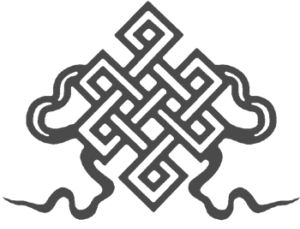
- For Foreign Tourists
- For Domestic Tourists
- IHCAE (Indian Himalayan Centre For Adventure & Eco-Tourism)
- IHM (Institute of Hotel Management)
- Swadesh Darshan 2.0
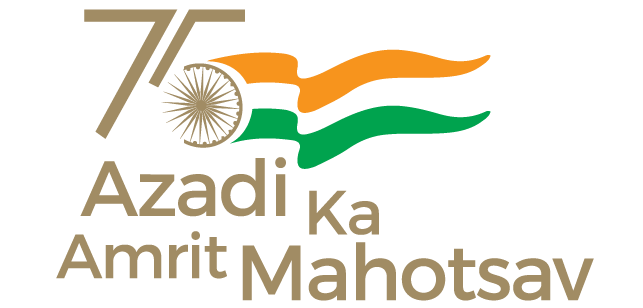
Goechala Trek Sikkim 10 days

- Trekking in Sikkim
Standard Inclusions
- Sight Seeing
- Accomodation
Package Overview
Goechala Trek in Sikkim is widely regarded as India’s most famous high-altitude hiking destination, owing to its elevation and difficulty. When you reach the summit of Goechala, you will be rewarded with a stunning 180-degree view of Mt. Kanchenjunga and other high peaks. September through October are the finest months to visit the Goechala trek, followed by November and December. During the months of March, April, and May, the mountains are visible, and the sunrise and sunset are spectacular. Photographers will benefit greatly throughout the months of October, November, and December. It’s a lovely area to visit in the winter because of the fresh, bitterly cold air. Region – Sikkim Best Time – March, April, may, and September, October, November, December. Total Length Of Trek – 92km Grade – Difficult Highest Point – 4700 meters Cover The Place – Siliguri, Jorethang, Yuksom, Sachen, Tshoka, Dzongri, Kokchurung, Thangsing, Lamuney, Samiti Lake, Goechala Main Attraction Of The Place – View of Mt. Kanchenjunga The weather is ideal for a Goechala trek in the spring or summer. The Goechala trek has two seasons, according to the inscription below. As a result, September through October are the finest months to visit the Goechala trek, followed by November and December. During the months of March, April, and May, the mountains are visible, and the sunrise and sunset are spectacular. Photographers will benefit greatly throughout the months of October, November, and December. It’s a lovely area to visit in the winter because of the fresh, bitterly cold air. There is a difference between the two seasons, Spring and Autumn. The greatest months to accomplish a trek in March, April, and May since the temperatures are ideal for trekkers during this time of year because it is warmer than the other months. However, the scenery is in October and November is superior to other months of the year, and it is just slightly cooler than April and May, making these months the best. As a result, the conclusion and viewpoint are constantly contingent on the participants. There are always two objects, such as an advantage and a disadvantage, in both seasons. The Goechala trek is an eight-day adventure that involves both physical and mental endurance. Due to the length of the days, it is essential to begin trekking as early as possible in the morning and reach camp site before sunset. The ascent can be strenuous at times, but the view from the top is beautiful. For example, the Goechala trek at 15,500 feet is not suitable for everyone; consequently, individuals aged 12 to 60 must be made to engage in this journey. You must be patient with yourself because the trekking routes and altitudes differ.
Popular Destinations Covered
Additional destinations covered.
- Samiti Lake
Additional Attractions Covered
Day-wise itinerary details.
Day 1 New Jalpaiguri (NJP), Baghdogra airport (IXB)to Yuksom
The altitude of this trip is 5700 feet. It is approximately a 150 kms drive and would take you about 8 hours. Pick up from the NJP station around 10 am. Your travel cost is included in the travel package You would be passing through the police check post at Melli. If you are a foreigner, you would require an Inner Line permit which can be got from the driver Travel from NJP to Melli and have lunch on the way to Jorthang. You would have to stay at the Yuksom camp overnight in a guest house.
Day 2 Yuksom to Sachen
The altitude of Yuksom to Sachen would be covered at 7200 ft. It is around 8 kms if you are trekking and would take you approximately 6 hours. There is no good shop on the route and there are less water sources as well. You would thus have to carry your lunch on the way. You would have to cover the dense forests where you would have to climb up and down After half an hour walk from Yuksom, you would view the Tshokha bridge You would be passing through iron bridges and gradually ascend after which you would again have to descend till the second bridge and then again ascend. Walk half an hour to reach the campsite. If you were lucky, you would be able to see the various animals on the trail like mules and yaks. You would have to accommodate in tents as there is no proper lodge
Day 3 Sachen to Tshokha via Bakhim
The altitude of Bakhim is 8600 feet and Tsokha is 9700 feet. It is a 7 kms trek that would take you around 5 hours. Enjoy a pleasant walk till the iron bridge that is around 1 kms from Sachen. The walk to Bakhim would be steep and you can enjoy the marvelous beauty of spots like Mt. Pandlm, Tenzinkhay You can find a number of tea stalls in Bakhim and you can also refill your bottles if you need water Bakhim to Tsokha is a 2 kms trek The trail is filled with beautiful mountain trees and plants like Rhododendron and Alpine berries Have lunch in the campsite and stay in the campsite overnight and start early next morning.
Day 4 Tsokha to Dzongri via Phedang
The altitude of Phedang is approximately 10500 ft. and Dzongri at 12980 ft. It is a 9 kms trek, which would take you 7 hours. You would have to walk at a greater altitude from Tsokha to Phedang, which is 4.5 kms and would take 3 hours and Phedang to Dzongri, which is 4.5 kms and would take 3 hours. The trail is a rocky one that is a zigzag trail till the campsite. You would need to carry packed lunch and water as there is no food or water available on the route.
Day 5 Dzongari to Thansing via Kokcharang
Hike early morning all the way to Dzongri top at 13,675 ft. which would approximately take you around hafl hour to one hour time to reach top. You can witness the wonderful beauty of Kumbhakarna, Frey peak, Kabru South, Kabru Dome, Jupono, Simro, Khangchendzonga and some of the most beautiful mountain summits. Trek to thangsing via kokchurung, Spend your time walking and exploring the rugged mountains and the lush green forests Kokcharang is 12000 ft. and Thansing is 12900 feet. It is a 10 kms trek, which would take approximately 6 hours. Walk through the green meadows and see the beautiful animals and descend to reach Kokcharang Refill your water at Kokcharang Walk to the bridge towards the Prekchu river and then ascend to reach to Thansing You can enjoy lunch in the camp
Day 6 Thansing to Lamuney
The altitude of Thansing to Lamuney is 13650 ft. It is a 3 kms around trek that would take you 1-2 hours maximum. Have breakfast in the morning and move towards Lamuney. This is an easy and smooth trail. Enjoy lunch at the campsite. After reach lamuney just go to hike upto the Samiti Lake for 1 kms. around
Day 7 Lamuney to Goechala via Samiti Lake back to Lamuney
The altitude of the Goechala is 16,000 ft. and it is an trek include asscent and descent 6 kmsApprox trek that would take 5-6 hours. For the goechala summit get ready at 3am and leave 3:30 am, before leave provide you some light food and tea biscuit after that proceed to goechala summit. Lamuney to Samiti Lake is an easy walk for around an hour. Walk from Lamuney to goechala 1st, which is a steep walk for 1 hours, it will take a steep ascent of 2 hours from lake. After enjoying at summit Descend camp take some relaxe an hour so after that have some lunch and again descent to Thansing either Kokcharang
Day 8 Thansing/Kokcharang to Tsokha via Phedang
The altitude of Thansing is 12900 feet and Kokcharang is 12,000 ft. Start at around 7 am and you would reach by 3 pm Carry packed lunch along with you Kokcharang to Phedang is a 4-hour walk, which is around 12 kms. You would need to ascend and descend through all the green and mountainous rhododendron forest
Day 9 Tsokha to Yuksom via Bakhim and Sachen
This is a 5670 ft. altitude and a 15 kms trek that takes 6 hours. This is a route where you would need to descend as day 2 and 3.Carry lunch with you as you may not find food on the trail.
Day 10 Yuksom to NJP/IXB
Yuksom to NJP is a 150 kms drive, which is approximately 8 hours. Leave Yuksom at dawn to reach NJP by 5 PM in a smooth and convenient manner so that you can board your train in time.
Other packages by TravelGangtok Tourism


Home » Shop » Goecha La Trek
- Getting there
- Detailed Itinerary
- cost inclusions
- cancellations
- Moderate Grade Treks in Himalayas
- Sikkim & Darjeeling
- Sikkim Treks
- Spring Treks
- Summer Treks
- Up to 2 weeks trek
Goecha La Trek:
Upcoming Goechala trek in Spring-Summer 2024: Group tour starting on 13th April 2024 , as per the given itinerary. Customised tours for your groups as per your preferred date is also possible.
Goechala Trek is among those trails that are popular with both Indians and people all over the world. Goecha La Trek ranks pretty high on the list, if not a chart-topper. The trail is a typical Eastern Himalayan moist and almost evergreen forest with a truly majestic view of Kangchenjunga, up close along with a series of surrounding peaks.
Available upcoming Group Departures in Autumn/Fall 2023: 18th Nov 2023 as per given itinerary. Submit the Booking Enquiry Form to get all relevant information in email. Customised private tours are also possible for groups of minimum 2 persons and above.
Below is your Complete Guide to Goechala Trek for 2023 . Click on a link to jump to a specific part of information.
Brief itinerary About Goechala Trail Trail profile – Distance vs Altitude graph How difficult is the tek? Goechala View Points 1,2,3 Best time to visit Weather pattern and observations Expected temperature Flora-Fuana – wildlife and birds Sikkim permits Booking for foreigners How to reach basecamp
Brief Itinerary:
Day 1: Drive from NJP or Bagdogra (IXB) to Yuksom (~ 1710 m/5600 ft) – 160 Km by car – 8/9 hours. Lodge or homestay accommodation (twin or triple sharing). Day 2: Trek to Sachen (~ 2200 m/7215 ft) – 8 Km – 4 hours, a half day hike. Camp (twin sharing tent). Day 3: Trek to Tsokha (~ 2960 m/9700 ft) via Bakhim – 7 Km – 4 to 5 hours, half day of climb. Day 4: Trek to Dzongri (~ 3965 m/13005 ft) – 12 Km – 6 to 7 hours via Phedang . Challenging day due to sustained climb. Camp. Day 5: Rest and active acclimatisation day at Dzongri. Sunrise views from Dzongri top (~ 4120 m) and back, 2 hours. Camp at Dzongri. Day 6: Dzongri to Lamuney (~ 4150 m/13700 ft) via Thangsing – 14 Km – 7 to 8 hours. A moderate day. Day 7: Trek to Goecha La ( View Point 1 , ~ 4600 m/15,100 ft) and back to Kochurang – 16 Km – 8/9 hours. Long day. Camp Day 8: Kokchurang to Phedang traverse and then descend to Tsokha – 18 Km – 6/7 hours. A moderate day. Camp. Day 9: Tsokha to Yuksom – 15 Km – 5 to 6 hours. All descent. Lodge or homestay accommodation (twin or triple sharing). Day 10: Return to NJP or Bagdogra by car – 160 Km – 8/9 hours (by 6 pm)
Important notes on the itinerary:
- You need to reach latest by 10 am on Day 1 at NJP, Bagdogra or Siliguri city. You will return to NJP/Bagdogra in 8 hours drive from Yuksom on Day 10, i.e. around 5 to 6 pm .
- Foreigners, i.e. non Indian passport holders need to reach trek base Yuksom on Day 0 . This is to process the Trekking Permit/Protected Area Permit (PAP) from Gangtok. Read the permit requirement section for details. You can visit Dubdi monastery and other places around Yuksom the next day and start your trek from Day 2 as mentioned above.
- All trekkers need to submit the Medical Form at Yuksom along with 2 recent passport size photos . These are MUST to obtain the necessary permits.
- Last ATM at Jorethang and none at Yuksom.
- All major mobile networks work at Yuksom. After that you will not get a signal.
About the Goechala trek and the trail:
This trail inside Khangchendzonga National Park (KNP, buffer overlay region is called Khangchendzonga Biosphere Reserve), a UNESCO heritage site , is indeed a must to do “Bucket-List” trek for all mountainand nature lovers.
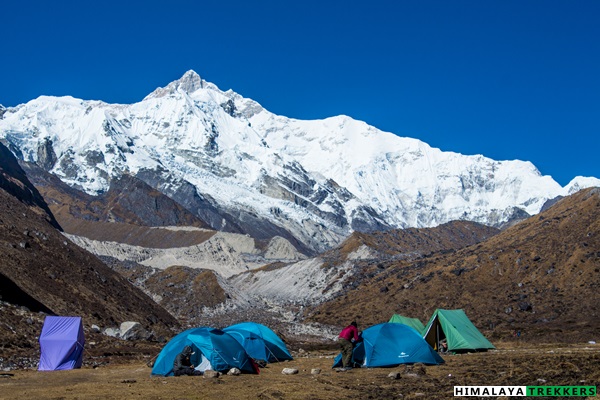
The route climbs steadily to cross a ridge at Dzongri, then proceeds north to the Oglathang Valley to reach the high altitude pass , Goecha La at its head. The trek splits in two parts.
First half till the high point of Dzongri. Dzongri top offers amazing panorama of high peaks in Sikkim and Nepal. Kanchendzongha Range, Kabru North, South and Dome, Pandim, Rathong, Kokthang, Tinchenkhang, Jopuno, Siniolchu are notable. During later half, the trail enters into the scenic wide open meadows and Prek Chu river valley and finally ends up in moraine ridge at Goecha La. The route has very thick vegetation, along with hundreds of bird species, butterflies and wildflowers, especially different varieties of Rhododendrons. Here we will visually walk through the trail to Goecha La.
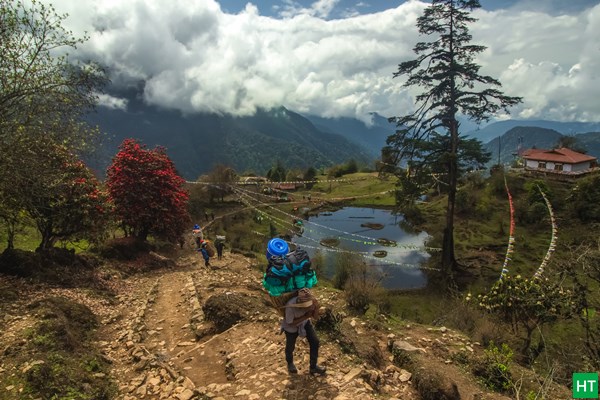
Altitude and distance profile of the trail:
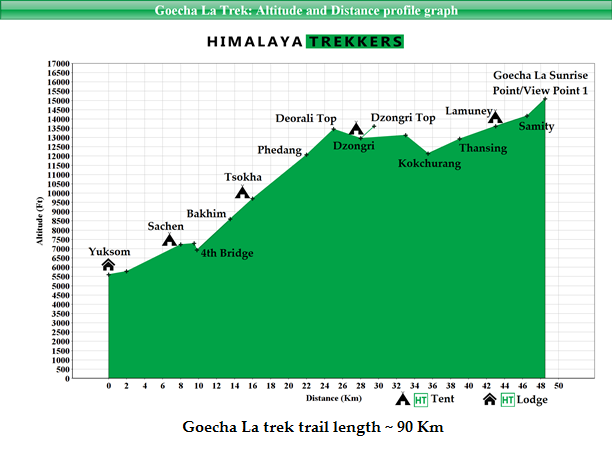
Who can trek to Goechala? Difficulty level
Goechala is a trek for experienced hikers having fairly good physical fitness. Technically it’s not a difficult grade trek but one may get into trouble if not prepared adequately. Let’s have a look into the following facts:
- Goechala is a “Moderate” grade trek while strenuous at the same time.
- Sustained walk of more than 80 Km over a span of 8 days.
- Total altitude gain of almost 3000m/10000 ft of which the climb to Dzongri is a rigorous one.
- Multiple nights of camping at or above 4000m/13100 ft.
To get more understanding and details check the article on Goechala trek difficulty and challenges . To conclude, its safe to take Goechala as your next trekking destination if you have completed a couple of multi day high altitude hikes and are leading an active lifestyle.
What is Goecha La View Point 1/2/3 and Goecha Lake?
With effect from spring 2017, trekkers are NOT allowed to go ahead of GoechaLa Viewpoint 1, a.k.a. Goecha La Sunrise Point . So this is the point till we trek and return at present. This is as per the notice from Kanchendzongha National Park (KNP) authority and is strictly enforced. Till 2016 trekkers had an option to go further to Viewpoint 2 (Goecha Lake) and actual Pass Viewpoint 3 (Goecha La) following the well marked trail ahead.
This restriction is probably due to the findings of Snow Leopard presence through night vision camera trap in recent times around View Point 2. It is obvious that our presence should not bother these dwindling population in their natural habit.
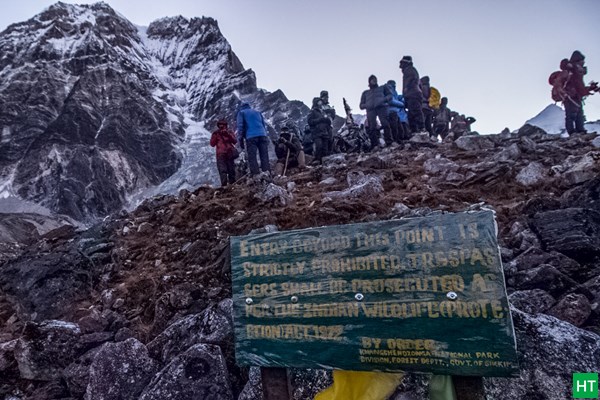
So, as per current permit, we will visit Goecha La View point 1 for sunrise and return. As the name suggests View Point 1 is the best point to view the magnificent sunrise on the panoramic peaks. This point is optimally placed on the trail that you are not too close to certain peaks that you miss the sunrise on others. From Sunrise point you can see Kanchendzongha dominating the vista and a vast panorama of peak sweeping towards the south which are on our left. You can see glaciers, streams, lateral and median moraine ridges on the left and locate a sheer ice fall of Pandim on your right.
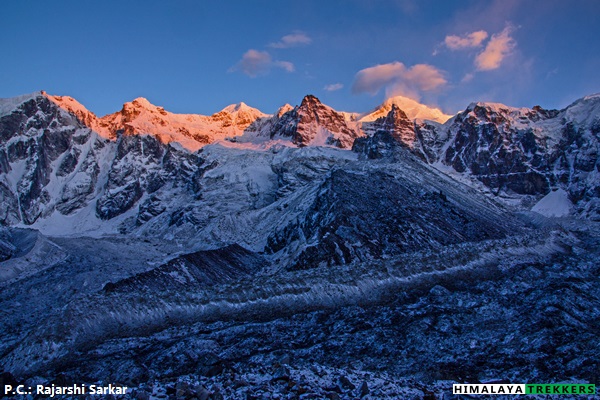
From the sunrise point you can see a rectangular sand bed ahead and down below, called Zemathang. It takes around 1 and half hours to reach Viewpoint 2 (Goecha lake) fromthe Sunrise point.
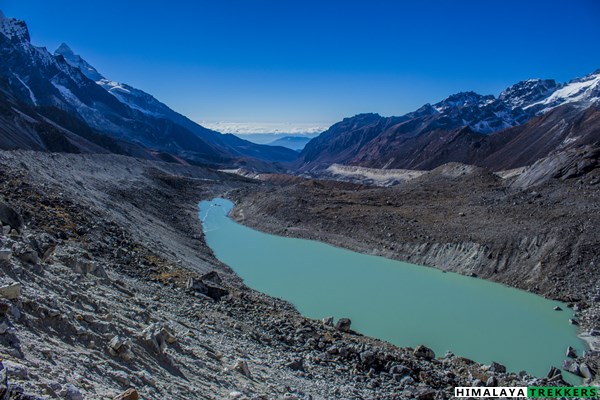
From here the pass is another 30 minutes ahead over the boulder and some moraine/scree zone. Overall it should take someone around 4 hours for a round trip from View Point 1 to Goecha La Pass and return. However as already said it is strictly prohibited by laws to proceed beyond ViewPoint 1.
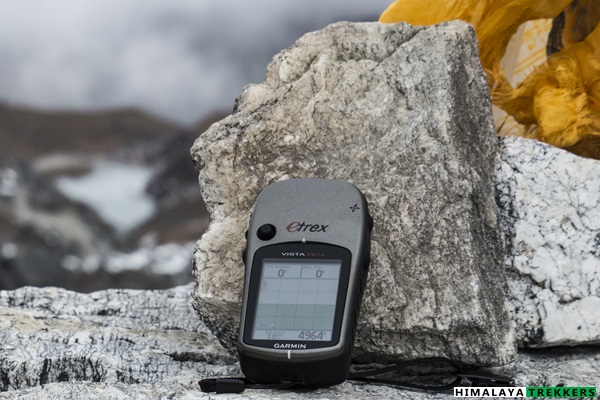
What is the “best” time for Goecha La trek?
As like most of the high altitude treks, there are two seasons for Goecha La. The first being the Spring during April and May – the blooming season. The later, Autumn/Fall, known for clear weather and spectacular mountain views during Oct and November.
Being in the Eastern Himalayas this area observes longer monsoon. Clouds start to hover from April and prolong till October beginning. There are two distinct seasons when this year trek is particularly beautiful:
1) Spring/Summer trek during Rhododendron bloom: April and May is spring time, blooming time. Flowering starts as early as March in the lower elevation, and gradually towards end of spring on higher altitude. Rhododendron and Giant Magnolia are two most famous along with several other wild flower species. Cloudy or misty atmosphere is common during Spring. Though clear mountain views are not uncommon, specially during morning. For bird watching this is certainly a better season to visit.
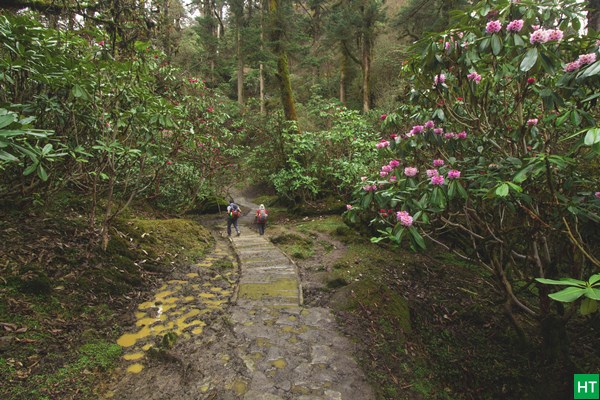
2) Fall/Post Monsoon for clearer weather: From October to end of November. In the beginning of October clouds start moving out from this region and weather becomes clearer. November is particularly known for its crystal clear views of the mountains. From end of November it becomes very cold at Dzongri and higher. Also being very high altitude the chances of snowfall is high.
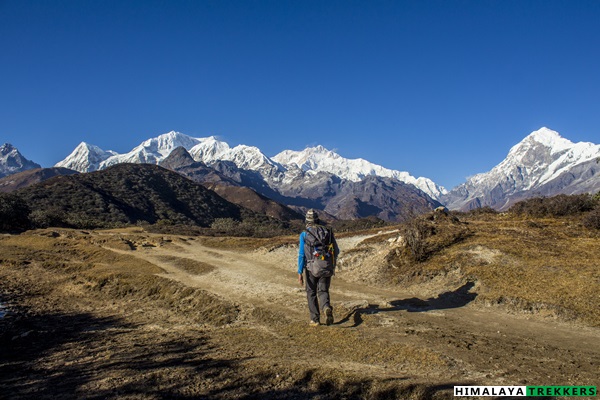
Check out this photo story of Goecha La trek in autumn during mid November .
Best season and weather pattern: Observations and cautions
This is perhaps pretty important if not the most important thing while planning your Goechala trek. Afterall who will not be keen to get the “perfect” weather on this spectacular trail rather than risking with unwanted weather?
Be it pre or post monsoon season, take it with a pinch of salt on it. Climate is evermore changing and you should be careful while selecting a particular week even within the so-called “best season”.
Here are our observations based on our operations since a decade now:
- Don’t plan to start this trek in late May, rather complete it by mid May. Chances of rain are significantly high in late May or later.
- Although the post monsoon season “normally” starts by late September, we have seen rain continuing in early October in recent years. Plan this trek from mid October onward for autumn/fall season if your schedule permits.
- Complete the trek by the end of November. December is typically not a good time for this trek from various aspects including lack of colour, absence of various fauna enroute, very cold conditions on high camps and chances of snowfall (which can make logistics very difficult).
Expected temperatures on Goecha La trek:
Sikkim/Darjeeling region is known for its moist weather, almost year around. At higher altitude dampness adds on top of the natural cold conditions.
Usually the minimum temperature of a place is attained early in the morning, 3 to 5 am. During Goecha la trek, there are couple of days (one being the Dzongri top and the other to Goecha La) when you have to leave camp early in the morning.
In spring/summer, expect the minimum temperature to be around 0°C at Dzongri and Lamuney. At Goecha La View Point 1/Sunrise Point expect colder temperature, specially in the morning. Temperature can dip to – 5°C. Earlier in season will lead to lower temperatures.
In autumn/fall environment becomes colder and temperature will go down. Temperatures plummet further in late October/November. In November temperature may go down as low as -5°C to -10°C at Dzongri and -10°C to -15°at Lamuney (during late November). Do account strong wind at times which in turn can make you feel colder. This is the wind chill factor and feels like temperature can be as lower than the actual. Temperature inside tent will be around 10°C warmer than that of outside. During daytime the temperature will be cool and may vary from 5°C to 20°C depending upon altitude.
Don’t forget to check the List of things to carry in Goecha La trek or download the PDF.
Wildlife and bird species enroute:
Being inside Himalayan biodiversity hotspot, this trail is teeming with birdlife, all the way from Yuksom to Goecha La. Spring/summer season needs particular mention. At lower altitude you can spot different species of Bulbul, Woodpecker, Barbet, Sunbird, Thrush, Treecreeper and Tits. At mid altitude Flycatchers, Fulvetta, Magpie, Wren babblers, Laughingthrushes are abundant. On higher altitudes watch out for variety of Finches, Accentors, and Grandala. If you are a keen birder, then don’t miss this field report and guide for birding on Goecha La trail .
If you are keen in birds, look carefully around bushes before reaching Dzongri. You may easily spot a Blood pheasant, which is the state bird of Sikkim.
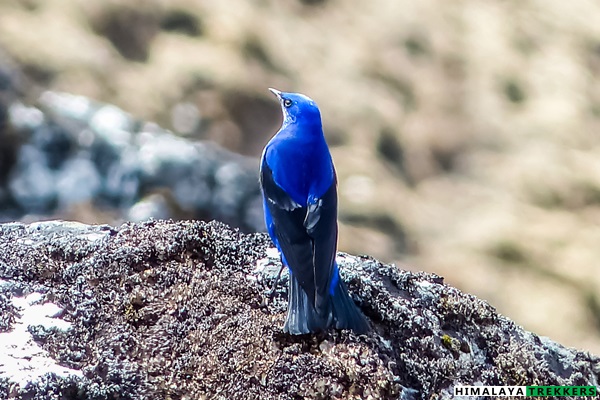
Regarding other wildlife, chances are high that you may spot Yellow-throated marten, Pika, Mountain weasel, and Himalayan Blue Sheep.
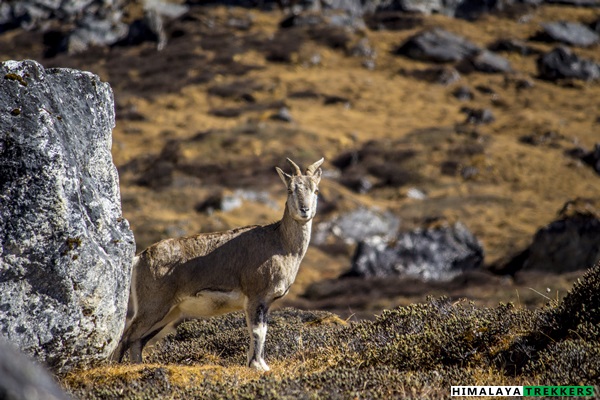
Red Panda is not a common on this trail, you may get a glimpse if you are lucky 🙂

Permit requirements to enter Sikkim and trekking to Goechala:
Sikkim is a permit intensive state to travel. There are different permit required be your are an Indian or a foreigner, whether you trek or a sightseeing car tour. If you are a Non Indian citizen, then you will require additional permits. Read a complete guide on permits which are required to travel in Sikkim for Indians and foreigners .
For Goecha La trek you will need the following, as if you are:
(A) Indian Nationals:
Trekking permit is required inside Kanchendzongha National park (KNP) and the local police verification at Yuksom police outpost. Two recent passport size photos, One personal photo ID card with address proof in it (Aadhar/Driving Licence/Voter ID/Passport) along with photocopies of the same are to be submitted along with a self declaration at Yuksom police outpost. Check here for new permit and safety regulations inside KNP .
(B) For Foreign Nationals:
Any foreigner (some relaxation to Nepalese and Bhutanese citizens) will require erstwhile Inner Line Permit (ILP) and now called Restricted Area Permit (RAP) to enter the boundary of Sikkim. Note that this is FREE OF COST.
Overseas Citizen of India (OCI) cardholders are ALSO treated the same as a foreigner regarding entry and trekking permit inside Sikkim. We need at least two OCI/Foreign nationals to process the Trekking Permit (PAP).
https://www.sikkimtourism.gov.in/Public/TravellerEssentials/pap
- Nationals of Pakistan, Myanmar, Nigeria and China/Hong Kong can only apply for ILP/RAP through Ministry of Home Affairs, Government of India, New Delhi.
- Any other foreign national (now Including Bangladesh ) can apply and obtain the ILP (RAP), Free of cost, at the police check points while entering into Sikkim state by road. You need to have original Passport, INDIAN VISA/e-VISA with photocopies and 3 copies of recent passport size photos. Below are the ONLY three ILP issuing office on Sikkim border:
- Note that foreigners can’t enter Sikkim via trekking routes from West Bengal/Darjeeling e.g. from Sandakphu Phalut to Singalila cross
1) Melli – South Sikkim – On your way to West Sikkim (Yuksom, Pelling, Hilley, Uttarey, Khecheopalri, Pemayangtse etc.) from NJP/Bagdogra/Siliguri.
NOTE: ILP issuing time is from 8 am to 8 pm everyday (We recommend to reach latest by 5 pm)
2) Rangpo East Sikkim – Assistant Director, Tourism Department, Sikkim Tourism Office, : – On your way to Gangtok and East/South & North Sikkim.
3) Rammam Checkpost when you travel from Darjeeling to West Sikkim via Naya Jorethang. Previously foreigners were not allowed on this road but from 2022 it is open for all. This cuts down the time to reach West Sikkim in case you are already in Darjeeling.
If you produce an itinerary of your trip usually you will get an ILP up to 30 days. The State Government is authorized to extend the same by a further period of 30 days. The extension of the permit can be obtained from FRO at Gangtok and office of Superintendent of Police of the North, West and South Districts.
You will need an additional Protected Area Permit (PAP, often referred to as Trekking Permit) for trekking to Goechala and most of the other Sikkim treks. This is issued to a minimum group of 2 foreigners on strength of signed and valid ILP/RAP.
So how do you as a foreigner can book Goecha La trek with HT in Sikkim?
- We will require at least one additional day to process the PAP/Trekking Permit. This can’t be processed in advance and we can only apply once we receive your signed copy of ILP. This means that you can’t start the trek the very next day you enter Sikkim. We would recommend a couple of days in advance.
- To open booking, we will require a minimum of 2 foreign nationals trekking together. Later we can take solo trekker booking in the same group/date in case of Fixed Group Departures.
- We charge an additional ₹ 4000 as Service Charge + 5% Govt. Tax per person to process the Trekking Permit/PAP and also to counter the differential of various permit fees/entry tickets inside Kanchendzongha National Park (KNP) for Non Indian nationals. In this process we get your PAP from Gangtok and send it back to the respective trek base (here Yuksom).
In simple words, it is not difficult to get the required permits to trek inside Sikkim, if you are a group of minimum 2 persons and reach Yuksom on Day 0 to follow our trek itinerary.
Do carry multiple copies (both hard and soft versions) of your recent passport size photos and photocopies of your documents (Passport/Visa/ILP) to avoid a showstopper on mountains!
Access to Goecha La trek base, Yuksom:
You need to reach NJP (by train) or Bagdogra (by flight) in West Bengal for your Darjeeling or Sikkim trips. These are located on two sides of the outskirts of Siliguri city. Kolkata is well connected to Siliguri through flights and overnight trains and busses (due to road dynamics even a Volvo may take 15/16 hours!) .
Do carefully check for the latest arrival timings on Day 1 of the itinerary (latest by 9 am) before you book your train or flight tickets.
We will arrange a pickup and drop from NJP/Siliguri to Yuksom and back. This will be shared by the team members on actual basis and you pay directly to driver/owner on spot. Typically a Tata Sumo/Mahindra Maxx type Jeep charges ₹ 7 000 one side which can accommodate comfortably 5 to 6 and up to 8 persons. Tempo Traveller type vans are not available in this route. This cost is NOT included in the TREK FEE .
For details on how to reach nearest railways station/airport and move to trek base independently/public transportation check the details in GETTING THERE TAB .
Here is a road map with major points enroute from NJP/Bagdogra to Yuksom.
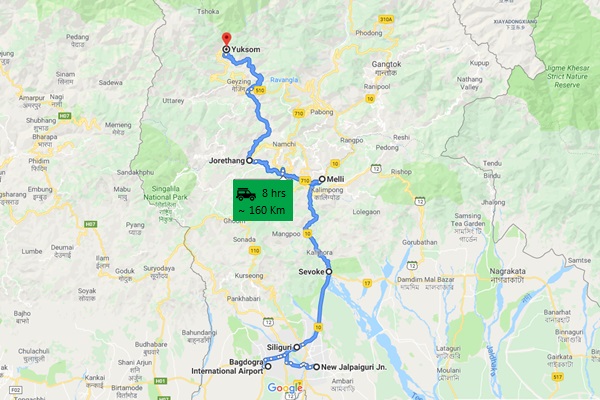
Why treks with HT?
Location: Sikkim, Eastern Himalayas.
Duration: 8 days of trekking; NJP to NJP in 10 days
Prerequisite: One or two prior Himalayan trekking experience is advised. Trekkers must be in good physical condition to endure sustained walk and climb.
Grade: Moderate (& Strenuous)
Physicality: 7/10
Trail Length: 80 Km
Highest Point: Goecha La (View Point 1/Sunrise point) ~ 4600 m/15100 ft
Seasons: April/May (Spring/Summer) & October/November (Post Monsoon/Fall)
Further Option: From Dzongri one can add a 3 days side trip to Chaurikhang, base camp of Himalayan Mountaineering Institute (HMI). Also one may take a different route while descending from Thansing to Lampokhri and then to Labdang and Tashiding (Goecha La Kasturi trek).
Access: Trek starting point (trek base) is Yuksom, 160 Km from NJP.
Rail station: New Jailpaiguri (Station Code: NJP)
Airport: Bagdogra (Airport Code: IXB)
Upcoming scheduled dates for Goecha La trek:
- You can check the scheduled Fixed Departure dates in the calendar available inside Booking Form or inside REGISTER NOW form. Tour starting Dates are highlighted as per our itinerary ( Day 1 of 10 days itinerary ).
- At present BOOK NOW functionality is disabled . You can get all the information in your email by submitting the REGISTER NOW form.
- If you are a group of people and available dates are not matching then you may select Custom date mode (by clicking the Select your custom date) and fill in the displayed form.
- You can also check all the available dates at a glance in our TREK CALENDAR .
- Trekkers need to reach NJP/Bagdogra on Day 1 morning (latest by 10 am). Return to NJP/Bagdogra on Day 10 early evening (6 pm). Arrange your tickets for inward journey and return accordingly.
How to reach Yuksom (The trek base):
Depending upon the trek members we will arrange a pickup and drop from NJP/Siliguri to Yuksom and back. This will be shared equally by the availing team members on actual basis.
Typically a Tata Sumo/Mahindra Maxx/Bolero charges Rs 6000 one side which can accommodate 6 to 8 people. This is NOT included in the TREK FEE and to be payable directly to the driver/owner.
Nearest Rail station: New Jailpaiguri (Station Code: NJP)
Nearest Airport: Bagdogra (Airport Code: IXB)
If you want to reach Yuksom by public transportation then here is the options. You have to reach Tenzing Norgay Bus Terminus in Siliguri. Then take a shared jeep for Jorethang in south Sikkim, takes around 4 hours. From there one may get a shared jeep service for Yuksom, but a seat is not guaranteed. The earlier you reach Jorethang the chances are higher to get this service. From Jorethang it is another 3 hours journey to Yuksom. Often It is difficult to reach Yuksom from NJP/Siliguri in one day.
For the treks in Sikkim and Darjeeling , one has to reach the city of Siliguri (considered the corridor to the North-East) in West Bengal.
The nearest Railway Station is New Jalpaiguri (NJP), 5 Km from Siliguri and the airport Bagdogra is 10 Km.
You can fly or by train reach Siliguri from Kolkata ( good for the trekkers coming from South/central or Western India) or Delhi as per your convenience from any part within India.
Direct flights are available from New Delhi and Kolkata. All the flights to Bagdogra reaches late in the morning or early afternoon. It becomes difficult to reach the trek base like Yuksom/Hilley/Uttarey on the same day unless a car is booked (takes around 8 hours to reach). One can stay the night in Siliguri and start the travel to the trek base next morning. It is better to reach Siliguri by flight/train to Kolkata and then take an overnight train to NJP unless you are coming from northern India.
From Kolkata to Siliguri:
1) by train:.
There are several overnight trains running between Kolkata (Howrah or Sealdah) to NJP. Day trains are also available.
From airport (Dumdum, CCU) , Sealdah railway station is 15 Km and may take 1 to 2 hours depending upon the time you travel. Howrah is 17 Km and may take up to 2 hours during the heavy traffic in the rush hours. Howrah and Sealdah are only 5 Km apart, though it may take an hour to travel. Pre Paid taxi booths are available.
DARJEELING MAIL – Train No. – 12343 (Very good option to reach NJP in the morning. Starts around 10 pm in the night and reaches NJP 8 am in the morning.) PADATIK EXPRESS – Train No. – 12377 (Very good option to reach NJP in the morning. Starts around 11 pm in the night and reaches NJP 9 am in the morning.) KANCHANKANYA EXPRESS – Train No. – 13149 (Starts at 8:30 pm in the evening and reaches NJP 7:30 am in the morning) SHATABDI EXPRESS – Train No. – 12041 (Day train, starts 2:15 pm in the afternoon and reaches NP at 10:20 pm in the night. There are hotels/lodges outside the railway station at a walking distance of 5 minutes. Otherwise book an auto rickshaw/taxi to Siliguri, which takes around 15 minutes. There are several hotels around Siliguri Junction/Tenzing Norgay Bus Terminus/S.N.T (Sikkim Nationalised Transport stand).
There are other trains also of which some run daily and some on particular days of week.
Avoid booking wait listed (WL) tickets in AC classes (1A/2A/3A) or Chair Car (CC). Book Sleeper class (SL)/Second Sitting class (2S) tickets which have normally more seats/berths and hence much better chance to get confirmed.
2) By flight:
From Kolkata(CCU) take a flight to Bagdogra (IXB). From airport book a taxi to reach Siliguri which is 10 Km away.
From Delhi to Siliguri:
1) by train:.
Following trains are good to reach NJP and run daily.
DIBRUGARH RAJDHANI – Train No. 12424 (arrives NJP late in the morning @ 10:45 am) NORTH EAST EXP – Train No. 12506 (arrives NJP @ 8:20 am in the morning) BRAHMAPUTRA MAIL – Train No. 12424 (arrives NJP at 5 am in the morning. But this train runs late frequently.
Always avoid booking wait listed (WL) tickets in AC classes (1A/2A/3A) or Chair Car (CC). Book Sleeper class (SL)/Second Sitting class (2S) tickets which have normally more seats/berth and hence much better chance to get confirmed.
From Delhi (DEL) take a flight to Bagdogra (IXB). From airport book a taxi to reach Siliguri which is 10 Km away.
For night stay in NJP/SIliguri:
Trekkers reaching on the previous day before the journey to the actual trek base need to stay the night in Siliguri/NJP. There are several options in Siliguri for spending a night while staying in Standard or Budget accommodation. It is better to reach to the centre of Siliguri called Siliguri Junction (adjacent to Tenzing Norgay Bus Terminus and Sikkim Nationalised Transport/S.N.T Bus terminus). It takes 30 minutes from Bagdogra or 15 minutes from NJP. There are hotels 5 minutes walking from NJP also.
Return from NJP/Bagdogra:
Normally you reach NJP/Bagdogra from any trek base by 5/6 pm in the evening. You can take any train after 7 pm. Accordingly arrange your homeward journey.
Drive to Yuksom: 160 Km - 8/9 hours
Pickup from New Jalpaiguri Railway Station (NJP) in the morning and reach the trek base Yuksom (~ 1710 m/5600 ft) which was the first capital of Sikkim. The distance is around 160 Km and may take 8 hour including a lunch break. The road goes via Teesta, Malli, Jorethang and Tashiding.

Yuksom is a typical small and laid-back Sikkimese town with one strip of Bazaar area in the centre. The village is spread out on the valley with Kabru peak setting the backdrop. The first king of Sikkim, His Holiness Funchook Namgyal was crowned here by His Holiness Gyalwa Latchen Chembo, the same man who brought Buddhism to Sikkim in 1641. There are quite a few hotels and lodges ranging from premium to budget type. Also there are few restaurants offering veg and non veg food in the Bazaar area. All the major mobile networks wok here and has a small internet cafe. Night stay in tourist lodge.
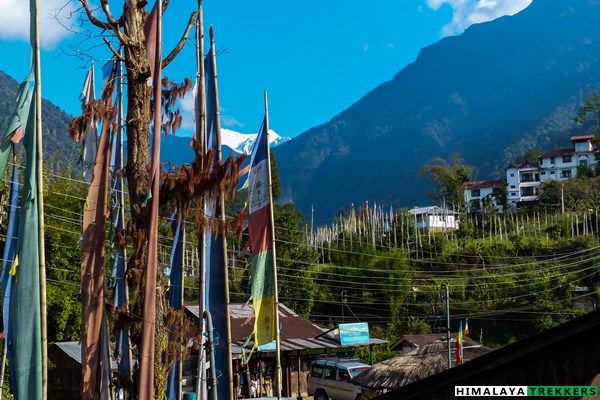
Note: If you plan to reach Bagdogra on Day 1 and hire a reserved vehicle, arrive latest by noon. People willing to reach Yuksom independently must reach NJP latest by 7 am (detail is given above on how to reach Yuksom by public transportation). It is often handy to fly to Kolkata and take the overnight trains to NJP which reach latest by 10 am or you may fly directly to Bagdogra on Day 0. Due to ongoing road construction work between Melli and Jorethang, it takes more than 3 hours to reach Jorethang. Yuksom is another 75 Km on hilly road from here and is another 3 hours. Also you need a break (preferably a lunch break at Jorethang). Yuksom is a small stretch of Bazaar (where the lodges and restaurants are clustered) and sleeps as expected on mountains latest by 9 pm.
Trek from Yuksom to Sachen: 8 Km - 4 hours
We start our 8 days of strenuous but astonishingly beautiful trek from today. To start with an easy day, while spending time and gaining some height on the mountain for Sachen (~ 2200 m/7200 ft). Usually it takes some time in the morning to process the permit at police check post and we start around 9/9:30 am in the morning. By the time you can visit Yuksom Coronation site which is some 5/7 minutes from the bazaar area and has a small monastery adjacent to it.

Have your breakfast from one of the available restaurants and then we take the left trail from the main road in Bazaar area. After crossing desolated Forest Huts and KNP Check post, locate a sign stating “Satellite phones are not allowed in this route” in the Yuksom Colony area. From here we leave the village and get into the trek trail. After leaving few last houses and a nursery we finally depart from Yuksom. The trail is typically a narrow river valley while the river is running in the gorge. We slowly ascent going through the thick vegetation of sub alpine evergreen forest of Sikkim. It runs through moss-laden forests of Oak, Spruce, Chestnut, Fir, Pines, giant Magnolias and wide variety of orchids. Shades of Green change seasonally.
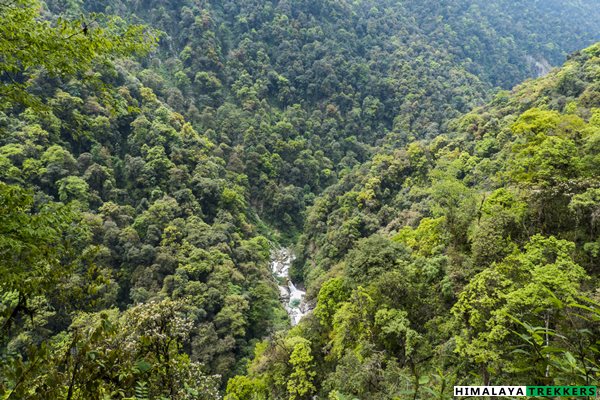
Our trail now enters into Kanchendzongha National Park. This Biosphere reserve is a Botanist’s paradise and rich with exotic birds, butterflies and mammals. We have to cross 3 bridges on the river today, referred as 1st, 2nd and 3rd bridge. We continue our gradual ascent to a clearing we reach, which is our campsite of Sachen for the day. There is a Kitchen Hut built by the Forest Department on the left of the trail and the camping ground is above the trail on the right. The site is full of different bird species including Thrushes and Laughing Thrushes. It may take around 4 hours and we cover a distance of 8 Km. Camp for the night.
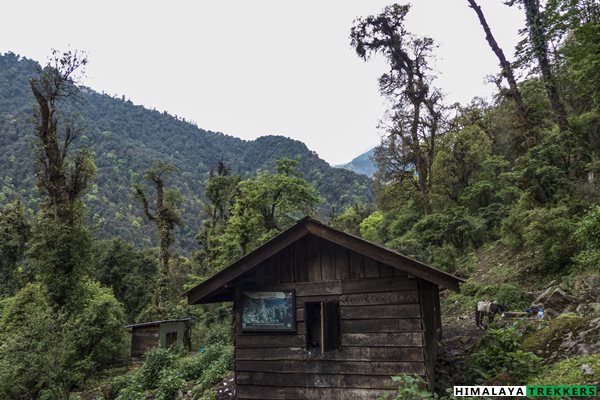
Trek to Tsokha: 8 Km - 5/6 hours
We start gradually for first half an hour and then descend to the 4th bridge on the river Prek Chu (Chu means River in Nepali), the last of the four but most significant. Prek River coming down from Goecha La/Samity area meets Rathong Chu which is feeding from Rathong glacier someway further down.After crossing the bridge, the trail turns to left and spirals up. This is the first half of climb for today and continuous one with steady height gain.
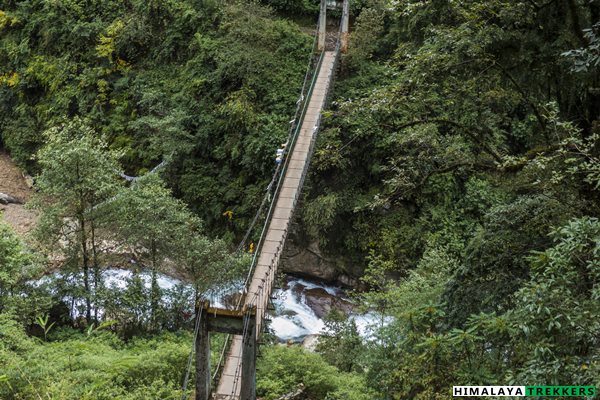
We climb through the often misty forest and slowly the valley widens up on our left. Slowly climbing for an hour and half we reach at the top of this ridge and suddenly turning to right we see the Forest Bungalow of Bakhim ( ~ 2620 m/8600 ft) at our left and house with a coffee shop on the right. The Bungalow with concrete exterior and wooden interior suffered during the earthquake in 2011 but still serves the night halt for the Himalayan Mountaineering Institute (HMI) students. A cup of tea or coffee looking at the valley down under should not be missed. On a clear day one can see Yuksom and the hill station of Pelling from this viewpoint.
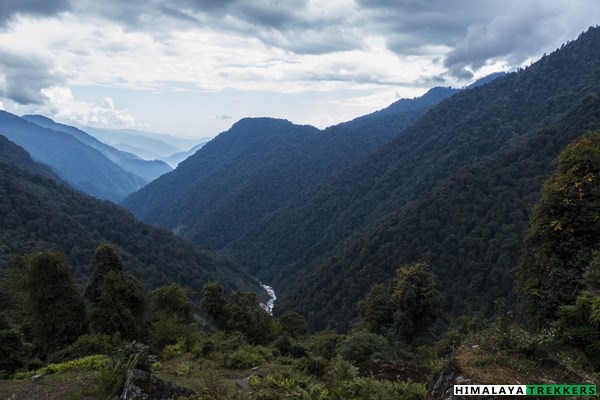
After a much needed break we start our second phase of climb for the day after our break. The trail continues to zigzag and the first noticeable Rhododendron trees appear. During spring we can see the red and the white flowers particularly in abundance. There is a short cut on the right of the main trail but it is better to stay on the well defined track. We turn right and reach a clearing in the forest. From here we continue our climb and until we reach our destination Tsokha (~ 2960 m/9700 ft) a table top on top of the hill. The camping ground of Tsokha is on the right of the trail and is a delight. The wooden Trekkers Hut is adjacent to the camping ground and well equipped with rooms and a big dinning hall. We get the first view of the snow capped mountains behind the Trekkers Hut. Magnificent Mount Pandim is standing straight along with Jopunu and Tinchenkhang.
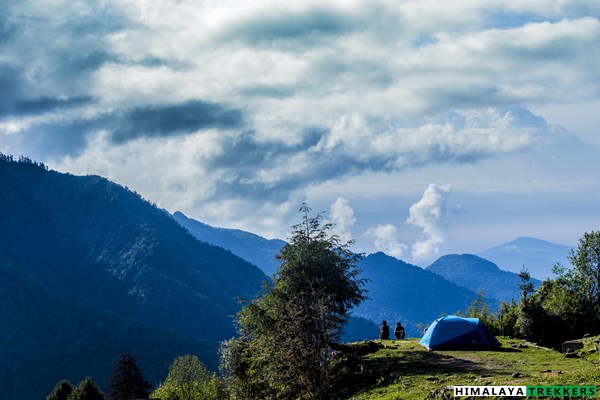
Tsokha used to be a settlement for the Tibetan refugees but recently the people are rehabilitated at Yuksom. There are few private guest houses but one is still operating. Also there is a monastery few turns up on the left of the trail with a shallow pond in front of it. In the afternoon it is worth to visit the monastery and the lone shop which serves tea, coffee and sells woollen clothes, gloves and shawl.
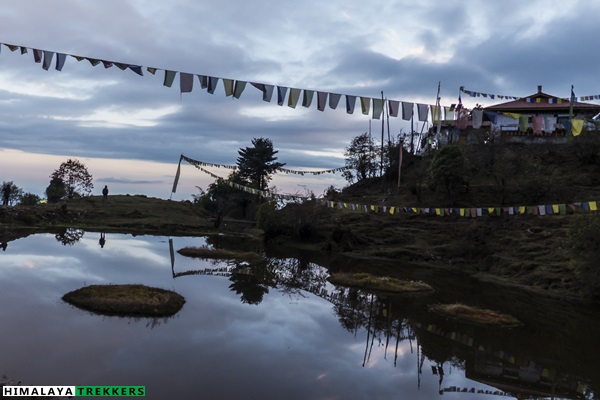
Tsokha has mobile networks working but not a steady one. You may talk with your near and dear ones from here if you are lucky. Total distance we cover is 8 Km and may take up to 5/6 hours. Night stay in tent.
Trek to Dzongri: 12 Km - 6/7 hours
If the weather is clear we can see the sunrise on the backdrop of Mt. Pandim, standing from the camping ground. Being on the mountain for 3 days, our body is supposed to get acclimatised by this time. Today we gain significant height while most of the climb is moderately steep. The walk can be divided into 3 parts, climb till Phedang (~ 3680 m/12070 ft), then further ascent to Deorali Top (~ 4100 m/13,450 ft) and finally a gradual descent to our destination for the day Dzongri (~ 3965 m/13005 ft). We leave Tsokha after crossing the monastery and turn right as the trail to start the steep climb for about half an hour. Then the trail is eases with paved wooden logs as rain turns it pretty muddy by the movements of Yaks and Horses. This trail is surrounded by dense Rhododendrons trees bloomed in different colour ( flowering season is mid April to mid May) and conifers. This is perhaps one of the best jungle trails on the Himalaya and takes away the tiredness of body. Often cloudy, the misty scent of the trail is unforgettable. After climbing another hour we reach to a small clearing where we take a rest and enjoy the silence of the jungle. From this point climbing for little more than an hour we reach the top of this hill, a wide open area of Phedang. There is a Kitchen hut and small sitting arrangement for the tired trekkers. The area remains cloudy mostly after midday and can be damp and cold. The trail splits from this place as the straight one goes to Dzongri and the trail on the right leads to Kokchurang. After a much needed replenishment we start for the 2nd half of our climb. The trail climbs steadily again zigzagging while we climb slowly as can can feel the altitude resulting into headache. Here the Rhododendron trees have turned it bushes aligning more horizontally. Climbing for two hours we reach the top of Deorali, a sacred place having a Chorten and prayer flags. There are spectacular views of the Sikkim mountains and its peaks from here. We start descending from this point and after crossing a clearing on a meadow we climb a small hump. From this hump we gently descend and traverse to the meadows of Dzongri. Walking around an hour we reach the Trekkers Hut and the camping side. The wooden hut consists of four rooms, a dinning hall and a separate setup for kitchen. The camping ground is on the left side of the hut along the narrow stream which flows in front of the hut. We camp or stay in the hut. Total distance is 12 Km and may take 6/7 hours. Night stay either in hut or tent.
Rest and active acclimatisation day at Dzongri. Climb to Dzongri top and back
Dzongri to lamuney– 14 km – 7/8 hours, trek to goecha la (view point 1) and back to kochurang – 16 km – 8/10 hours, trek to tsokha: 18 km - 6/7 hours, trek to yuksom: 15 km - 5/6 hours, drive to njp/bagdoga: 160 km - 8/9 hours.
P.S.: Distances and altitudes are approximate and may not be exact.
GROUP DEPARTURE TREK FEE: ₹ 19,950 (Yuksom to Yuksom) + 5% GST
If you prefer a personalised private tour (as per your dates) or prefer to customise this trek for your team, then check the cost structure at the bottom of this page.
Inclusions:
2 night’s accommodation at basecamp Yuksom (Day 1 & Day 9) in a homestay on a twin or triple sharing basis.
All tented accommodation on a twin sharing basis during the trekking days.
All meals during the trek (Day 1 dinner to Day 9 dinner) . Breakfast, lunch (packed or hot dependeing on the day) and dinner. Regular Indian style nutritious vegetarian food during the trek (including occasional eggs). Morning and evening tea will be served.
Excellent Trekking Guide, who will be a local to this particular area and has sound knowledge of the trekking trails around.
Specialised Cook, Support staff, Porters/Packed Animals for carrying the central logistics of the trek.
Camping equipment like Sleeping bag, Carry mattress, Gaiters (if required). (Bring your own sleeping bag if you have a high altitude rated personal Sleeping Bag. Otherwise you should bring a liner for a better hygiene)
Kitchen, dinning and toilet tent (dry pit, portable) as required during the trek.
All permit fee, camping charges, forest levy required for the trek inside Kanchendzongha National Park for Indian nationals .
Basic Medical & First Aid kit.
Travel cum Medical Insurance Policy covering high altitude trekking tours (For Indian nationals it is included in the TREK FEE, up to 60 years of age). It covers your trek as well as your return journey to NJP, i.e. 10 days itinerary.
Exclusions:
Transportation from NJP/Bagdogra to Yuksom and return. One way Tata Sumo type vehicle fare is ₹ 7000 and can be shared by 5/6 persons and upto 8 persons. We can arrange the pick up and you pay directly to the driver, sharing equally with the fellow trekkers (comes around ₹ 1000 to ₹ 1500 per person on way depending on the number of people sharing.
We assume that you will carry your personal Rucksack/Backpack with all your personal belongings. If you like to offload your rucksack/backsack and like to be carried by horse then you need to pay additional ₹ 3000 + 5% GST for the entire duration of the trek (8 days). The rucksack should not weigh more than 10 Kg.
We charge an additional ₹ 4000 as Service Charge + 5% Govt. Tax per person to process the Trekking Permit/PAP and also to counter the differential of various permit fees/entry tickets inside Kanchendzongha National Park (KNP) for Non Indian nationals/Foreigners/OCIs . In this process we get your PAP from Gangtok and send it back to Yuksom. We may arrange your additional stay at Yuksom at ₹ 1800 per person on a twin sharing basis that includes breakfast and dinner in a simple homestay with attached washroom.
Single occupancy tent ₹ 3,000 + 5% GST for the entire trek
Any tip or gratuity to the HT support staff.
Anything which is NOT mentioned in the “Inclusions” or personal in nature.
Customised/Private TREK FEE:
The following rates are applicable when you prefer your own trek (customised/private tours) with the above inclusions and exclusions , i.e., the same as fixed group tours.
- We assume that you have read and understood our “ Terms & Conditions ” before Booking.
- To book a Fixed Departure/Schedule trek or a Customised/Private trek pay 25% of the Trek/Tour Fee as the initial “Booking Amount” . You can pay by Net banking/Draft/Credit/Debit/AMEX cards. This will ensure your participation in the desired trek and we will reserve your place in the scheduled date. You need to pay the remaining amount at least 15 days before starting the trek .
Cancellations:
- “Booking Amount” i.e. 25% of the Trek/Tour Fee is Non-Refundable at any stage.
- If in case you are not able to make it due to unavoidable reason(s), we provide you a very flexible choice of Shifting to another trek withing next one year . One year is counted from the starting date of the trek/tour you booked initially with us.
- In case you postpone your trip you need to inform minimum of 15 days before the trek/tour starting date. (Though we suggest to inform us earlier if known)
- In case you postpone a Trek/Tour before 15 days of the scheduled starting date, you may shift to the same trek/tour group scheduled in the same season or within next one year. You may shift to another suitable route also. For changing any, you need our approval first. Your request must be in written communication through your registered email with us.
- If you Cancel/Postpone a trek/trip from 14 days to 8 days before starting date , your Booking Amount is Non-Refundable. We will not take any request of shifting dates. We will charge 50% of the amount as Cancellation Charges and process refund of remaining 50%. You may also shift to another group within next year but 25% Booking Amount will be deemed as Cancellation Charge and the rest amount will be transferred to the shifted group.
- If you cancel a trek/trip before 7 days (i.e. a week) before starting date there will be NO REFUND.
- In case of any unforeseen incident including but not limited to natural calamities like flood, earthquake, landslide, forest fire or any political unrest, if we are compelled to cancel the trek/trip, you will be entitled to redeem the full amount for the same/similar kind of trek/trip within next one year.
Here we have collated different articles and blogs on Goechala for your ready reference that we have published on our website:
Exploring Yuksom and around
How difficult is Goechala trek? What are the challenges? An analysis
A photo story of Goecha La trek in autumn during mid November
Field report and guide for birding on Goecha La trail
What about Goechala trek during winters (Dec to Feb)
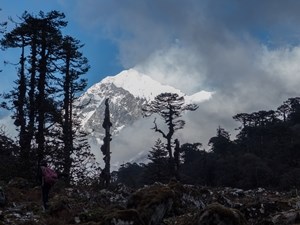
Tour Reviews

Last week a group of 7 individuals part of the HT group all completed the Goechala trek very successfully. We were given complete support and immense guidance even before the start of the trek by Himalayan trekkers. When we got to Yuksom, trek leader Ram and his staff were caring for us and made sure we were all taken care off very well and they supported our finish. The final touch by the chef by baking us a wonderful cake in the absence of an oven was very overwhelming. Looking forward to more of these Himalayan treks with HT.

It was a great experience in the month of April 2022 for a group of six people and we experienced all forms of nature while trekking right from hail storm to snow flakes and even rainfall. The trek was tiring but we all made it to the summit at the end of the day. All thanks to our trek leader. MR. RAM, a local guide. He helped us in every possible way. We got best of services compared to other trek groups starting from having enough food on the way till having drinkable hot water during camping any time. Nothing fall short and none of us fell sick. All the best, keep having best foot forward the way you are doing and looking forward for more bonding with you in coming days.
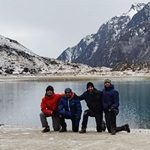
The 4 of us did the Goechala Trek with Himalaya Trekkers in April 2021. We requested HT for an exclusive trek for our group and they gave us a great trekking experience. Right from the planning phase, Rhik and Mr. Roy were responsive and made sure all our requests were taken care of. Their guide Dominic was there at the Bagdogra airport to pick us up and was with us throughout the trek – he is an amazingly warm and fun person to be with. At the base camp, 2 people from our group didn’t have all the required documents in place and Dominic was kind enough to put everything together before we started the trek. During the trek, the food, luggage transfers and all the camping arrangements were well taken care. We just enjoyed ourselves while the HT team took care of everything. Overall, a fantastic experience and we’re sure to trek with HT again.
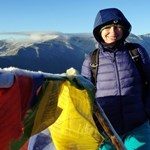
I was with HT at the Goecha La pass in November 2019. Great organization, wonderful People and a beautiful Route. Very good Guides, delicious Food, amazing Views. It was my first such a high Trip and from the beginning I felt good and safe there and if I ever go again, I will definitely go with HT 🙂
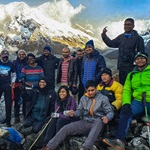
opted for the Goecha La trail in late September, my second hike with HT. Our point of contact, Rhik, was a great guy – friendly, warm and very helpful. He took good care of operations. Also, took note of trekkers feedback. Kiran, our tour guide, was probably the best part of the entire package! It was fun completing the challenging trail with him. He took care of our meals and guided whenever required. Some of us have already made him our go-to guide for our next big Sikkim adventure! The hike group comprised a diverse bunch of folks – warm, friendly and future hike buddies. The best part about HT is that they don’t ‘school’ you – you’re expected to figure out basic things by yourself. I really appreciated this aspect. All the best, onwards and upwards!
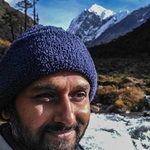
It was my first Trek, to Goecha La and trust me, I was very unprepared, even after repeated and personal advice from HT organizers (Rhik) on “Do and Don’t”. At the base camp, we got a fantastic guide (Kiran)- and I was convinced to buy a trekking pole and replace jeans by Trekking trousers and started my journey on running shoes, which was torn in a day. It is a whole story, how I managed the rest of the days, but our guide and other crews played a very important role. We met different groups on the way; it was a great opportunity to compare them. I could share the organisational trouble faced by other trekkers from other group and I was convinced that I choose the best by accident. Next time, HT for sure (if they have package of my interest). Remember, they take at most 15 trekkers in a group – it helps as you get a lot of personal attention. Hope they keep it that way !
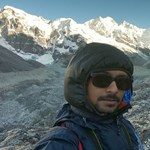
I did the Goecha la trek with HT in October 2019 and I also did Kuari pass (Curzon’s trail) in November 2018. Both of the experiences with them were overwhelming. I would always recommend Himalaya trekkers because of their excellent trek leaders, professionalism and hospitality while trekking. I must mention that they always provide the best suggestion for any kind of trekking guidance one needs. I am sure about one thing that I will be trying to complete all my bucket list treks only with Himalaya Trekkers. Thanks for all the wonderful memories that I have made while traveling with HT.

Oh yes! Rhik was simply awesome. What a nice guy! Professional and knows his stuff. We had a great time with HT. Totally recommend them! The trek was well organized, they gave us good quality sleeping bags, tents were always pitched and ready and food was hot and tasty.

I would like to take this opportunity to thank you for a truly fantastic trip. The whole team – organised by MB – were nothing short of brilliant. MB in particular is a fantastic guide and was always helpful, making sure that all members of the group were safe and catered for – he is a real asset to your company. I will not hesitate to recommend HT to my friends and family.
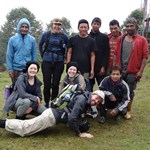
We were ready for an adventure in the Himalayas and that is exactly what Himalaya Trekkers provided for us. Pre-trek communication and organization with Sapta and Rhik provided both an efficient and a comprehensive preparation, laying the foundation for a once in a life time, never-to-forget experience. The trekking team in Sikkim led by MB delivered exceptional personalized service, responding to every concern with respect and diligence. Catering, led by Bhim was as delicious as it was creatively gourmet. When we next trek it will be with Himalaya Trekkers.
I did Goecha La Trek with Himalaya Trekkers in Oct 2015. The trek was really exhilarating and exciting. Saptarishi, founder at Himalaya Trekkers was really helpful in providing the inputs for both physical and logistical preparation. The trek itself was quite well managed and organized by the trek leader. The excellent part was that the group size was only 8. We could enjoy the company of each other during the trek and were able to enjoy the scenery around the camping sites. Overall, the trek leader, helpers and cooks were really friendly and there was a good atmosphere between the group. I will highly recommend Himalaya trekkers to any one who is looking to do treks in Himalayas.
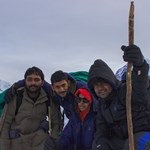
It was a pleasant experience. I would like to mention first that I truly believe your guidelines on aerobic fitness development helped us enjoy the trek better. The stay at Yuksom was simple and comfortable, thus more to our taste. The guide (Bheem), the cook and Milan were really nice fellows. While they took care of the essentials, they also left us be by ourselves a lot. Eg., not instructing novices like us continually on how to walk, but only pointing out where we were wrong etc… The food was, well, above expectation by far. We would hire the cook ourselves at Chennai if he would just come (notice we never mention his name..? Yes, we do not care for competition). The view, throughout the route, was extraordinary! We are a bit sad that we could not proceed beyond Dzongri. However, only we are to blame for it. Better shoes next time. And yes, if we decide to go on a trek again, we’ll most likely give you a ring.
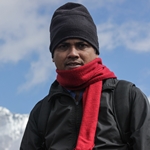
Himalaya Trekkers is the best availed opportunity for trek lovers, if u are planning for any trekking they are your best solutions. They organise as per your conditions suitable which is beyond golden words. Keep it up.
Leave a Review
Cancel reply.
You must be logged in to post a comment.
You May Also Like

Buran Ghati Trek
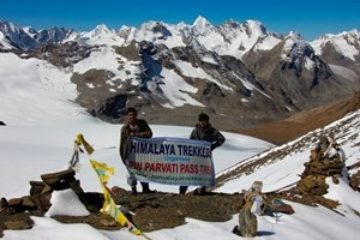
Pin Parvati Pass Trek
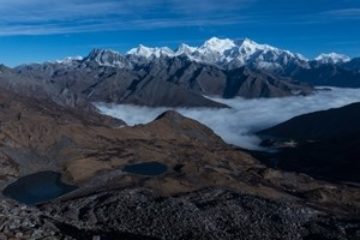
Dafeybhir Trek
Submit this form that we can email you all the necessary details and call you to discuss., tour starting date: green boxed dates indicate starting of a scheduled fixed departure tour (day 1 of our tour itinerary). please check the calendar and choose a suitable fixed departure date (green boxed) unless dates are not matching or you are looking for a customised/private trip., i accept the terms & conditions.

IMAGES
VIDEO
COMMENTS
Why Goechala Is A Must Do Trek. Located at an altitude of more than 15,000 ft. Goechala offers an adventure like never before. While this is one of the oldest trekking routes in the Himalayas, it isnt quite as popular. However, the Goechala Trek is gaining some popularity among adventure enthusiasts in recent times. Goechala is a dream for many ...
When planning your Goechala Trek Itinerary, it's essential to choose the right time of year to go.The best time to trek is from mid-October to mid-December, as the weather is clear and the skies are usually free of clouds.The month of spring (March, April, and May) is also considered the best time for a goechala trek.It is also when the rhododendron forests bloom, adding even more beauty to ...
The Temperatures at Goechala Trek are 15 degrees Celsius to 22 degrees Celsius in summers during the day and 7 degrees Celsius to -1 degrees Celsius during the night. GoechaLa Trekking Package by Trekmunk. The Goechala Trek 2020 is being organized by Trekmunk and the package starts from 19500 INR and organizes trips all year round. Book for ...
Dealing with the following should give you a fair chance to complete Goechala trek in winter. Severe Cold Conditions: By mid November night temperature dips as low as -15°C at ~4000 m/13000 ft or above. Early morning hikes to Dzongri top or Goechala View Point 1 will surely test your endurance against the cold.
Goechala in December will be tough to traverse on snow-covered trails. The upper campsites start receiving snowfall in mid-December making it difficult to navigate the trail. ... Goechala trek in the state of Sikkim is one of the challenging experiences that offers a grand view of big mountain peaks. A long and arduous trail, the trek takes you ...
Trekking duration: 5-5.5 hours. The Goechala trek starts from Yuksom (behind the forest check post). Initially, the trail skirts around the fields of Yuksom before entering the magnificent river valley of Rathong. The trail majorly runs through dense jungles with occasional exposure to sunlight here and there.
The Goechala Trek, with a difficulty level rated as difficult, is certainly not for the faint-hearted.The trek spans about 90 kilometres, typically covered throughout 8-11 days. Each day, trekkers are expected to hike 10-12 kilometres which can take approximately 5-7 hours, depending on the terrain and individual pace.The demanding nature of the landscape, combined with the high altitude of ...
The Goechala Trek in Sikkim is undoubtedly one of the most popular trekking routes in India. It is renowned for providing the best sunrise view on the Kanchenjunga range, which is the third highest peak in the world. ... (September to early December) the snow peaks show in their dazzling beauty in a clear blue sky when the temperature ranges ...
Embarking on the Goechala Trek in the winter months of September to December is an extraordinary experience that takes you through the stunning landscapes of Sikkim. With its towering peaks, pristine lakes, and mesmerizing views of the Kanchenjunga, the third-highest mountain in the world, this trek offers a unique and exhilarating adventure.
Goechala Trek in Kanchenjunga National Park, a true test of resilience Goechala Trek not only showcases the splendid beauty of nature but also epitomizes the spirit of adventure. While often touted as the most romantic trek, it is not merely a stroll through idyllic landscapes; it is a test of one's physical endurance and mental fortitude.
Goechala Trek In December. The best month to visit Goechala Trek is from September to December. You get the best perspective of the mountains with a beautiful sunrise and sunset. The freshness of the trip increases more during winters as the Sikkim Goechala hike turns out to be exciting with magnificent views.
Goechala Trek: Detailed Itinerary, Reviews, Safety, Trek Tips
Trekking in Himalayas, an award winning travel documentary on Goecha La trek in Sikkim Himalayas. The film portraits the journey from Kolkatta to Yuksam and ...
GoechaLa trek is nestled at a height of 16,207 ft, with a closer look at the third-highest peak-Mt. Kanchenjunga. It is a dream and desire for hundreds of adventure lovers. Bounded by the mesmerizing flora and fauna, which are so vibrant and colourful to cheer up one's mood. The GoechaLa pass trek is a bundle of big summits, making it an ...
Trekking in Himalayas, Goecha La trek in Sikkim Himalayas. The film portraits the journey from Kolkatta to Yuksam and eight day trekking from Yuksam to Goec...
Distance Covered: 90 Kilometers Approximate. Level of Difficulty: Initially moderate but later on the trek gets difficult with changing terrains. Goecha La Trek Best Time: April to May & October to November. Goecha La Trek Temperatures: Mornings & Nights - -5°C to 10°C; Daytime: 10°C to 25°C.
Is the Goechala trek open in December, January and February? Is it a good idea to do it in winter?This is something many trekkers have been asking us of late...
Goechala Trek is an enchanting eight-day trek package in Sikkim that shows the legacy of the Sikkim Himalayas, reaching the highest point at Goecha la Pass ... Scott McKee - British Columbia, Canada Uttaray Singalila Goechala Trek - 26th.December 2023. Fabian, answered all my questions quickly and completely via emails and we picked the ...
Goechala In December . Goecha-La, in West Sikkim, is hailed as one of the most thrilling Himalayan treks, and for good reason too. With enthralling views of the Himalayas, colorful flora, crystal clear glacial water, and a green carpet throughout, the trails seem straight out of a fairytale. ... makes you rethink the decision to do this trek in ...
The highest temperature recorded during the day is 7 degrees, and at night, it dips to -5 degrees. Goechala trek December offers a pristine white view, but it is incredibly challenging to scale Goechala in winter. The harsh weather, slippery snow, frozen lakes, and streams make many opt out of the Goechala trek in December. How to Reach Goechala
The Goechala trek has two seasons, according to the inscription below. As a result, September through October are the finest months to visit the Goechala trek, followed by November and December. During the months of March, April, and May, the mountains are visible, and the sunrise and sunset are spectacular.
Upcoming Goechala trek in Spring-Summer 2024: Group tour starting on 13th April 2024, as per the given itinerary. Customised tours for your groups as per your preferred date is also possible. ... Complete the trek by the end of November. December is typically not a good time for this trek from various aspects including lack of colour, absence ...
Goechala Trek With Full Details & Trek Report 2022 :) My Sandakphu Trek : https://youtu.be/2VbYCONfYF8GOECHALA TREK IN APRIL 2022 | The Best Trek in India...